- About Annie André
- Our life abroad
- Contact moi!
- Living in France
- Moving to France
- Food in France
- French activities
- French facts & history
- French customs, traditions, etiquette
- French holidays & celebrations
- Health & personal care
- Education in France
- Online French lessons
- Travel France
- Travel tips
- Work & money
- Inspiration
- Travel Gear & Technology
- French inspired gifts
- French Activities

15 Bizarre and fun facts about the Tour De France Facts you didn’t know
Discover unusual facts about the world-renowned Tour de France, including historical oddities and the practice of smoking and drinking while cycling across France.
The world-famous Tour de France is a gruelling race that requires top physical and mental conditioning. The athletes train hard year-round, eat balanced diets and take care of their bodies.
However, once upon a time, the Tour de France was just a bunch of cigarette-smoking, booze-guzzling men riding their bikes on unpaved roads through the French Alps.
Then vs. Now: The Tour De France fun facts
For those of you who are a bit clueless about “le Tour de France,” let me first give you a little back story on the fun and quirky beginnings of the Tour de France.
1- The 1st Tour de France Was Originally A Sales Gimmick!
In November of 1902, Geo Lefevre, a journalist from the newspaper L’Auto, had an idea to boost newspaper circulation.
The idea was the Tour de France.
Two months later, in January of 1903, the first Tour de France was had, but the circumstances and details were very different from today.
- There were only six relatively flat stages over 18 days vs. the 21 rather mountainous stages over 23 days of today.
- There were 60 entrants in the 1903 race vs. the nearly 200 entrants of 2021
- Roughly 60% of the first Tour de France of 1903 did NOT complete the race, while 78% of riders completed the race in 2021.
- Garin won 3000 French Francs for winning the 1903 Tour de France, which, adjusted for inflation, is roughly 11k Euros. Tadej Pogačar, the 2021 Tour de France winner, took home €500,000 for finishing in first place in the 2021 Tour de France.
Geo Lefevre succeeded at boosting the circulation of the newspaper with his Tour de France publicity stunt. But more importantly, he created the biggest cycling and racing event in the world of sports.
2- The Tour de France is more popular than the American Super Bowl And The Summer Olympics
Each year, millions of Americans tune in to watch the Super Bowl. Even non-football fans tune in just to watch the commercials and the half-time show, which now features some of the biggest acts in music.
Even if you’re not an American football fan, you probably already know that it’s one of the biggest sporting events in the US and one of the biggest American television events.
But did you know that the most passionately followed sports in the world are not all that popular in America at all? The worldwide popularity of the Tour de France makes American Football look like a drop in the bucket, mainly because the world doesn’t share America’s love for American football.
The Super Bowl looks at best like a runner-up when it comes to global television viewers. Let me put it into a bit of perspective for you.
21-day Tour de France race (3.5 billion viewers):
According to the facts page of the Tour de France Yorkshire, the Tour de France attracts a total of 3.5 billion television viewers annually, which seems like a lot if you consider that’s roughly one-third of the world’s population.
Although it’s not clearly explained how they derived these numbers, my guess is that they count total views for the entire 3-week race, and viewers can get counted multiple times if they watch the race for multiple days. (source)
Super Bowl ( 114.4 million viewers) :
In 2015, the Super Bowl between the New England Patriots and Seattle Seahawks set a new viewership record. The Sunday night broadcast of the Super Bowl averaged 114.4 million viewers per minute, becoming the most-watched event in American TV history. (source)
Winter Olympics (500 million viewers):
Not nearly as big as the Summer Olympics, the Winter Olympics has almost 500 million viewers- mainly from Canada, Scandinavia and Russia.
Italy’s cycling Grand Tour (775 million viewers):
This 3-week annual race, which takes place between May and June, not only attracts millions of live spectators, it is also watched by a yearly average of 775 million people.
The Summer Olympic Games ( 2 billion viewers):
Loved around the world, the Summer Olympic Games attracts nearly 2 billion television viewers.
FIFA World Cup (3.2 billion viewers):
Football, or soccer as Americans like to call it, has its own version of the Super Bowl called the Fifa World Cup, which occurs every four years. The Cup’s final game is usually the single most viewed sporting event on earth. In 2014, the World Cup final between Germany and Argentina set a record and drew a total in- and out-of-home audience reach of 1.013 billion. However, if you factor in all viewership for all games leading up to the final game, viewership was actually 3.2 billion. (source)
Like any popular sporting event, the stakes are high when it comes to winning the Tour de France.
3- How long is Le Tour De France
The route of the Le Tour De France course and the total distance changes every year.
In the original 1903 tour, the length was 2,428 kilometres.
Today, the 20 to 22 competing teams of 9 riders from around the world can expect to cycle over 2000 miles (3,500 kilometres).
4- How many calories do riders burn during the Tour de France?
A Tour de France rider burns an average of 7,000 calories per day. That’s roughly 123,900 calories throughout the 21-day race! That’s the calorie equivalent of eating 1,625 apples, or 872 slices of cheese pizza from Pizza Hut, 252 McDonald’s double cheeseburgers, or 619 original glazed Krispy Kreme doughnuts.
5- How much sweat does each rider produce during the Tour de France?
Throughout the roughly 3,500 kilometres Tour de France, a cyclist can sweat about 1.5 litres per hour , totalling 130 litres (32 gallons) for the entire race. That’s a lot of sweat, enough to flush a toilet over 20 times at 1.6 gallons (6 litres) per flush.
6- Why Did The Tour de France Riders Drink Alcohol?
Two riders are pictured having a break on the steps of a tavern during the Tour de France: In the early 1900s, beer was commonly drunk during endurance performances.
There is no doubt that the Tour de France is a physically challenging event in which only the fittest of athletes can compete. With this in mind, that’s what makes the following fact even more incredible. For a long time, until the 1960s, it was common for Tour de France riders to slug a drink of alcohol during the race. Not only did they drink alcohol to dull the pain, but they considered it an honest-to-good performance booster.
As you know, stimulants are banned, and so is alcohol eventually because it was considered a stimulant.
7- Did Tour de France Riders Really Smoke During Races?
Yes, it’s true; in the 20’s it was not uncommon for riders to share cigarettes while riding. People thought that smoking would help “open the lungs” before big climbs. Hah!
8- How many tires do riders use?
It turns out that the Tour de France isn’t just a test of physical endurance for the riders; the Tour de France bikes suffer, too. During the three-week challenge, riders combined can wear out a total of 792 tires.
9- How Fast Are Cyclists Able To Cycle?
Since the very first Tour de France in 1903, the average speeds cyclists reach have almost doubled. The average speed for the Tour of 2003 was 40.94 kilometres per hour compared to 25.67 kilometres per hour in 1903. The increase in speed was made possible mainly due to the dramatic changes in equipment, diet, roads, training, Tour rules and sometimes even doping. (source)
10- Sexism and Why Are There No Female Cyclers In The Tour De France
If you’re a woman and want to join the Tour de France alongside other male cyclists, you can forget it. Only males can participate in the race; however, there was a version for women held each year between 1984 and 1989. Unfortunately, It went largely unnoticed.
In 2014, an all-female cycling race dubbed “ La Course by Le Tour de France ” was created, which coincided with the 18th and 20th stages of the 2017 Tour de France and lasted two days.
I know what a lot of you are thinking. Well, of course, women can’t compete in Le Tour De France.
The classic sexist arguments against women athletes are the same in cycling as they are for other sports: 1- they aren’t as strong as men, and 2-they don’t bring in the same revenue.”
Where’s the equality in that?
11- What Countries Typically Win The Tour De France?
As of 2015, the French have pretty much dominated the Tour de France with the most wins (36), followed by Belgium (18), then Spain (11), Italy (7), Luxembourg (4) and the US (1). And no, the one US winner is not Lance Armstrong. He lost, or should I say his seven titles were stripped due to doping. See the cheating section below to learn why.
12- How Much Money Do The Tour Winners Receive?
The overall winner of the race receives a purse of €450,000 (about 600,000 USD), which he will usually split with his teammates. The total prize money awarded for the entire race (stages, sprints, overall classification) is about 4.3 million US dollars.
13- Has Anyone Ever Died During the Tour de France?
A total of 3 tour riders have died while competing in the Tour. A fourth rider drowned during a rest day, and 20-plus spectators were killed in an unfortunate accident. Below are the details.
- The first fatality occurred in 1910, but the victim, Adolphe Helière, drowned on one of the rest days and not during a race.
- The first rider to die while racing in Le Tour De France was Francisco Cepada in 1935, a Spaniard who lost control of his bike on the descent of the infamous Col du Galibier in the Alps when he crashed into a ravine.
- In 1964, a tanker truck lost control as it came around a bend too quickly and crashed through a wall of spectators over a bridge and into a canal. The accident killed 20 people and is one of the biggest tragedies in French sports history.
14- Have Tour cyclists been caught cheating?
Another interesting fun fact about the Tour de France is that historically, Cheating and the Tour de France go hand in hand.
Not a year goes by in this sport without a rider getting accused of less than honourable behaviour.
The most famous and high-profile cheating scandal is the doping scandal surrounding Lance Armstrong. He won seven consecutive Tour de France titles from 1999 to 2005 but was stripped of his titles in 2012 after a protracted doping scandal .
Lance wasn’t the only person who was caught cheating during the Tour de France.
Here are just a few of the more notable cheats in Tour de France history.
- Some riders in 1904 were accused of taking trains or using cars to pull their bikes up hills. Hippolyte Aucouturier tried to be a little more discreet. Aucouturier tied a piece of cork to a long piece of string and tied the other end to the back of a car. The idea was for Aucouturier to bite down on the cork and let the car to him, all the while hoping his teeth didn’t get ripped out of his mouth and hoping that no one would see the string.
- In 1904, after cyclist Antoine Fauré passed through his hometown, 100 of his fans ran out into the street to block his opponents. Riders had to get off their bikes and find their way through the crowd to get by.
15- What technology differences existed?
Prior to 1937, riders had to get off their bikes to switch gears because bikes did not have a derailleur before then.
The bikes of 1903 were made of heavy steel and wood, which could weigh as much as 18 kg (39 lbs), vs. today’s carbon/alloy bike frames, which weigh about 7 kg (15 lbs).
Wrapping up fun facts about Le Tour de France
I was never a big fan of the Tour de France, but after living in France for years, I’ve been exposed to all its glamour and fanfare, making me at the least a little interested in it. It’s an amazing sport that very few people can ever imagine competing in.
Disclosure : This post may contain affiliate links, meaning I get a 'petite commission' at no extra cost to you if you make a purchase through my links. It helps me buy more wine and cheese. Please read my disclosure for more info.
Related Articles you might lik e
Why people love stinky cheese & smelly foods, according to science!
How to celebrate the 13 desserts of christmas french provençal style, olive tapenade recipe: a spreadable french garlic and caper dip.
Annie André
About the author
I'm Annie André, a bilingual North American with Thai and French Canadian roots. I've lived in France since 2011. When I'm not eating cheese, drinking wine or hanging out with my husband and children, I write articles on my personal blog annieandre.com for intellectually curious people interested in all things France: Life in France, travel to France, French culture, French language, travel and more.
We Should Be Friends
Subscribe to Receive the Latest Updates
10 unbelievable Tour de France facts
One of the hardest sporting events in the world, well over 100 years of history, with thousands of competitors... there's plenty of ridiculous facts that come out of every edition of the tour de france.
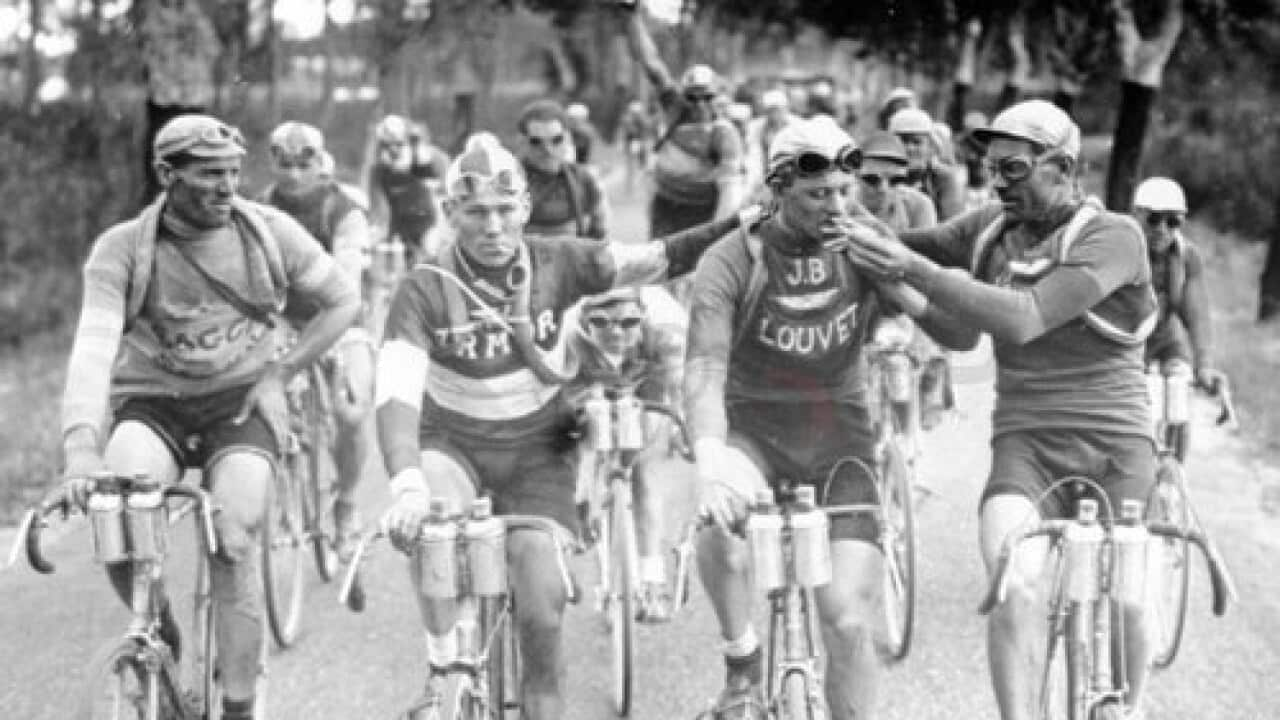
Riders smoked to 'open up the lungs' ahead of key climbs Credit: https://www.reddit.com/domain/i.imgur.com/

How to watch the 2023 Tour de France, Tour de France Femmes LIVE on SBS

Tour de France 2023: Stage-by-Stage
1. An epic race

2. Eating your way around France
3. sweat it out, drink it back, 4. taking teamwork to a whole new level.

806 extraordinary facts and feats that paved the way for Tour de France Femmes
5. The only Australian Tour de France winner

WATCH on SBS On Demand

Cadel Evans Conquering Le Tour S2020 Ep1 - Cadel Evans Conquering Le Tour Part 1 Le Grand Depart

Cadel Evans Conquering Le Tour S2020 Ep2 - Cadel Evans Conquering Le Tour, Part 2 First Big Test, The Pyrenees

Cadel Evans Conquering Le Tour S2020 Ep3 - Cadel Evans Conquering Le Tour, Part 3 Attacking Giants, The Alps

Cadel Evans Conquering Le Tour S2020 Ep4 - Cadel Evans Conquering Le Tour, Part 4 La Route De Paris
6. Margin of victory

7. Controversy
8. performance-enhancing drugs.

9. Started as a way to sell newspapers

10. What's next for the list at the 110th edition of the Tour de France in 2023?

Hindley: A humble Western Australian lad challenging for Tour de France honours
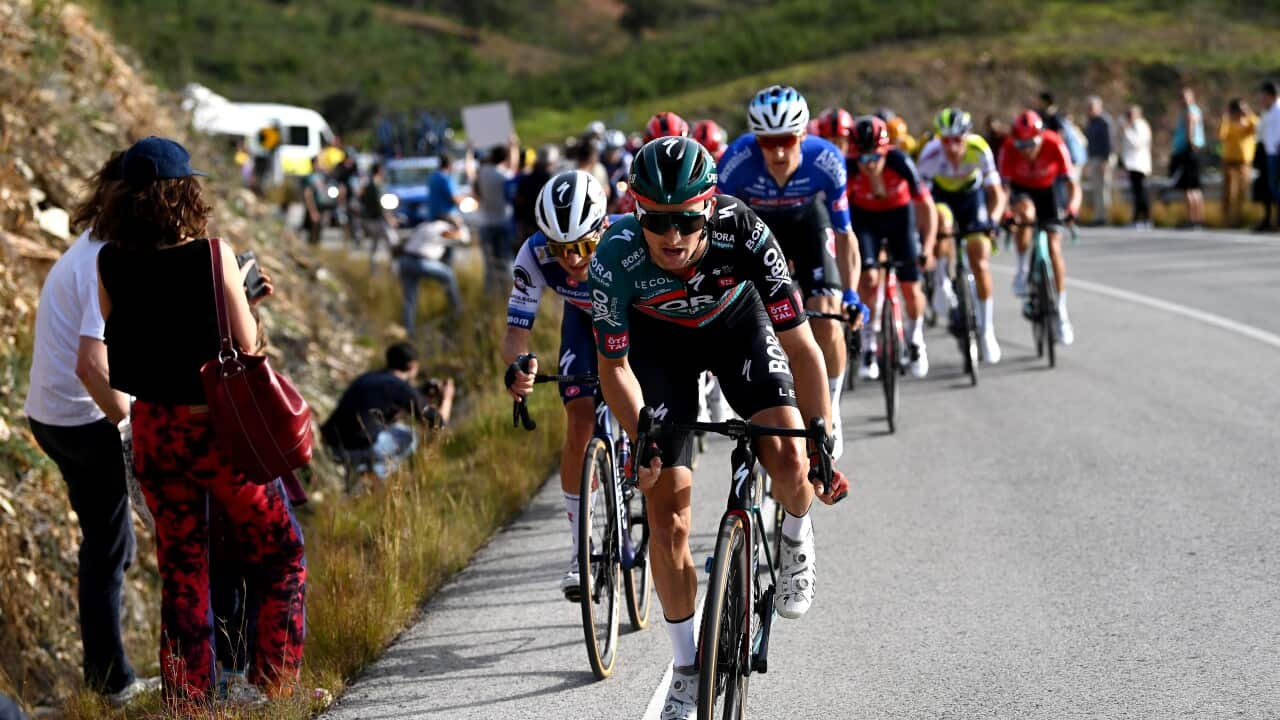
Hindley: Tour de France 'will be a GC fight from day one'
Have a story or comment? Contact Us
Share this with family and friends
Recommended for you

Australian Beach Volleyball Championships 2024 - Women's Gold Medal Match Highlights
Beach Volleyball

Women's Race - Mini Recap - Gent-Wevelgem 2024

Stage 7 - Mini Recap - Volta a Catalunya 2024

Men's Race - Mini Recap - Gent-Wevelgem 2024

Extended Highlights - 2024 Mountain Bike National Championships - Downhill

Extended Highlights - 2024 Mountain Bike National Championships - Cross Country

Australian Beach Volleyball Championships 2024 - Men's Gold Medal Match Highlights

Women's Race - Extended Highlights - Tour of Flanders 2024
Sbs sport newsletter, sign up now for the latest sport news from australia and around the world direct to your inbox..
By subscribing, you agree to SBS’s terms of service and privacy policy including receiving email updates from SBS.
23 amazing facts you didn’t know about the Tour de France
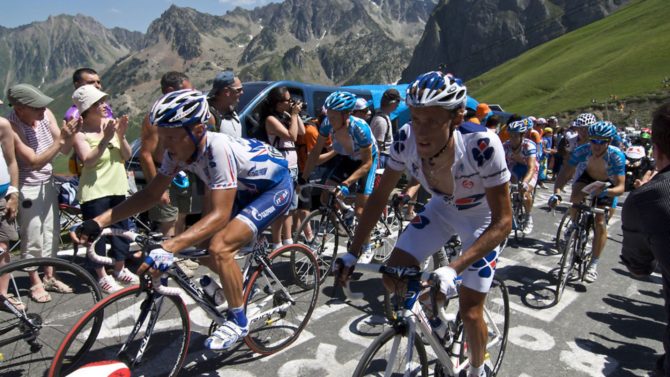
How much do you really know about the Tour de France? Here are 23 amazing facts you probably didn’t know about the Tour de France
1. The race is nicknamed ‘La Grande Boucle’ which means ‘the big loop’ and refers to the route that takes cyclists around France
2. The average cyclist burns between 4,000 and 5,000 calories during each stage of the race. That’s a whopping 123,900 calories for the entire race
3. In the 1920s, riders used to share cigarettes while riding because they were believed to ‘open up’ the lungs before climbs…
4. …and until the 1960s, cyclists used to drink alcohol because it numbed the pain of their aching limbs. This practice was then banned because alcohol was considered a stimulant
_______________________________________________________________________
Related articles
The complete guide to the Tour de France
Picturesque cycle routes across France to try this summer
5. The Tour de France gathers over 12 million spectators who line the route, making it the largest sporting event in the world…
6. …and 3,5 billion people watch the Tour de France on television each year
7. In 1919, only 10 cyclists finished the race, the least of all time
8. This one is a bit irksome but strangely fascinating: over the course of the race, riders will sweat enough water to flush the toilet 39 times!
9. The entire peloton uses around 790 tires over the three-week long race
10. The first winner of the Tour de France was Maurice Garin. He won again in 1904 but was then disqualified for cheating. He was caught taking a train to the Alps for the last stage!
Fun ideas for active weekend breaks in France
Quiz: How much do you know about the Tour de France?
11. The French have taken more winning titles than other nations, totalling 36 wins
12. 4 riders have died during the Tour de France
13. The oldest stage winner was Firmin Lambot in 1922, he was 36…
14. …and the youngest was Henri Cornet in 1904, he was only 19
15. In 2014, the average speed for riders was around 41km/h
16. The shortest winning margin was of 8 seconds between American Greg Lemond and Frenchman Laurent Fignon in 1989
17. In 2013, riders climbed the equivalent of Nevis, Scafell Pike, Snowdon, Mont Blanc, Kilimanjaro and Everest
18. Each team comes to the Tour de France with supplies that include 3,900 nutrition bars, 3,000 water bottles, 80kg of nuts, raisins, apricots and figs and…20 jars of jam!
19. Around 13,000 gendarmes are mobilized for the duration of the race
20. 1,200 hotel rooms are booked for teams, staff, press and Tour personnel.
21. On rest days, most cyclists don’t actually rest but hop onto their bike for a couple of hours to stop lactic acid from building up in their muscles and to stay focused
22. Jean Robic, winner of the 1947 Tour, drank lead-filled water bottles at the top of climbs to descend faster
23. The longest edition of the Tour de France was the 1926 race which totalled 3,570 miles
Do your own Tour de France and find out more about cycling in France
Share to: Facebook Twitter LinkedIn Email
Related Articles
The perfect gift for francophiles: france today membership, 2023 french christmas gift guide, 10 reasons to visit the french property exhibition in london in january 2024, by sophie gardner-roberts.
30 Interesting Facts About The Tour de France
For over 100 years, the Tour de France has been called the most famous and difficult bicycle race in the world! Every summer, this race crosses France for 3 weeks and attracts 12 million spectators along the roads, and 3 million in front of their television.
But, did you know that the riders pee while on their bikes during the race? Or that there are no women competing?
Learn more thanks to these 30 interesting facts about the Tour de France ! 🚴
TABLE OF CONTENTS
The Best Tour de France Facts
Fun facts about the tour de france, more facts, the full list of 30 tour de france facts.
The Tour de France is famous worldwide. It is an intense cycling competition that lasts for weeks, and that has a huge fanbase.
I have 30 Tour de France facts for you, starting with the 20 general best ones.
1. The Tour de France is one of the most coveted sports event in the world
In case you didn’t know it, the Tour de France is very, very popular. This very long race is followed by around 12 million spectators each year, making it one of the largest sporting events on the planet .
Only two other events are more popular. The FIFA World Cup is, opposite to what most people think, not the #1 event, but it still gathers 3 billion people from 32 countries. What could possibly be more popular than this? Well, the Summer Olympics obviously!
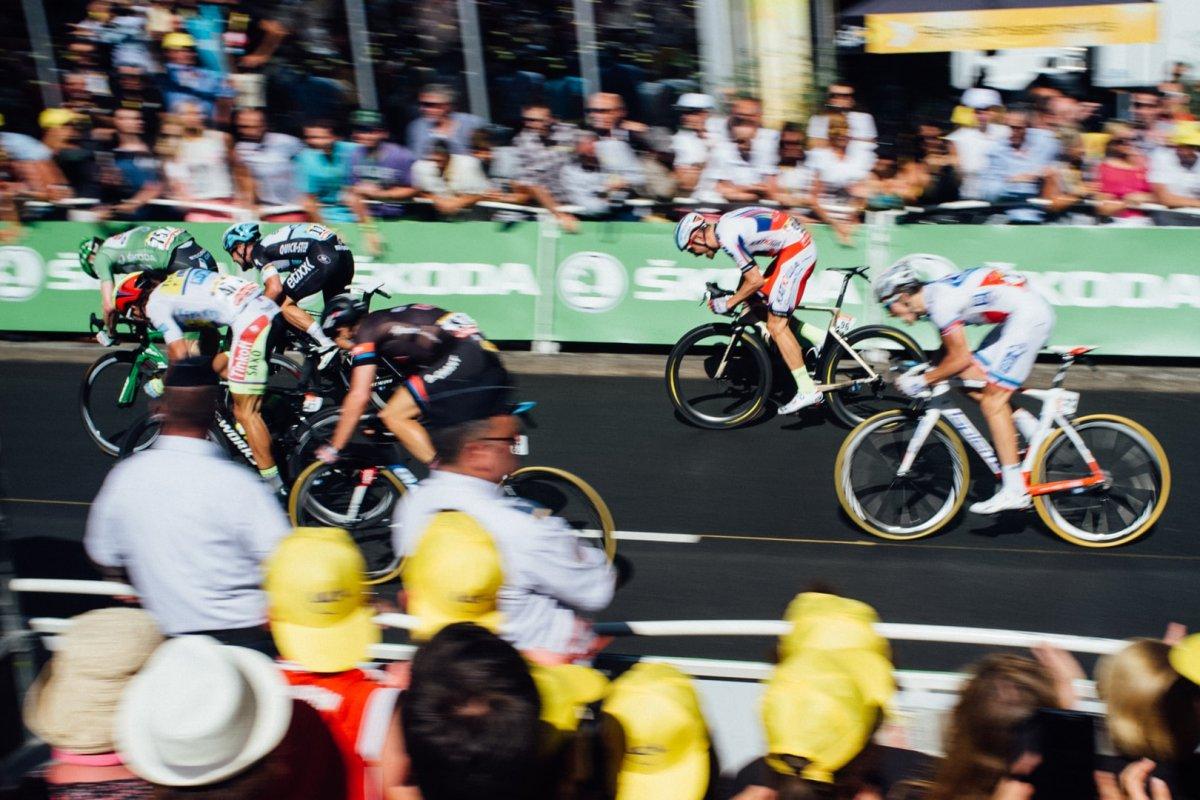
2. The Tour de France riders pee while on their bikes, you just can’t see it
Have you ever wondered how the Tour de France riders never wanted to pee for hours, during three weeks? Well, there’s your answer: they do!
Though this is obviously not shown on TV, riders pull to the side of the road and do their business. They tend to do this in the first 5 to 10 minutes of the race, when the pace is very leisurely. Because of how hot it is in July, they need to hydrate a lot, so they do not really have any other choice.
3. The most famous legend of the Tour de France is now considered the incarnation of evil
When you think about the Tour de France, one of the first names that sprints to mind is Lance Armstrong . The man is arguably the most famous cyclist of all times, and he won the Tour de France seven times in a row, from 1999 to 2005.
However, in 2012, it was confirmed that he was taking drugs during most of his career. It is said that he took part in one of the most efficient, professional and advanced programs to ever happen in sports history. Because of that, all of his titles were taken away from him, and he now has a very poor reputation.
4. The reason behind the leader’s jersey being yellow is actually very simple
You might have thought a lot about the symbolism behind the leader’s jersey being yellow during the Tour de France. Maybe it’s supposed to represent the sun, like the most famous King of France, Louis XIV? Or yellow was associated with highness, sacredness and might?
Not at all, stop thinking too much! As a matter of fact, the Tour de France originates from a newspaper (more about that in fact #24), which was printed on yellow paper… so it was all an advertising strategy!
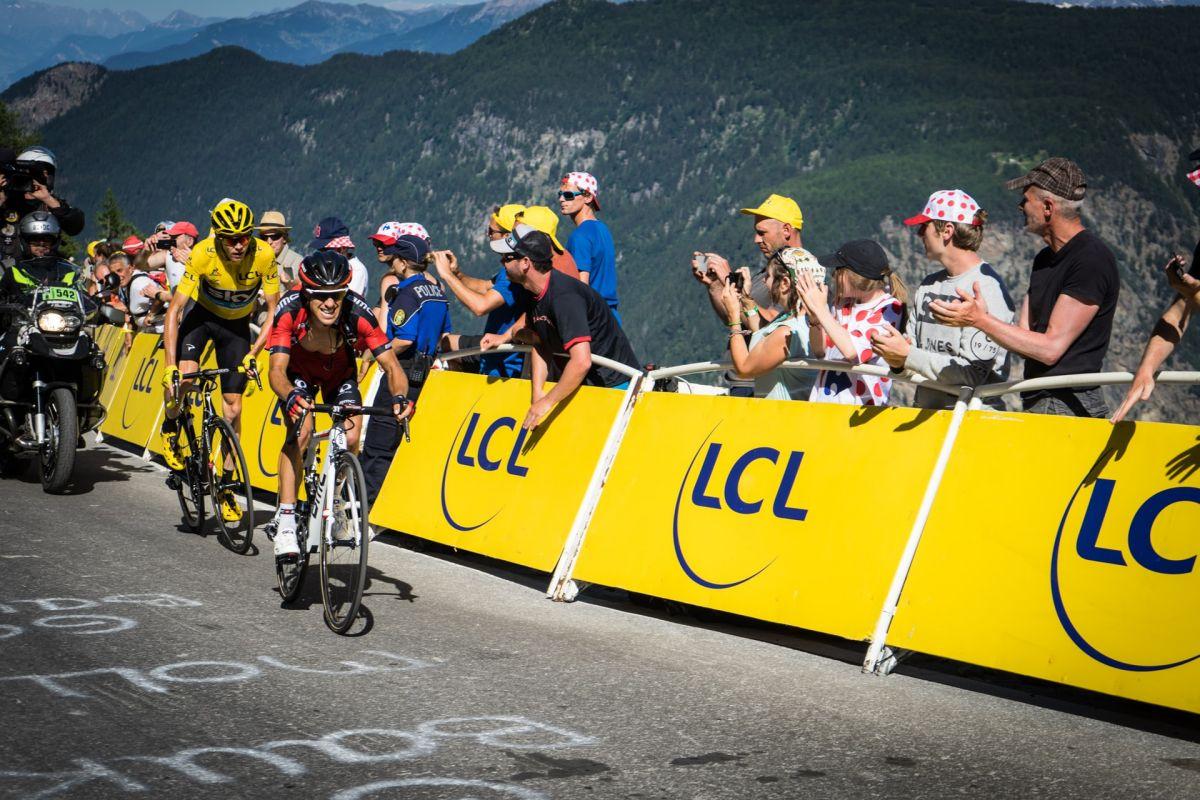
5. The Tour de France riders never really rest… even during rest days
The Tour de France is very exhausting, and almost never stops for three weeks. On top of that, it happens in the middle of summer, which is one of the worst times of the year to go for a ride. Because of that, you might think that rest days are sacred, and riders literally don’t do anything, but the opposite happens!
Actually, riders… ride on rest days. They simply have to do it, otherwise their legs would cramp up very quickly. The rides are relatively short (still up to 3 hours), and help keep muscles ready for the next hard day.
6. The prize money for the Tour de France is very high
As you may expect, because of how many people watch the Tour de France every year, it is not a huge surprise that the prize money is very high.
At the moment, the winner in the final individual general classification gets 500,000€, or $560,000. The tradition is for the winner to share the prize with their teammates. Second and third place are awarded respectively 200,000€ and 100,000€. There is a total of 3.5 million euros / 4.3 million dollars, spread through all other categories.
7. Racers decide on a very precise tire pressure before starting the Tour de France
Teams are made of several racers and mechanics. Each of them has a specific tire pressure they consider the best, but this data usually stays top-secret.
There are still general guidelines though. For road stages, the average pressure ranges from 8 to 8.5 bar. For the time-trial stages, it raises up to 9.5 to 10 bar. Just keep in mind that everything is thought through, and while you might not see it, teams work during the whole year to get the best performances out of their bikes.
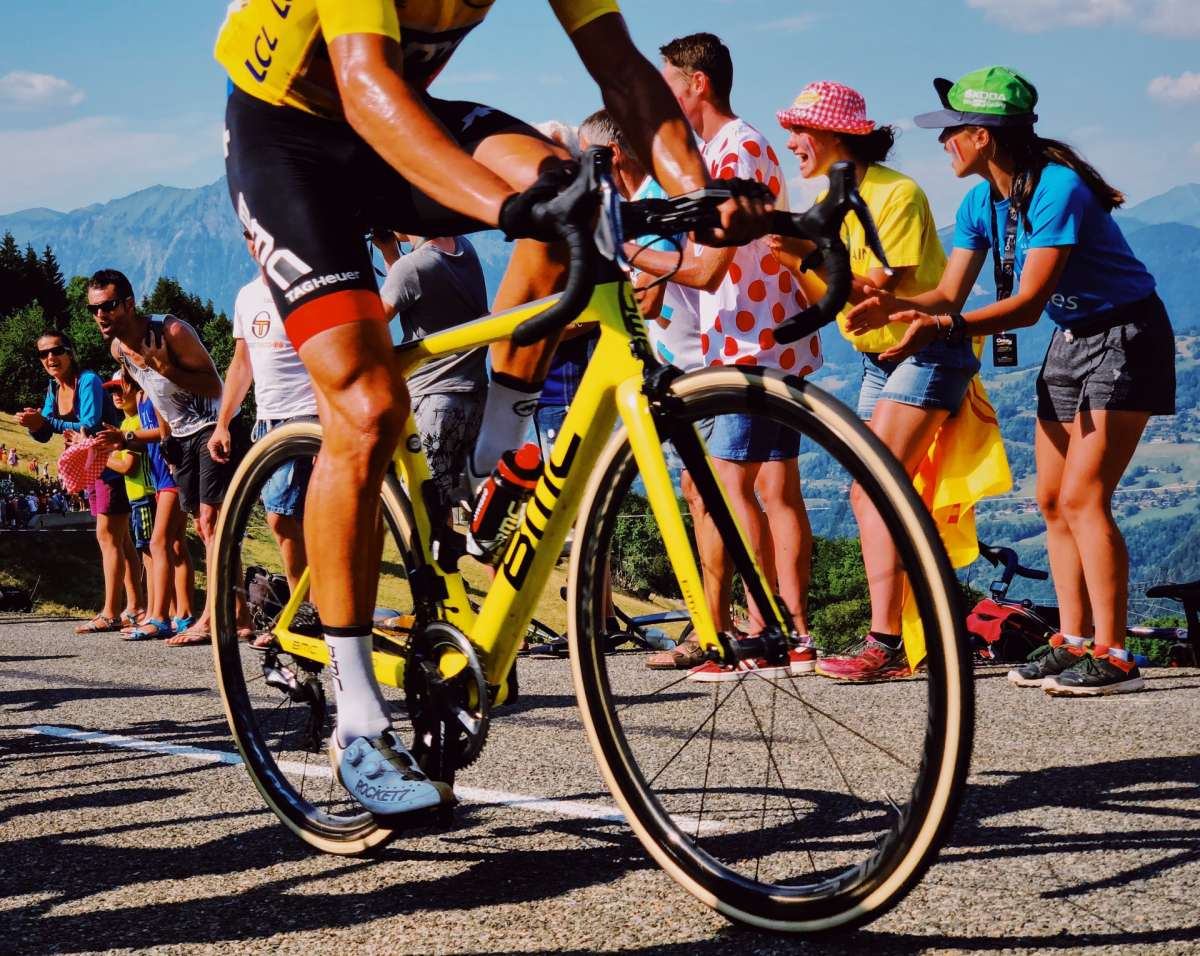
8. There are very few Americans competing in the Tour de France
This might sound weird to you, but in such a worldwide competition as the Tour de France, there are very few Americans. But if you go to the United States, you will quickly see why: there simply are not that many cyclists enjoying the grinding part of it!
Historically, cycling has been more of a hobby than a competition for most Americans. In Europe, youngsters are being prepared for competition from a very young age. The state of mind is what it’s all about.
9. The route of the Tour de France changes every year
In case you didn’t know it, the Tour de France is different every year. This means that if you live in France (or even in the neighboring countries!), you should have a look at the route of the year: maybe you can see the cyclists right next to you.
However, there are still lots of things staying the same from year to year. The race is held in July traditionally, and the format does not change, with time trials, and passage through the mountains of the Pyrénées and the Alps. The race always ends on the Champs-Élysées in Paris .
10. There are lots of different categories of winners in the Tour de France
During 3 weeks, 20 to 22 teams of 8 riders compete in France to get the best timers. At the end of each stage, everything is timed. The one rider who has the lowest cumulative timings wears the famous yellow jersey.
There are other unique jerseys as well: the green one is for the best sprinter, the dotted white is for the best climber (or best cyclist in the mountains) and the white one is for the best young cyclist (less than 25 years old). All of these change depending on the rankings.
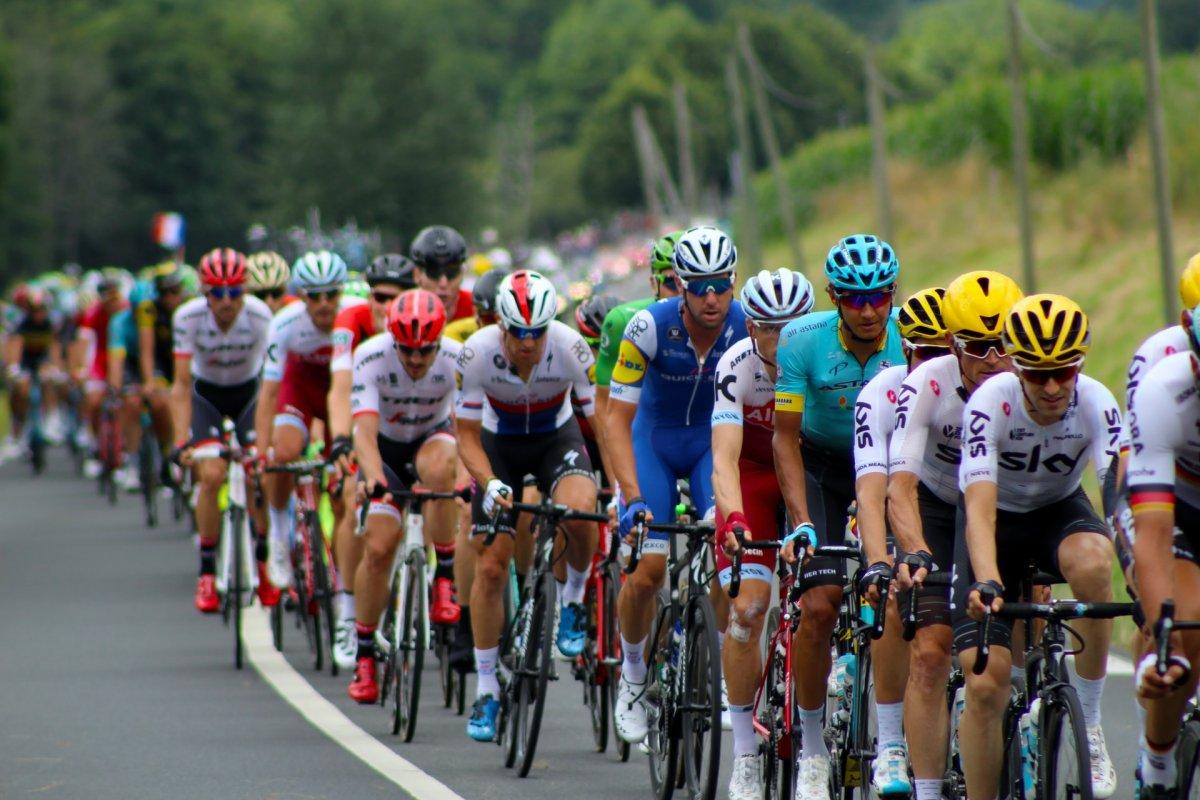
11. There is a “Tour of Italy” as well: the Giro
A few years after the first Tour de France, the Giro d’Italia was created by La Gazzetta dello Sport, a local newspaper. The color of the paper is famous all over the country, as it is very pink compared to the dull black and white classic ones. Because of that, the leader of the race wears a pink jersey!
The first edition took place in 1909, and nowadays you can still watch it every year, usually in May.
12. Politics influenced the Tour de France a while ago
Today, the Tour de France often reaches neighboring countries, but for the first three Tours, they all stayed within France. The fourth edition went into Alsace-Lorraine, at that time a German territory (nowadays it is French).
In 1939, Italy, Germany and Spain were banned from the Tour de France because of their nationalist approach, and as part of the tensions right before World War II. The first German team who won the Tour after the war was in 1960.
13. More and more editions of the Tour de France are starting abroad
While it was not before 1954 that the Tour de France started abroad (in Amsterdam, Netherlands), there are more and more cities, sometimes very far from France, that host the beginning of the race.
The most recent of them was in Brussels, Belgium in 2019, and the 2022 and 2023 editions are planned to start in Copenhagen, Denmark and Bilbao, Spain. In 1998, it even started across the sea in Dublin, Ireland!
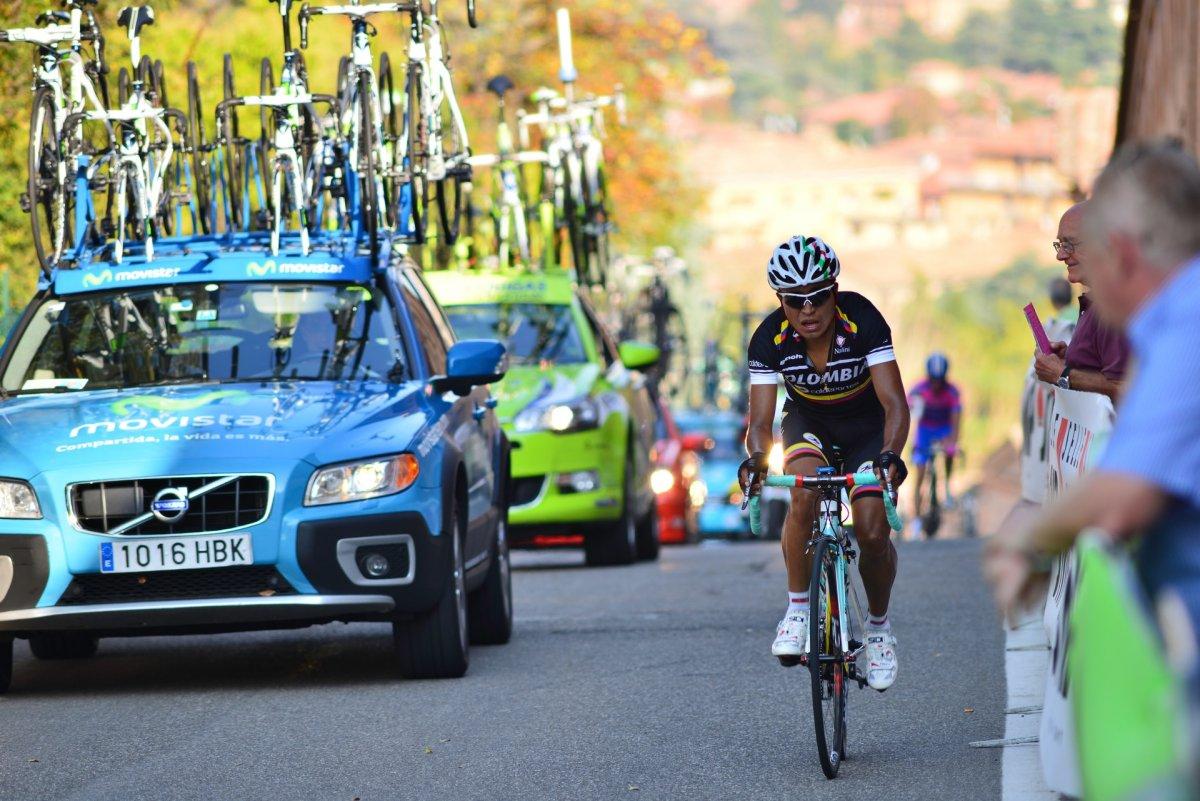
14. The Tour de France is sadly synonymous with doping
Ever since the Tour de France started in 1903, there have always been a ton of allegations of doping. In fact, the Tour is plagued with it and most people think every cyclist is at least a little doped.
In the early editions though, some of the drugs the cyclists used were very dangerous. These include cocaine, chloroform, ether, strychnine, aspirin and alcohol. The 1998 Tour was nicknamed the “Tour of Shame” because of the number of drugs used.
15. Eddy Merckx is a legend among Tour de France cyclists
Lance Armstrong is not the only successful cyclist in the Tour de France, and Eddy Merckx is definitely one of the best after him.
In 1969, for his first Tour, he won everything . He technically had to wear all the different jerseys, and was simply the best in every possible category! He is tied with Jacques Anquetil, Bernard Hinault and Miguel Indurain for the most wins of the Tour (5 each).
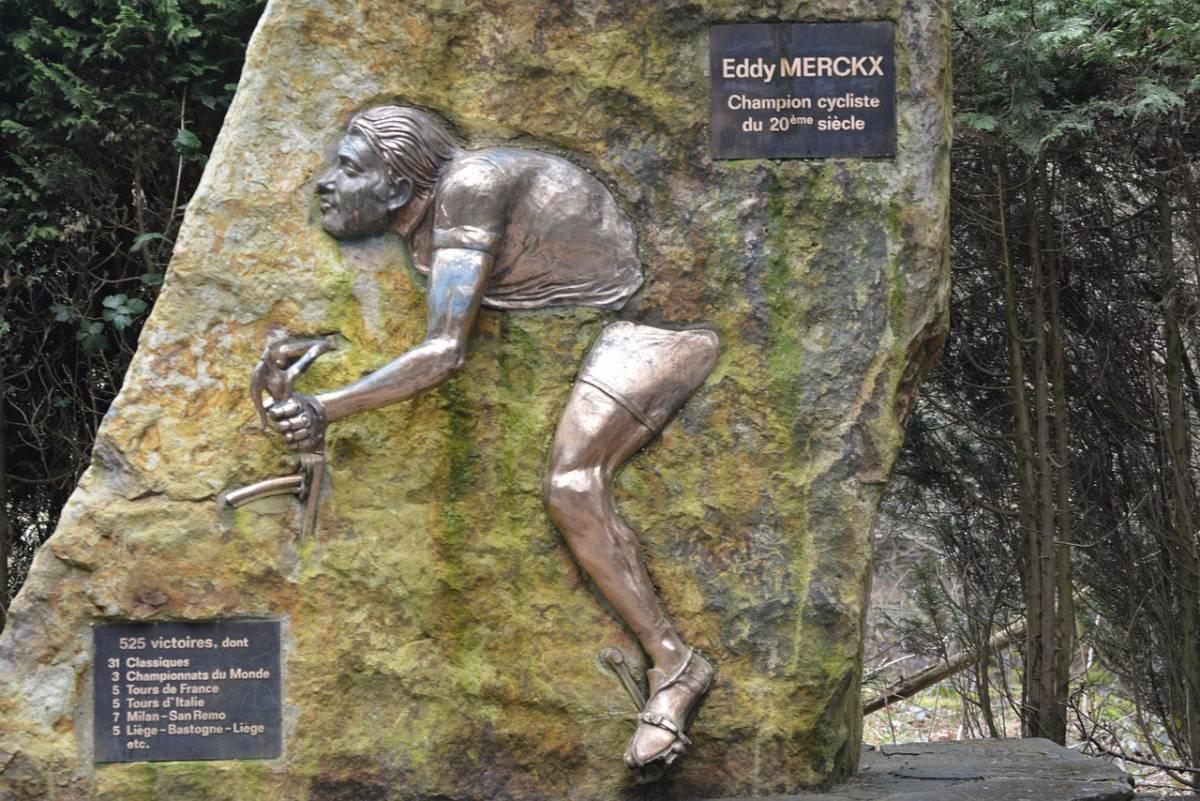
16. Broadcasting for the Tour de France started small, but is now very important
When it first began, the Tour de France was only broadcast by the journalists from “L’Auto”, which is the organizer.
In 1929, the Tour was broadcast on radio for the first time, by the newspaper “L’Intransigeant”. In 1948, the finish at the Parc des Princes in Paris was the first live broadcast. Today, you will see armies of journalists from all TV channels and newspapers wherever the Tour is. You can see it on TV in many countries, from start to finish.
17. Because France is so small, we don’t realize how long the Tour de France is
The riders of the Tour de France ride for three weeks in the relatively small country of… France. Because of this, you probably don’t fully grasp how hard this race is. Not only do cyclists ride for lots of hours every day, but the weather is usually very hot and the terrain can be very uneven.
If you were to cycle in a straight line for the same distance as these riders, you would go from St Petersburg, Russia to Rome, Italy; from Manchester, UK to Istanbul, Turkey; from Orlando, Florida to Phoenix, Arizona. 3,218 km / 2,000 miles!
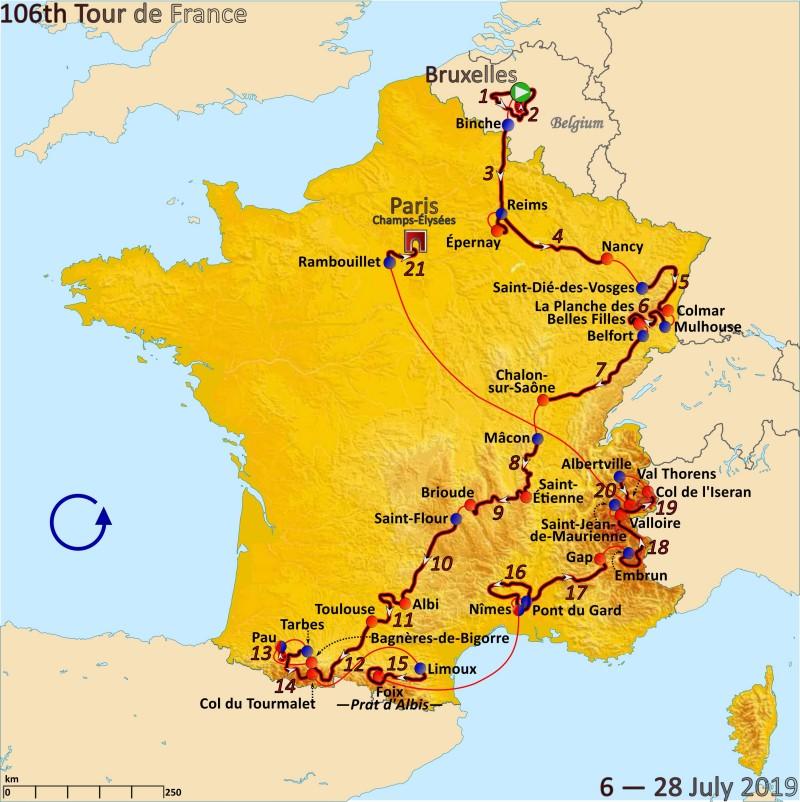
Andrei Loas / CC BY-SA
18. Cyclists now ride way faster than in the past
During the first edition, the winner, Maurice Garin, had an average speed of 25.67 km/h / 15.95 mph for the whole race. In 2019, Egan Bernal finished the 3,365.8 km / 2090.9 miles race in 82 hours and 57 minutes, so his average speed was… 40.58 km/h / 24.85 mph!
All of these things have only gotten more optimal through time: equipment, road quality, diets, training and… probably doping.
19. The Red Devil closely follows the Tour de France every year
Dieter Senft , known as “El Diablo” or “Didi the Devil”, is an icon of the Tour de France. He has been wearing a devil costume every year since 1993, and has gathered his own group of fans!
Not only is he a true cycling fan from Germany, but he also became an important symbol for the Tour.
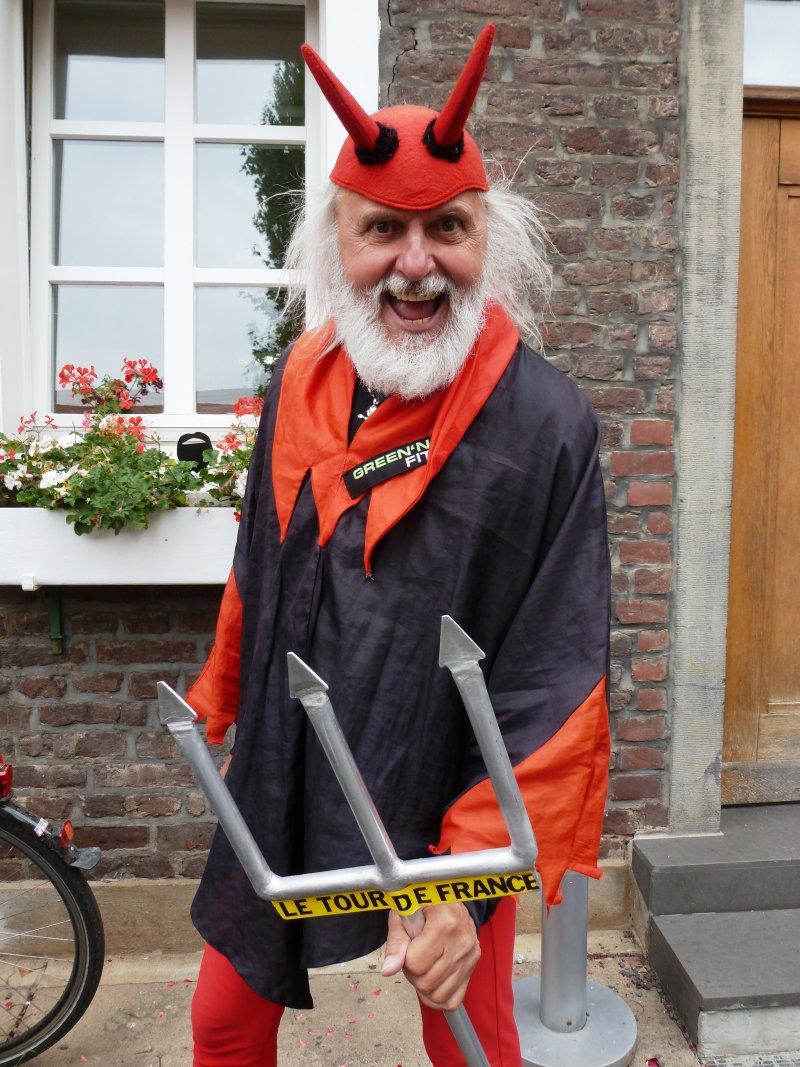
Nicola / CC BY-SA
20. There were several casualties during the Tour de France
Sadly, because of how fast cyclists ride, and for how long the competition goes, it is not very surprising that several of them died.
Tom Simpson died of a heart attack in 1967 because of doping. Francisco Cepada crashed into a ravine in 1935. Finally, Fabio Casartelli hit a concrete pylon when he failed to make a turn in 1995. There was also an accident in 1964, involving a truck who crashed through a wall of spectators and killed 20 people.
So that’s it about the 20 best general facts on the tour de France!
Enough about the sad things though, let’s move on to the fun side of it now.
Here are some Tour de France fun facts you’ll like to known about.
21. Most teams take a lot of time to prepare themselves before the Tour de France
When you are biking all around the country for several weeks, you should be prepared! Not only do you need to be ready physically, but you also need to store a lot of food and drinks.
That’s why each team brings around 3,900 nutrition bars, 20 jars of jam and 3,000 water bottles. Add a bit of nuts, raisins, apricots and figs, let’s say 80 kg / 176 lbs of each, and you’re good to go!
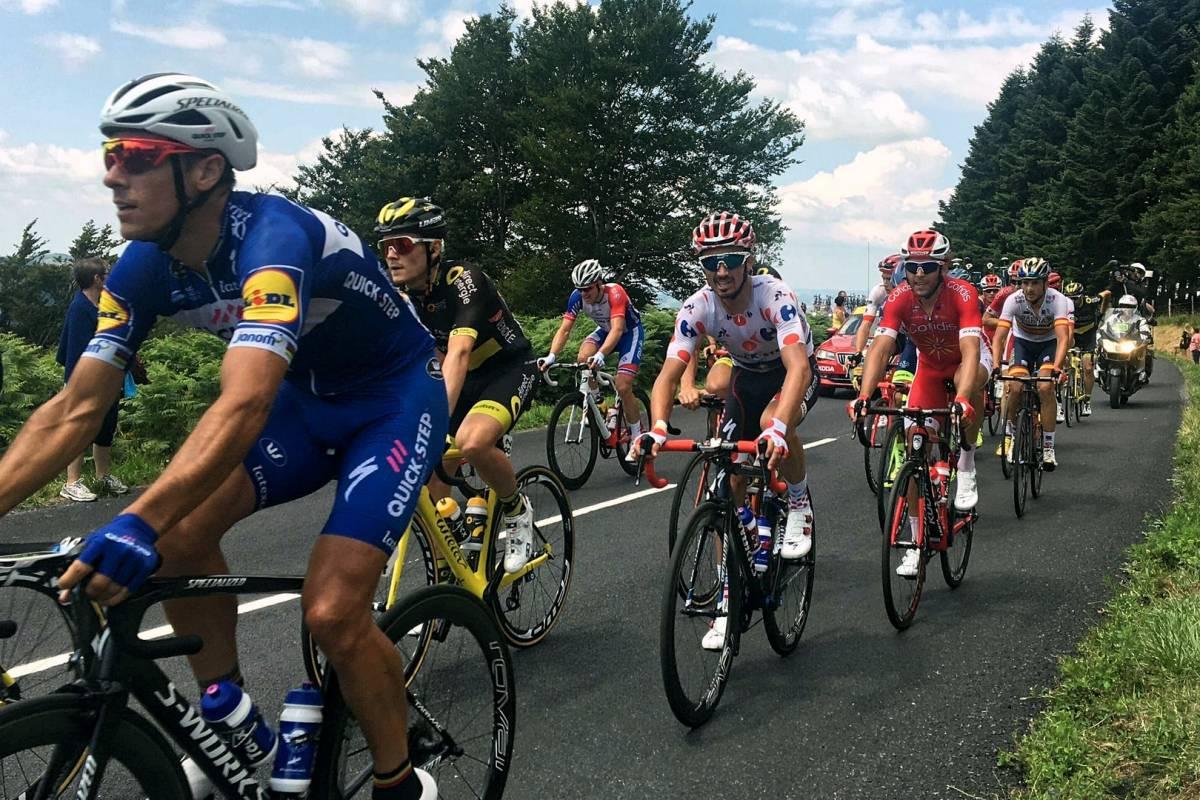
22. Alcohol was used during the Tour de France a long time ago
Some past beliefs can be very hard to… believe. During the early races, lots of cyclists used to take breaks in villages and drink alcohol! With how long and how hard the race was, they needed to ease pains. Because materials and training were way worse back in that time, I guess you can understand them.
However, this was banned in 1960, because alcohol was said to be a stimulant actually. Now, you drink water and that’s it!
23. Cigarettes were also in use while riding in the Tour de France
The beginning of the 20th century is quite famous for having introduced alcohol and cigarettes as a common practice. Wherever you would go, you would see mostly men either drinking or smoking. This can be seen in lots of movies and series, like the recently famous “Peaky Blinders” .
Well, this practice sadly spread to the Tour de France, where competitors actually shared cigarettes while on the bike! They thought it would help open up the lungs, and used them before the hardest climbs.
24. The Tour de France started as… a marketing scheme
That’s right, the Tour de France was not always “just” a bike race. Instead, when Henri Desgrange created it back in 1903, the aim was to advertise paper around France, and it was a marketing scheme! The Tour de France was first announced in the newspaper “L’Auto”, and Desgrange was its editor.
This is not what you would expect from such a coveted event, but it became so popular that people barely remember what it used to be. Paper advertised and competition created, so that’s a win-win situation!
25. There were lots of cheaters in the first editions of the Tour de France
The Tour de France was created in 1903. This means that technology was very poorly developed, and that there was not any way to make sure no one was cheating.
And because of that, well, people cheated. A lot of them actually. The 1904 edition is famous for having the youngest winner of the Tour de France in history: Henri Cornet was only 19. However, in that same year, the 4 first competitors were disqualified because they used trains during the race!
26. There are no females in the Tour de France
The Tour de France is totally sexist! Whether you like it or not, women cannot participate in the world famous race. Not very progressive, huh?
Well, that’s the reality. Just like for any other sports, the classic sexist arguments are being used: women are not as strong as men and they do not bring enough revenue. In fact, there was a female version that happened every year from 1984 to 1989… but no one noticed it!
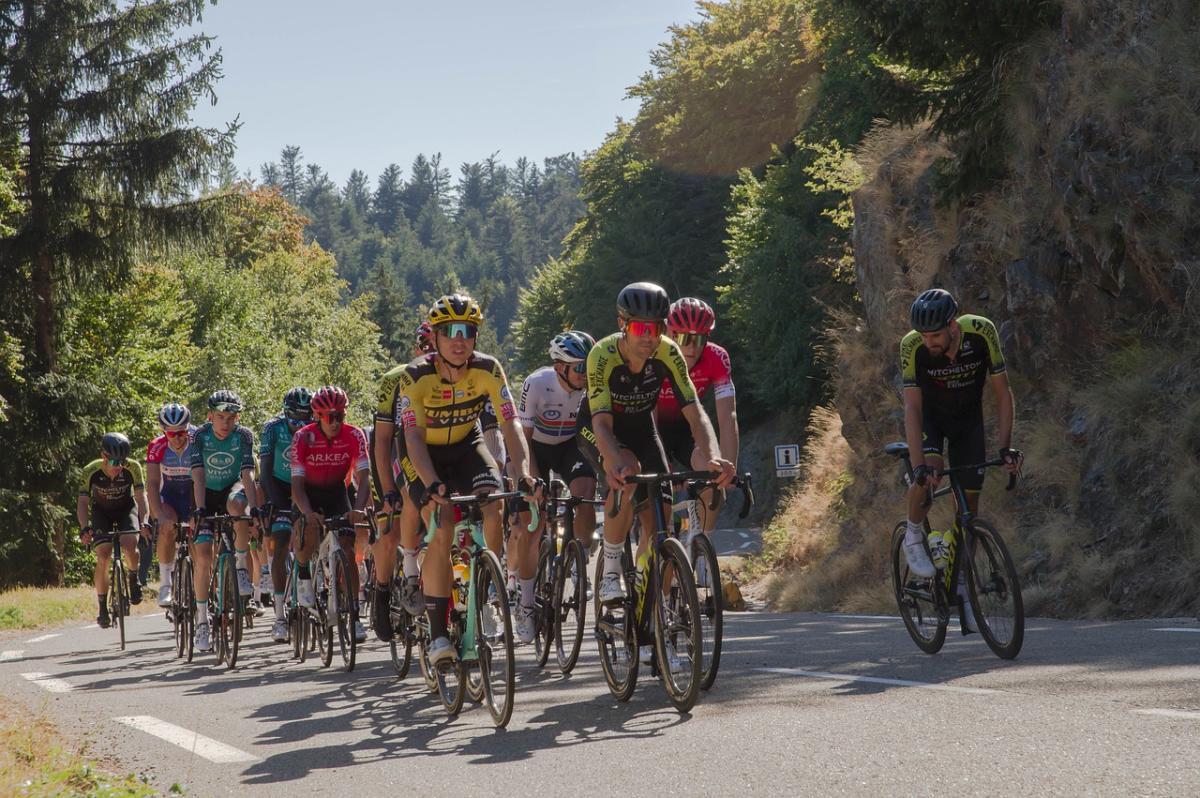
27. 1904 was a year full of cheaters
I already told you about the story of the trains during the 1904 Tour de France edition. But there was more in that very same year.
Hippolyte Aucouturier tried a supposedly discrete method: he tied a piece of cork to a long string, and the other end was tied to the back of a car. He wanted to be towed by the car without getting his teeth ripped off, but someone saw the string. Also, when Antoine Fauré passed through his hometown, 100 fans ran in the streets to block his opponents, who had to get off the bike and walk through the crowd.
28. Another famous cheater was Jean Robic
Jean Robic was nicknamed “the Hobgoblin”, because of his very slight stature. He was one of the best climbers, but during descents, he was one of the slowest ones. He became famous for having drunk bottles filled with metals like lead to gain enough weight for the descent. Robic reached amazing speeds because of that!
Just in case: you should not do this at home, whatever the reason. Unsurprisingly, metals are very bad for your body.
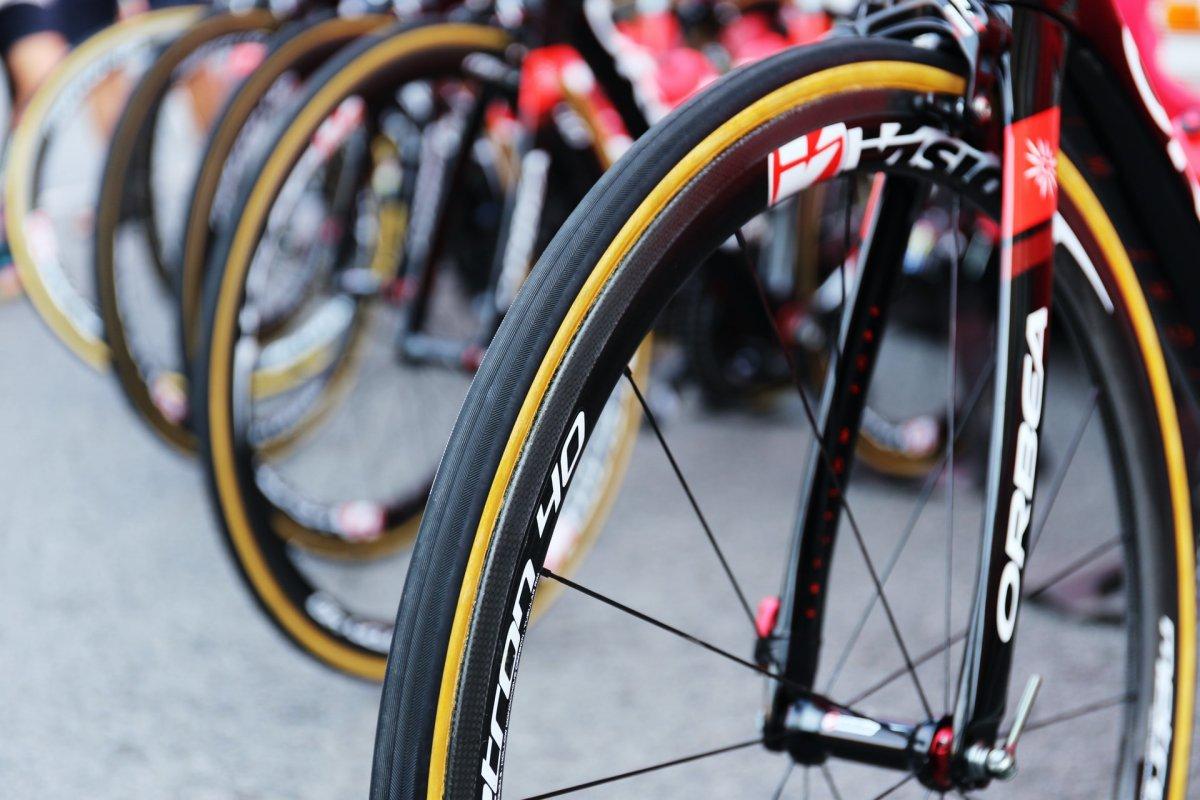
29. Bikes have changed a lot since the beginning of the Tour de France
Nowadays, bikes look very cool, are very light and allow you to go very fast. They are optimized each year by thoughtful scientists, and every inch of them is upgraded to remove as much air resistance as possible.
However, that was not always the case. Before 1937, cyclists had to get off their bikes just to switch gears. On top of that, the first bikes were very heavy, sometimes weighing up to 18 kg / 39 lbs. Compare it to the 7 kg / 15 lbs of today, and you can easily understand why the current records are way better than the first ones.
30. The Tour de France was created in 1903, but didn’t take place every year
In 2000, the Tour de France #87 took place. That’s right, not 97! This is not a mistake, don’t worry. In fact, the race was abandoned because of both World Wars.
In case you didn’t know, World Wars were the bloodiest conflicts of the 20th century, especially in France. The whole country was rallied to fight against the enemy, and for obvious reasons, it was completely impossible for cyclists to ride through France.
So there you have them, these were all my 30 interesting facts about Tour de France. I hope you enjoyed them and that you learned something new today.
In case you want to learn more about the rest of the country, feel free to keep reading, as I still have lots of things to tell you about. 👇
Loved these facts on Tour de France? Well, I have other France facts posts I’m sure you’ll love reading!
Here is the main guide of the best France facts 👉 The 60 Best Facts about France
Check out these France facts by city :
- Facts about Paris
- Facts about Lyon
- Facts about Marseille
- Facts about Strasbourg
- Facts about Nice
- Facts about Bordeaux
- Facts about Toulouse
- Facts about Cannes
Or these French facts by region:
- Facts about Brittany
- Facts about Normandy
- Facts about Corsica
- Facts about French Guiana
- Facts about Guadeloupe
- Facts about Martinique
You can also check these French facts by topic :
- Facts about French food
- Facts about French people
- Facts about French schools
- Facts about the French language
- Facts about Easter in France
- Facts about French cheese
- Facts about fashion in France
- Facts about Christmas in France
- Facts about the French Alps
- Facts about Disneyland Paris
Or click here to see ALL the facts up on the blog! Spoiler alert: there’s A LOT of them.
- The Tour de France is one of the most coveted sports event in the world
- The Tour de France riders pee while on their bikes, you just can’t see it
- The most famous legend of the Tour de France is now considered the incarnation of evil
- The reason behind the leader’s jersey being yellow is actually very simple
- The Tour de France riders never really rest… even during rest days
- The prize money for the Tour de France is very high
- Racers decide on a very precise tire pressure before starting the Tour de France
- There are very few Americans competing in the Tour de France
- The route of the Tour de France changes every year
- There are lots of different categories of winners in the Tour de France
- There is a “Tour of Italy” as well: the Giro
- Politics influenced the Tour de France a while ago
- More and more editions of the Tour de France are starting abroad
- The Tour de France is sadly synonymous with doping
- Eddy Merckx is a legend among Tour de France cyclists
- Broadcasting for the Tour de France started small, but is now very important
- Because France is so small, we don’t realize how long the Tour de France is
- Cyclists now ride way faster than in the past
- The Red Devil closely follows the Tour de France every year
- There were several casualties during the Tour de France
- Most teams take a lot of time to prepare themselves before the Tour de France
- Alcohol was used during the Tour de France a long time ago
- Cigarettes were also in use while riding in the Tour de France
- The Tour de France started as… a marketing scheme
- There were lots of cheaters in the first editions of the Tour de France
- There are no females in the Tour de France
- 1904 was a year full of cheaters
- Another famous cheater was Jean Robic
- Bikes have changed a lot since the beginning of the Tour de France
- The Tour de France was created in 1903, but didn’t take place every year
Share the knowledge! Click on the buttons below to share these facts with your friends, and help them learn more about the world 🙂
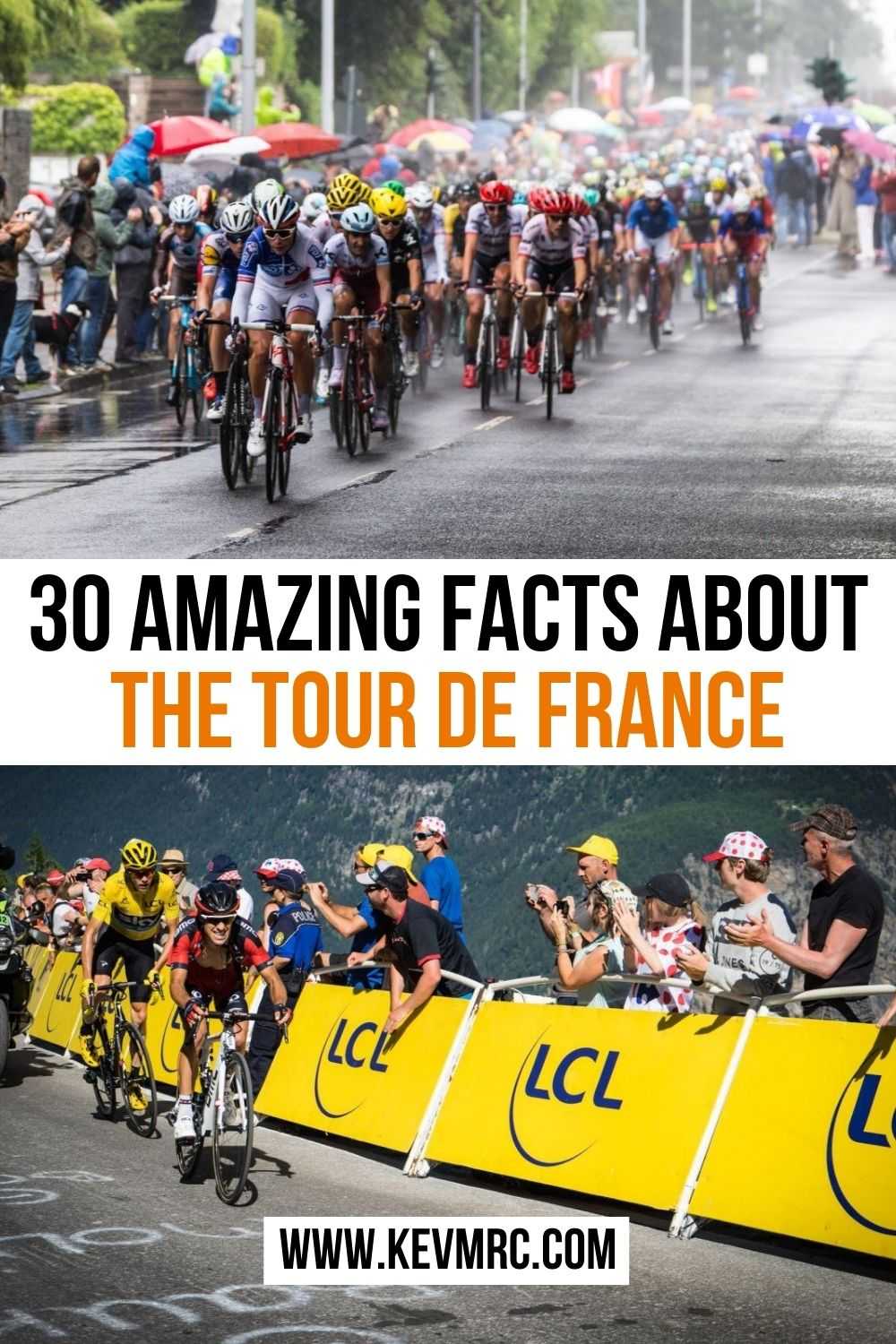
Pin this to Pinterest!
Enjoyed this guide? Then help a fellow traveler and pin it! They'll most definitely love you for it, 100% guarantee.
Pin It Now Follow Me on Pinterest
Hey, I'm Kevin

I'm a professional photographer, with over a decade of experience in the travel industry. I worked with countless travel brands, and my travel advice has been featured in major publications such as CNN, Forbes & the New York Magazine. But the best travel advice is definitely found here on my website! I'm all about adventure travel, hiking and exploring the outdoors - even if I often find myself exploring cities with my wife Nesrine. If you have any questions, leave a comment on this post or reach out by email at: [email protected]
Come say hi on social!
Countries I've visited
Recommended Reading
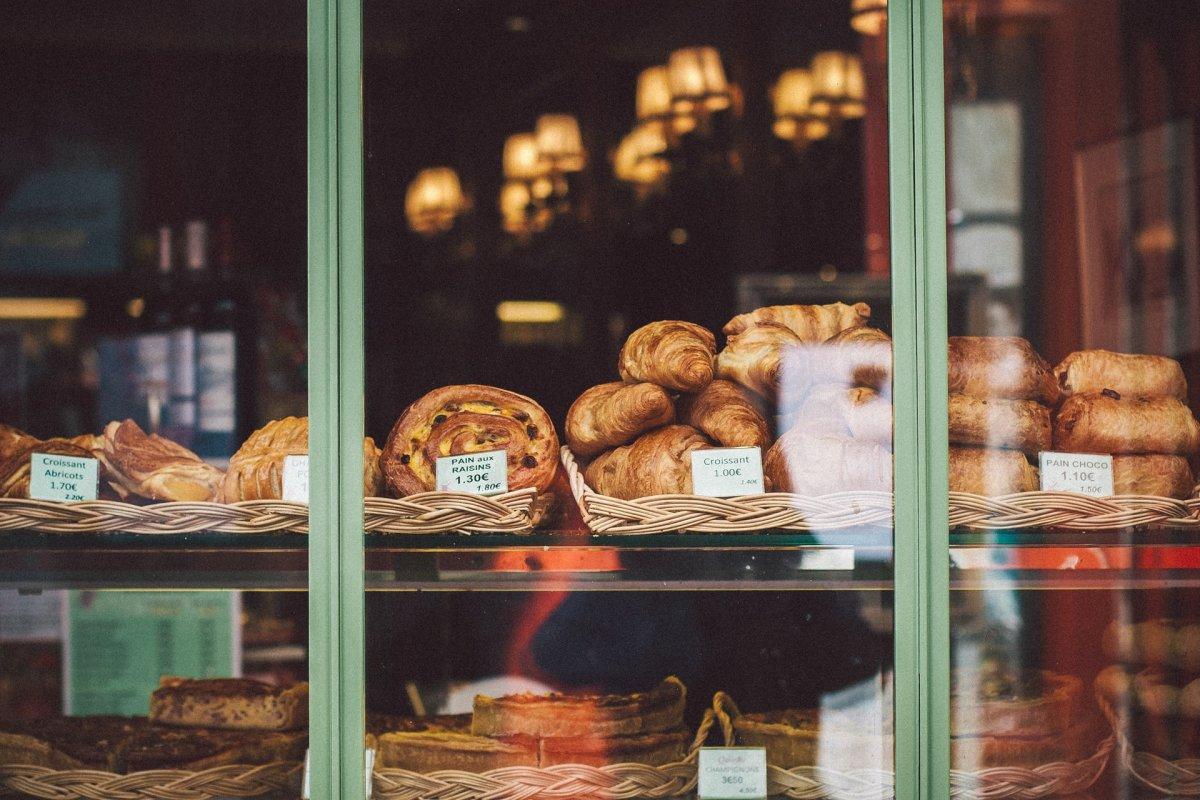
Leave a Reply Cancel reply
Your email address will not be published. Required fields are marked *
Notify me when new comments are added.
- Spring Classics
The Tour De France: 8 Unwritten Rules, Obscure Regulations & Weird Facts!
- Share on Facebook
- Share on Twitter
The Tour de France, the most fantastic race on earth. For the month of July, cycling fans are glued to the action. In this video, we will list a few of the weirder facts you may not know about The Tour de France. We've also enlisted the help of GCN+’s own Cillian Kelly to dive into some of the lesser-known historical facts of this crazy race.
0:00 - Intro 1:12 - Podium dress code 1:36 - Keeping cool 2:11 - Unwritten rules 3:19 - Historical facts 7:23 - Team cars 8:18 - The party stage 9:07 - Time cut 10:07 - Time gaps
Useful Links: GCN+ | Every. Unmissable. Moment. 👉 https://gcn.eu/9jv Download the GCN App for free 👉 https://gcn.eu/app Visit the GCN Shop 👉 https://gcn.eu/french-casuals Join the GCN Club 👉 https://gcnclub.com GCN Training Plans 👉 https://gcn.eu/gcntp
Are you tuning in to the Tour de France? 🚴 Let us know in the comment section below! 💬
Watch more on GCN... 📹 Tadej Pogačar’s Tour De France Training Secrets 👉 https://youtu.be/Hyx49FCjQmY 📹 Watch our Editor’s Choice Playlist 👉 https://gcn.eu/editorschoice 📹 Or why not check out our Features Playlist 👉 https://gcn.eu/gcnfeatures
🎵 Music - licensed by Epidemic Sound 🎵 Whip Whoosh 4 - SFX Producer Accessing the Stratosphere - Christian Andersen Bulking Season - Timothy Infinite Dowel Swishes 11 - SFX Producer Get in Here - Smartface Grand Theft (Instrumental Version) - Katori Walker Prisma - Ben Elson Smokeshow - Jobii Soft Glare - Mar Vei Solid Centre - Dusty Decks Speaker Pop Home 1 - SFX Producer Speaker Pop Home 2 - SFX Producer Too Humid - Dylan Sitts Vice City - Ben Elson
#gcn #cycling #roadcycling #roadbike #bike #bikes #bikelife #tourdefrance #tdf2023 #tourdefrance2023
📸 Photos - © Velo Collection (TDW) / Getty Images & © Sprint Cycling Agency
The Global Cycling Network (GCN) is the largest online cycling channel in the world, bringing together a global community of road cyclists to celebrate everything that’s great about the world of cycling.
Our videos bring fans compelling daily content including expert tutorials, techniques, training, racing, cutting-edge bike tech, unparalleled behind the scenes event coverage, humour, entertainment, and more.
Presented by ex-pro riders, GCN offers a uniquely qualified insight into the world of cycling, and most importantly it’s fuelled by our passionate and enthusiastic fans – everyone who makes up the GCN community. We also bring the latest and greatest tech to your attention, showcase the best places in the world to ride and get exclusive access to events and races.
Welcome to the Global Cycling Network | Inside Cycling
Thanks to our sponsors: Pinarello Bikes: https://gcn.eu/Pinarello Zipp Wheels: https://gcn.eu/Zipp Topeak Tools: http://gcn.eu/Topeak Canyon Bikes: http://gcn.eu/-Canyon Pirelli Tyres: https://gcn.eu/Pirelli Orbea Bikes: http://gcn.eu/Orbea Vision Wheels: http://gcn.eu/Vision Wahoo Fitness: http://gcn.eu/Wahoo-Fitness Park Tool: http://gcn.eu/-parktool Elite Bottles: https://gcn.eu/EliteBottles Whoop Fitness: https://gcn.eu/Whoop Selle Italia: https://gcn.eu/SelleItalia SIS: https://gcn.eu/ScienceInSport Zwift: https://gcn.eu/Zwift Shimano Wheels: https://gcn.eu/Shimano Shadow Stand: https://gcn.eu/ShadowStand DMT Shoes: https://gcn.eu/DMT Silca: https://gcn.eu/Silca MET Helmets: https://gcn.eu/methelmets Strava: https://gcn.eu/strava
Watch our sister channels: GCN Tech - https://www.youtube.com/@gcntech GCN Racing - https://www.youtube.com/@gcnracing Global Triathlon Network - https://www.youtube.com/@gtn GCN Italia - https://www.youtube.com/@gcnitalia GCN en Español - https://www.youtube.com/@gcnenespanol GCN auf Deutsch - https://www.youtube.com/@gcnaufdeutsch GCN en Français - https://www.youtube.com/@gcnenfrancais GCN Japan - https://www.youtube.com/@gcnjapan GCN Training - https://www.youtube.com/@gcntraining Global Mountain Bike Network - https://youtube.com/@gmbn GMBN Racing - https://youtube.com/@gmbnracing GMBN Tech - https://www.youtube.com/@gmbntech Electric Mountain Bike Network - https://www.youtube.com/@embn
Latest Videos
1 The Problem with Power Meters

2 Dan's Journey Back to Health & Fitness

3 Inside Team Lotto-Dstny’s Bus

4 Is Tech Making Racing Too Dangerous? | Tech Show 329

5 Be More Aero On A Budget With These Top Tips!

More GCN videos

Dan's Journey Back to Health & Fitness
As a former pro cyclist, over the last decade Dan traded out his healthy habits and athletic lifestyle for a more inactive one. Now, he's at a point where he wants to turn things around! He's wondering how simple exercise, eating right, sleeping better, and making small lifestyle changes can impact his lifespan and healthspan.

Inside Team Lotto-Dstny’s Bus
A home for the pre-race briefings, and a safe haven to relax after a hard day on the saddle, the team bus often represents the inner sanctum for a pro rider. Conor has managed to sneak aboard the Lotto-Dstny pro team bus... find out what's inside, and if he can discover their secret beer stash!

Be More Aero On A Budget With These Top Tips!
How can you get more aero on the bike and save those key watts, without breaking the bank? Hank and Manon are here with their top tips to become more aero on the bike without spending a fortune.

How To Ride Steep Climbs
Many of us cyclists hate steep climbs! But you can learn to enjoy, and perhaps even master every mountain, pass, or brutal short climb you tackle with these top tips for pacing, technique and mindset.
Subscribe to the GCN Newsletter
Get the latest, most entertaining and best informed news, reviews, challenges, insights, analysis, competitions and offers - straight to your inbox
25 Fun And Interesting Facts About The Tour De France
Who would have thought watching cycling could be so thrilling? The Tour De France is the biggest cycle race on the planet. It’s a truly gruelling endeavour for even the fittest of pedal pushers, meaning that to win – or even to place – is a phenomenal feat. It’s grown and grown over the years and has been a part of the global sporting scene since 1903. In fact, many British viewers will know that the Tour De Yorkshire has spun off successfully from the main race in the years gone by! Take a look below for 25 fun and interesting facts about the Tour de France.
1. Cycling in the Tour De France is an incredible effort. It’s thought that each cyclist is likely to burn up to 5,000 calories in each race stage!
2. This means that a cyclist likely to be pushing themselves to the maximum could stand to burn more than 123,000 calories by the time the race finishes, total!
3. Up until the 1960s, it was common for cyclists in the race to drink alcohol. This is because it was often used to help with limb aches. As you can imagine, there’s always likely to be a lot of this!
4. It was also fairly common for cyclists in the race to smoke. This has less science behind it – as riders at the time generally thought that smoking opened up the lungs – and helped them breathe along the way!
5. Believe it or not, only ten riders finished the race in 1919, making it the smallest finishing grid in the event’s history.
6. France, unsurprisingly, is the most decorated nation in the race.
7. Eddy Merckx holds the record for most stage wins, with 34 in total.
8. The Tour De France is likely to be the most-watched sporting event on the planet. In total, it is said to be watched by around 12 million people each year! This is largely thanks to the fact that so many spectators watch the cyclists go by, through streets and avenues.
9. The Tour De France nutrition supplies cabinet is full of all kinds of energy-boosting food. What’s weird about this statistic is that, on average, there are around 20 different jars of jam brought to the race each year!
10. However, most cyclists in the race will get their energy from nutrition bars and boosters. It’s thought that between 3,900 and 4,000 nutrition bars are consumed on route at each race.
11. It’s thought that the total sweat from all cyclists taking part in a Tour De France race will have enough to flush the toilet at least 39 times. Who checks these things?
12. Many winners of the Tour De France dedicate their wins to various things. The 1947 winner, Jean Robic, stated he owed his win to drinking water from lead-based bottles. He felt this allowed him to get down descents quicker!
13. Cyclists at the Tour De France tend not to rest, at least for not too long. There are Rest Days, but riders will still cycle for two hours, approximately, to help free their bodies of lactic acid.
14. The Tour De France is also often called La Grand Boucle. This translates as ‘The Big Loop’ – pretty accurate, given how it loops around France!
15. Pedal, pedal, pedal! It’s thought that cyclists will push an average of 486,000 pedal rotations across the whole of a Tour De France race.
16. There have been some pretty close races over the years. None closer, it seems, than 1989’s tour. It was here where Laurent Fignon and Greg Lemond were within eight seconds of each other on the finishing line!
17. Winners tend to be in their 20s and 30s. However, the youngest-ever Tour De France winner was Henri Cornet, who won the race at the age of 19, back in 1904.
18. In 1922, Firmin Lambot set the record for oldest winner, at the age of 36.
19. The longest Tour De France of all time took place in 1926. This race traversed more than 3,500 miles!
20. Bernard Hinault won the race five times and had some philosophical thoughts about it. He once said, “An amateur should think long and hard before attempting one of these stages. Two would probably necessitate a visit to a doctor, and three would require a psychiatrist – any more, and you should be checking if that person has written a will!”
21. Maurice Garin won the first-ever Tour De France in 1903. However, he was disqualified in 1904, on the grounds that he was accused of using a train along the way!
22. It wasn’t just Garin who was disqualified, either – as the whole front four had their accolades removed.
23. Tour De France is watched hugely at home, too. It’s thought that more than 3.5 billion people tune into the cycling action each year!
24. During the course of a given race, more than 1,200 different hotel rooms are booked along the way. This not only covers riders, but also tour staff, press representatives and team members.
25. The 2013 race was particularly gruelling. It’s thought the riders traversed the equivalent of several of the world’s biggest mountains and peaks. In fact, the equivalent of Scafell Pike, Mount Everest, Mont Blanc, Mount Snowdon, Ben Nevis, and Kilimanjaro were covered on bike that year!
previous
30 Awesome And Interesting Facts About Formula 1
newer
30 Fun And Awesome Facts About Yoga
Similar posts, 30 bizarre and interesting facts about the manhattan project, 20 amazing and fun facts about buena park, california, united states, 25 fun and fascinating facts about hayden christensen, leave a reply cancel reply.

23 Fun Facts About the Tour de France
It’s the most prestigious and controversial cycling race in the world. let’s explore it all with these fun facts about the tour de france.
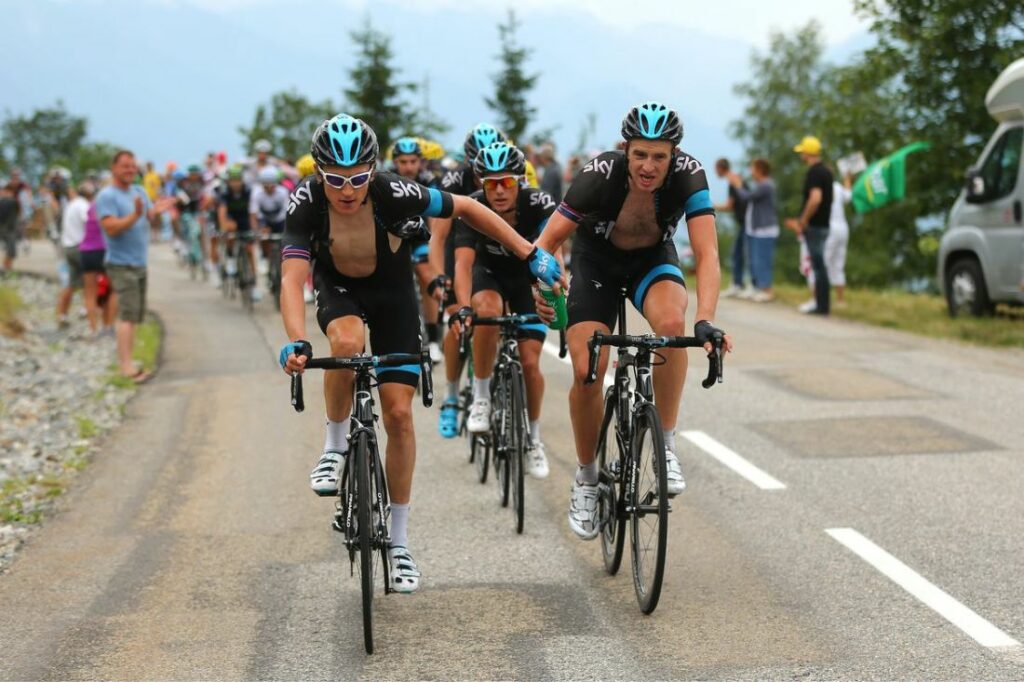
Hairpin turns, brutal climbs, superhuman athletes and loads of scandals, the Tour de France has it all!
Every July, the best cyclists in the world converge upon France to test their endurance, courage, and strength in an effort to win the illustrious title. But how much do you really know about the Tour de France?
With these fun facts about the Tour de France we’ll explore the most famous race stages, the wildest controversies and some of the most impressive records in sporting history. This one is for all of you cycling fans out there!
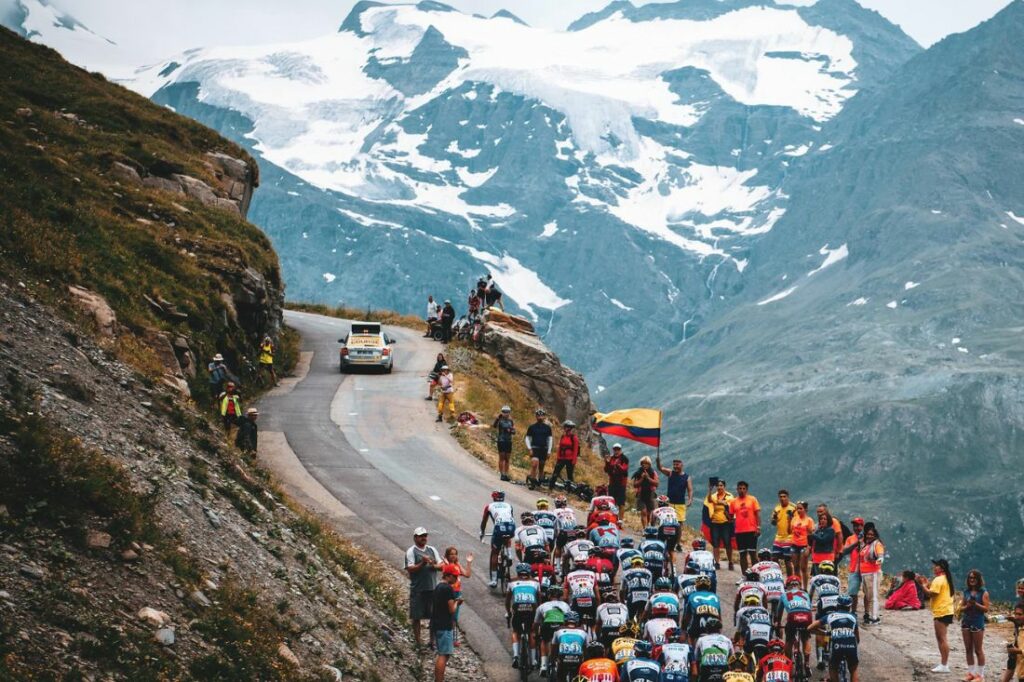
The Tour de France has been held since 1903 but has had a few bumps in the road along the way, including cheaters, doping allegations and the deaths of some riders. Even with all this drama, the excitement of the annual race persists with over three billion viewers annually.
And what about weighted water bottles, cigarettes, and polka dots? All three have a place in the storied history of the Tour de France and we’ll get to the bottom of it all.
As a primer for this year’s race, let’s learn some more Tour de France facts, so when you see the clips online you’ll know what’s actually going on!
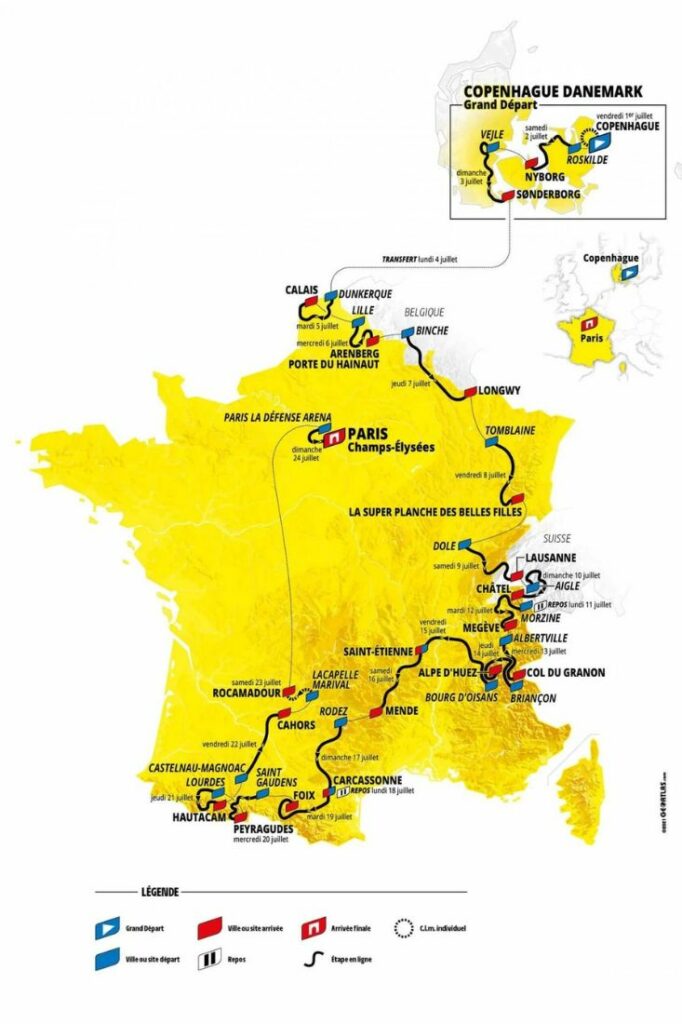
1. Historic route
Even though the route changes quite often, there are some features of the Tour de France that will always remain.
Most certainly the stages that wind up and down the French Alps and Pyrenees will always be a part of the race. And since 1975, every final sprint has sped along the Champs-Elysees in Paris .
2. A July tradition
On1st July 1903, the first Tour de France began in Paris. The 6 stage route saw riders pass through six major French cities in a large loop that hit each corner of the country.
Paris → Lyon → Marseilles → Toulouse → Bordeaux → Nantes → Paris. The first winner was Maurice Garin.
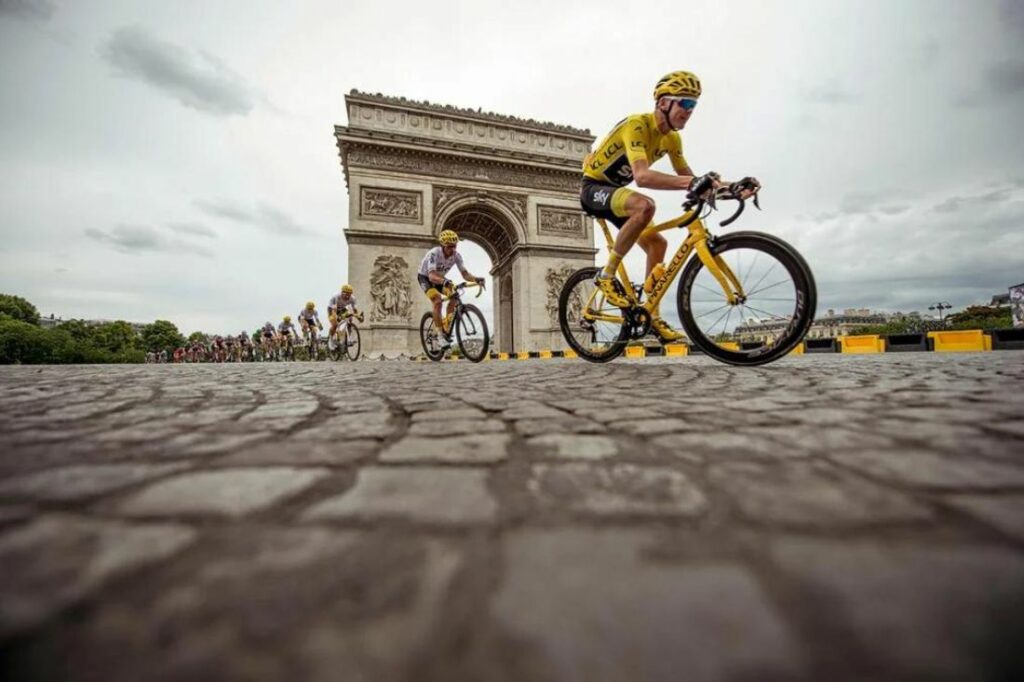
3. The steepest climb
One of the most popular sections that has made repeat appearances in the Tour de France is Alpe d’Huez . This 13.2 km brutal climb sees a gradient of 8.1%.
With over 20 switchbacks and an elevation of over 10,000 ft, you can be sure the rider’s lungs are burning on this one!
4. The longest route ever
The 1926 Tour de France has never been matched in terms of distance covered. The 17-stage race saw an accumulation of 5,745 km (3,570 mi)!
This is even more impressive considering the equipment of the 1920s. In comparison, the 2019 Tour de France covered only 3,460 km (2,150 mi) in 21 stages.
5. The most wins
The cycling legend Eddy Merckx of Belgium holds the record for the most stage wins with 34. With all these stage wins it probably comes as no surprise that Merckx is a five-time winner of the Tour de France (1969, 1970, 1971, 1972, 1974).
However, also sharing the most stage wins with 34 is British legend Mark Cavendish.
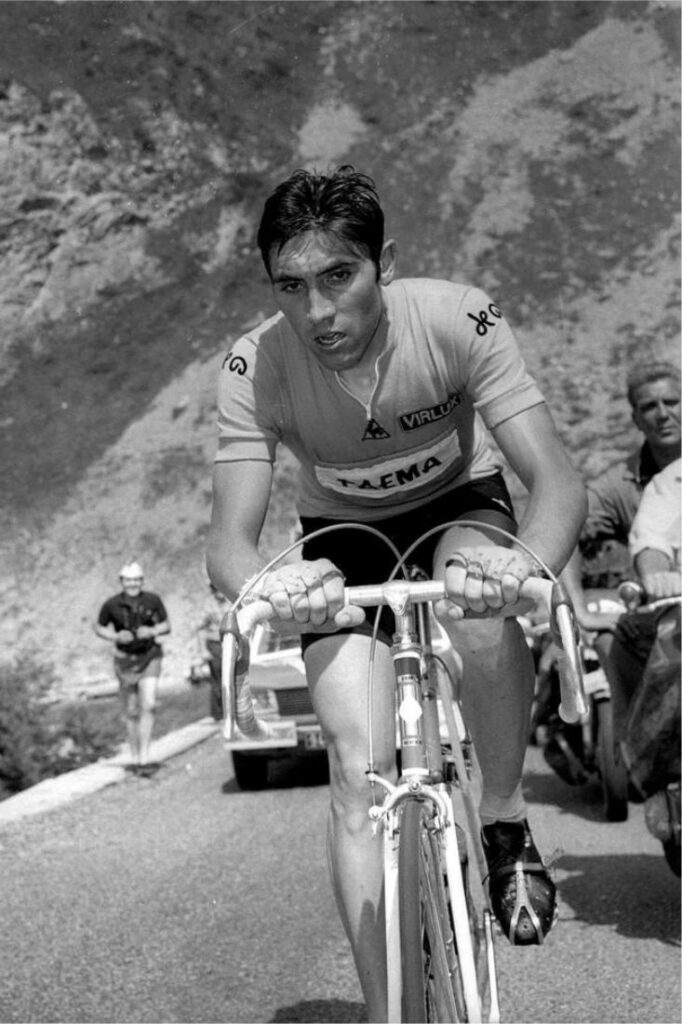
6. The disgraced winner
When you think about the Tour de France, it’s impossible to separate the race from the American cyclist Lance Armstrong. Armstrong won a record seven consecutive Tour de France titles between 1999 and 2005.
However, he was stripped of his titles in 2012 when the US Anti-Doping Agency found that Armstrong used performance-enhancing drugs throughout his career. It’s a scandal that the sport has really struggled to come to terms with as Armstrong was the poster boy for the Tour de France for years.
7. More scandals
While Lance Armstrong may be the most well-known drug cheat to win the Tour De France, many other cyclists have been embroiled in drug scandals as well.
Other Tour de France winners who have failed drug tests include American Floyd Landis, Spain’s Alberto Contador, and Britain’s Chris Froome.
8. Come on, peloton!
No, it’s not just the home exercise company with the perky trainers and mildly annoying commercials, peloton actually means gang in French.
In the Tour de France, the peloton refers to the large group of riders who bunch up during the race and ride together. This allows for consistency, drafting, and communication between riders.
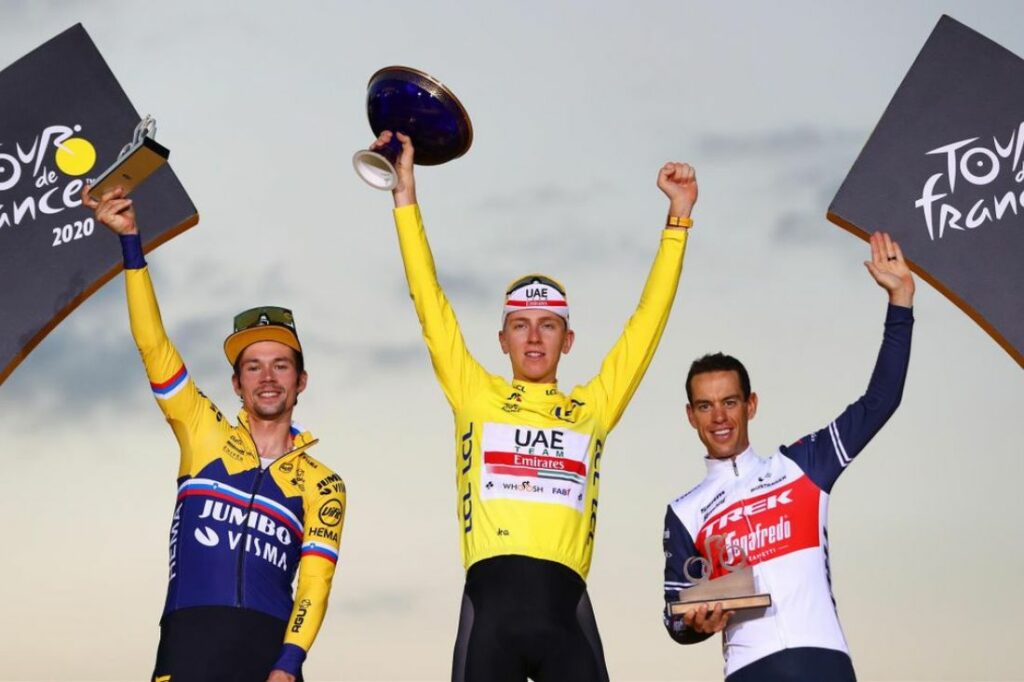
9. Prize money
21 stages, 3,404 km (2,127 mi), 22 teams, 176 riders, 1 winner. The rider who outlasts the rest at the 2023 Tour de France, and can manage the climbs, and has the lowest overall time will take home an incredible €500,000 ($535,000)!
10. The jerseys
During the Tour de France you can spot a few unique jerseys within the peleton. But what do these colorful jerseys, called maillots, signify?
Here’s a rundown: The leader of the overall race will be in yellow. The best sprinter wears green. The best rider under-25 wears white. Most fashionably, the best climber wears red and white polka dots!
11. Spectacular crash
When you have 150+ riders reaching speeds of up to 110 km (65 mi) per hour there are bound to be some devastating crashes.
Look no further than the 2021 Tour de France where two crashes marred the opening stage with two major crashes and 26 cyclists injured.
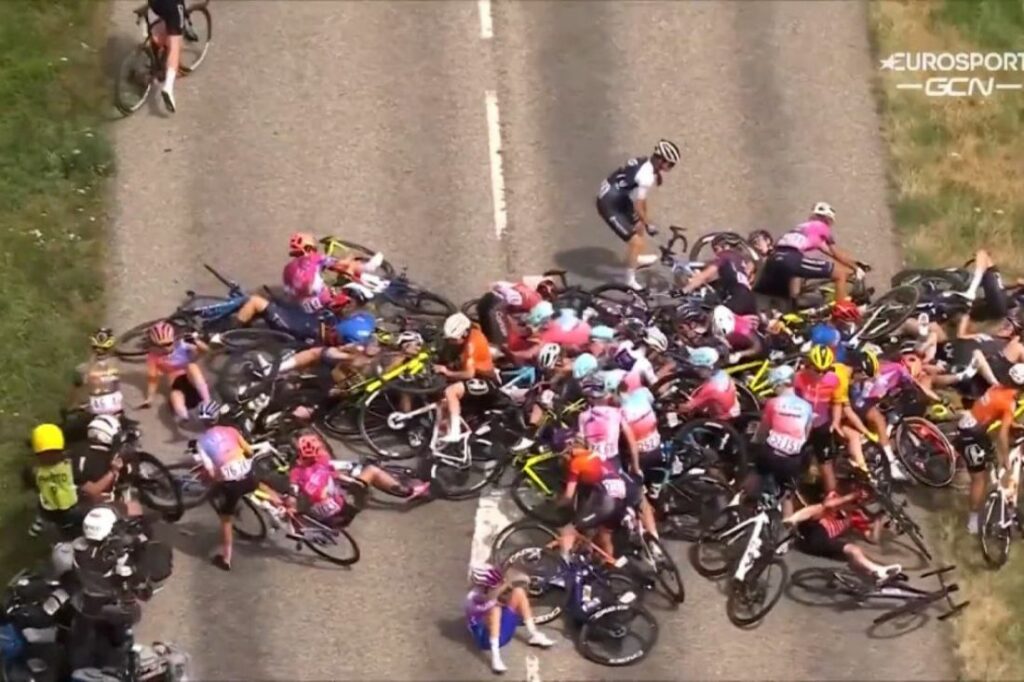
12. Get outta the way!
A tradition of the Tour de France are the spectators lining the streets and cheering on the cyclists. But sometimes they cause huge trouble.
In 1999, Giuseppe Guerini was leading the stage when a photographer got in his way causing a scary crash. Amazingly, Guerini was able to get back on his bike and win the race!
13. Tour tragedies
In the history of the Tour de France, three riders have died during the race. Fabio Casartelli crashed while going downhill at 88 kph (55 mph) in 1995. In 1935, Francisco Cepeda crashed into a ravine.
A more auspicious death was Tom Simpson who died of a heart attack in 1967 after taking amphetamines to help climb Alpe d’Huez.
14. Calorie burner
Try riding your bicycle for six hours straight and you’ll get a sense of just how hard these athletes are working! In fact, the average rider will burn around 7,000 calories per stage.
This is why you’ll see riders being handed food pouches filled with high-density nutrition to keep them fueled as they have to eat throughout the ride.
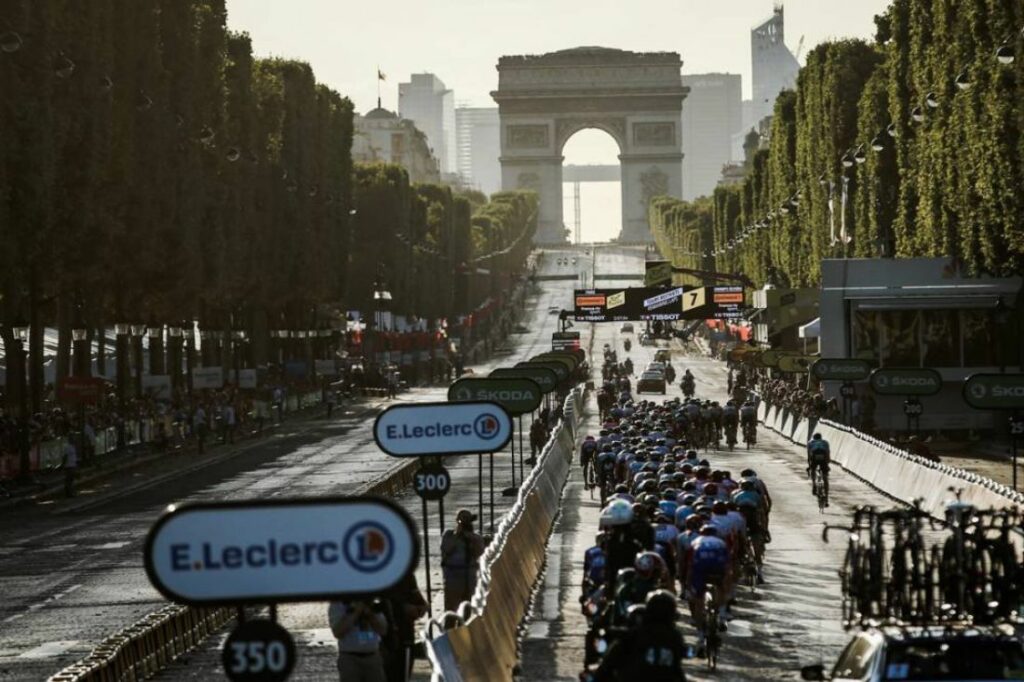
15. We can’t look away
Of course the Tour de France is a grand spectacle of sporting tradition, but did you know that the viewing figures for the race outpace the Super Bowl and the Olympics? Over the 21-day race more than 3.5 billion people will tune in to watch!
16. Smoking and cycling
During the 1920’s riders would share cigarettes before a steep climb, believing that the smoke would open their lungs and allow for a better performance. This was one of the fun facts about the Tour de France that we couldn’t believe!
17. Mercury descending
As we’ve discovered with these Tour de France facts, people will stop at nothing to win the race. The perfect example is Jean Robic in 1947.
Robic, who was known as an excellent climber, would be handed lead mercury disguised in water bottles to go faster on the downhills. Now that’s some cheating ingenuity!
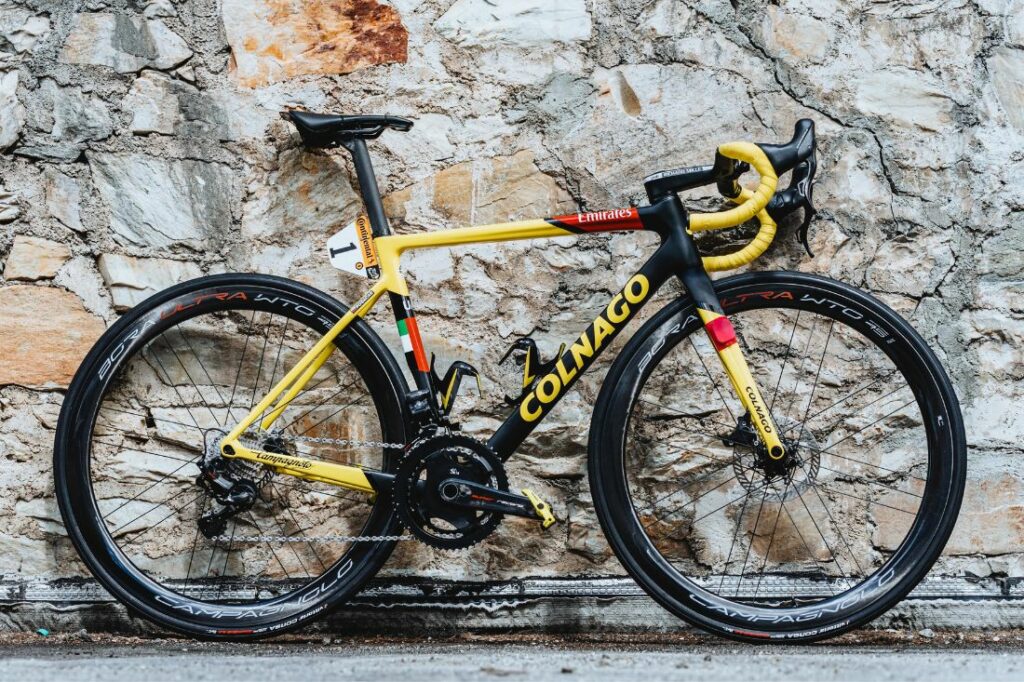
18. Bike technology
To say the bicycle has come a long way from 1903 when the first Tour was run would be a huge understatement. The first Tour de France bikes were built of wood and steel and weighed 40 lbs.
Compare that to the carbon bikes of today that are feather-light at 15 lbs.
19. It’s getting hot
The Tour de France is getting hotter and hotter each year causing concern for the future of the July tradition. In 2019, during the stages in the south of France, the air temperature was 40°C (104°F) and the temperature on the road surface was a scorching 60°C (140°F).
20. Equality in sport
Are you wondering if there ever was a Tour de France for women? In fact, a women’s race was attempted between 1984-1989 but largely went unnoticed.
The good news: 2022 saw a new race for women, the Tour de France Femmes . And it was a huge success too!
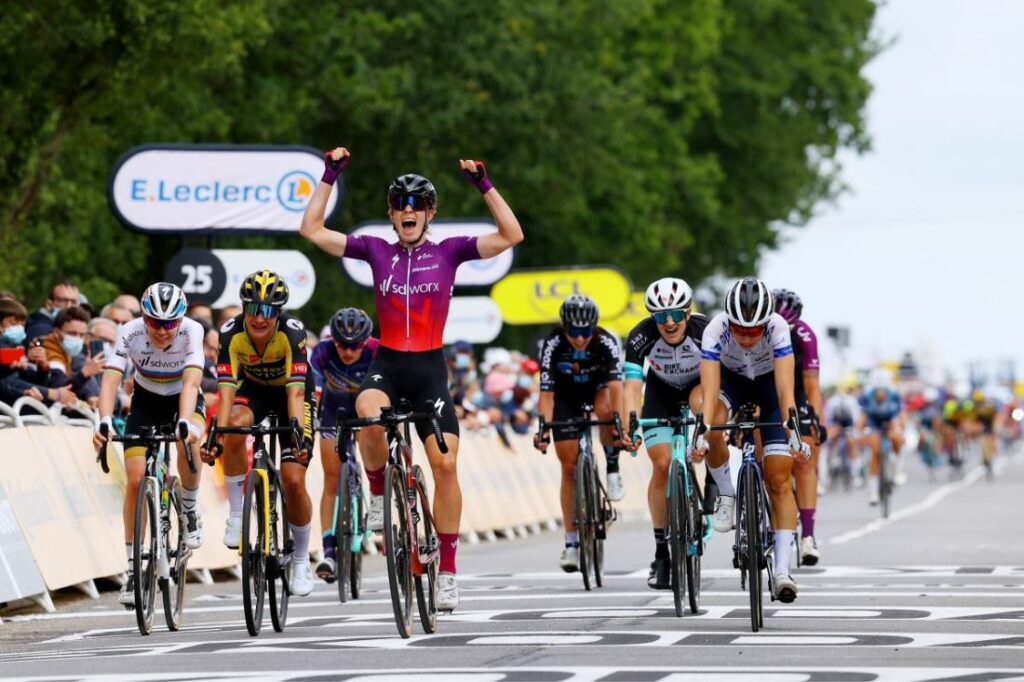
21. Quick Tour de France facts
Over 800 tires blow out every year at the Tour de France. The average cost of each Tour de France bike is between $13,000-$17,000. The country to win the most Tour de France titles, unsurprisingly, is France with 36.
22. Young and old
The oldest stage winner in the Tour’s history was Pino Cerami who won Stage 9 during the 1963 race at 41 years and 65 days.
The youngest stage winner was Fabio Battesini way back in 1931, when he won a stage at just 19 years and 134 days.
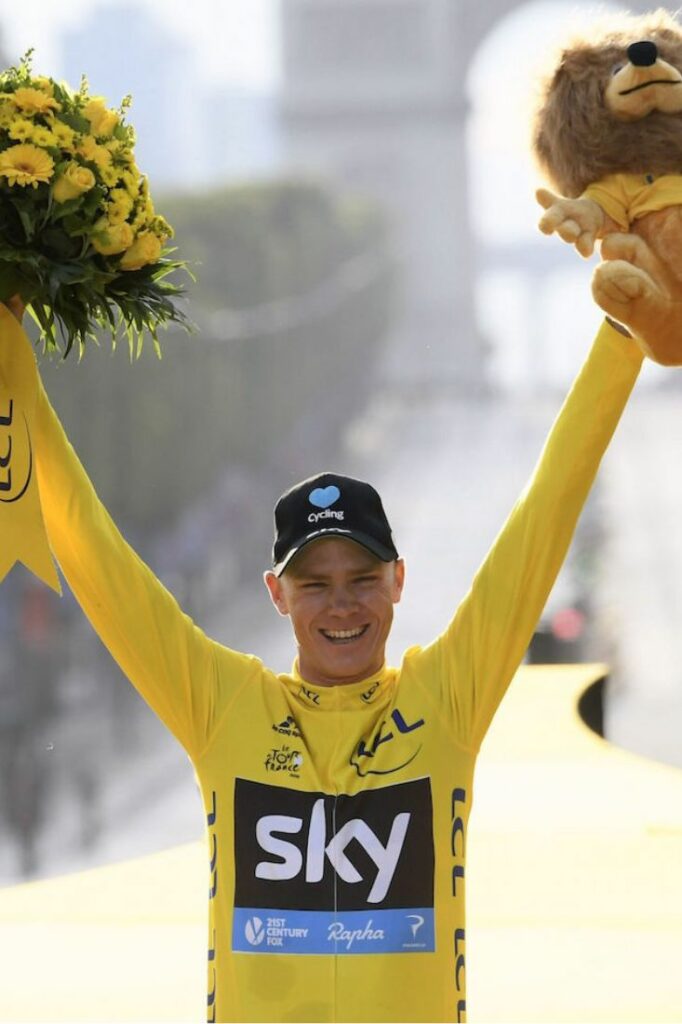
23. Postponed race
In 2020, during the COVID pandemic, the Tour de France was postponed until late September . In these untraditional circumstances, Tadej Pogacar of Slovenia was the winner.
At 21-years old, Pogacar is the second youngest winner in Tour de France history. Oh, by the way, he won again in 2021.
Who wants more fun facts?

If you’re looking for some recommendations, these are a few of our favorite fact books to buy. We use these when planning fun trivia nights with family and friends!
- Interesting Facts for Curious Minds
- 1,144 Random, Interesting & Fun Facts You Need To Know
- The Intriguingly Interesting Book of 555 Fascinating Facts
We really hope you enjoyed all our fun facts about the Tour de France! Did you learn something new? If there’s any we missed, you can let us know in the comments below and we’ll add them to this article!
Related Posts
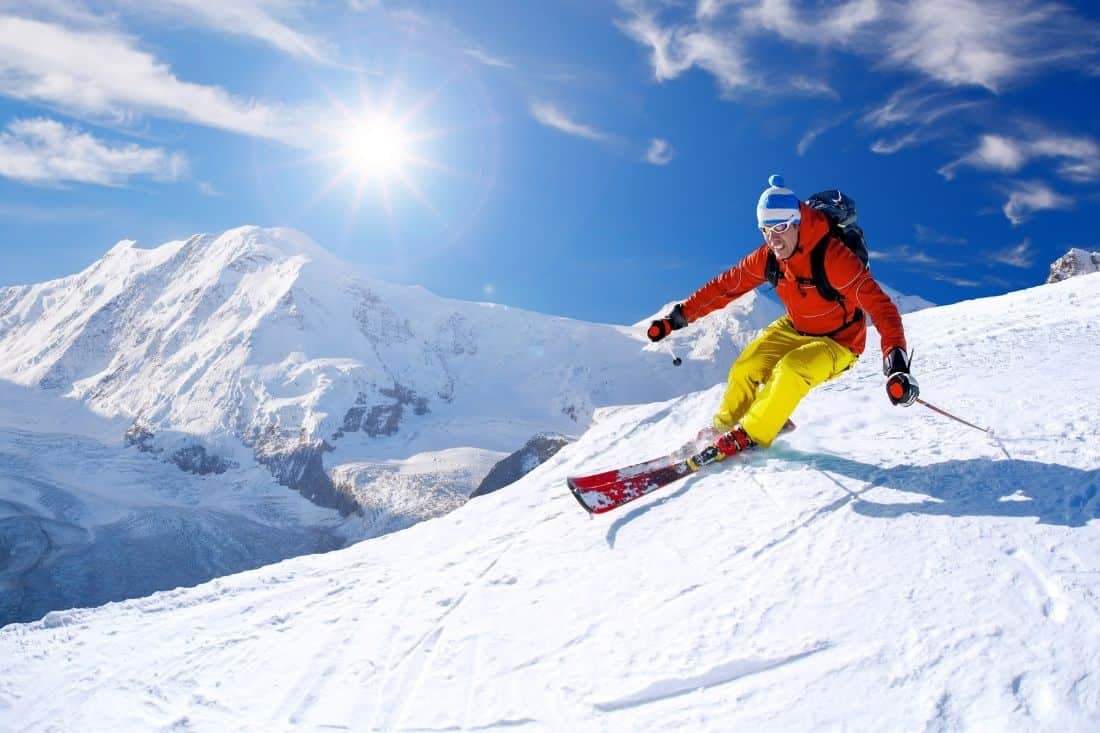
17 Fun Facts About Skiing
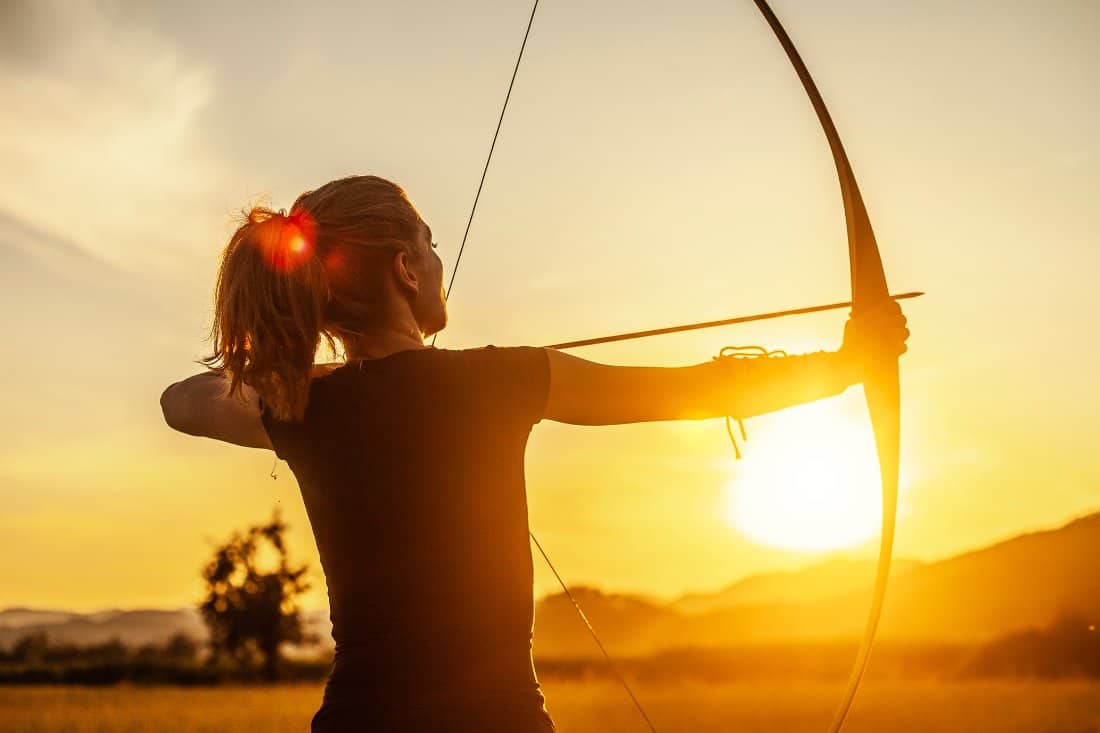
21 Fun Facts About Archery

21 Fun Facts About Volleyball

23 Fun Facts About Surfing
Leave a comment cancel reply.
- Couch to 5K
- Half Marathon
- See All ...
- Olympic/International
- IRONMAN 70.3
- Road Cycling
- Century Rides
- Mountain Biking
- Martial Arts
- Winter Sports
ACTIVE Kids
Sports camps, browse all activites, race results, calculators, calculators.
- Running Pace
- Body Fat Percentage
- Body Mass Index (BMI)
- Ideal Weight
- Caloric Needs
- Nutritional Needs
- Basal Metabolic Rate (BMR)
- Kids' Body Mass Index (BMI)
Running Events
- Half Marthon
Running Articles
- Distance Running
- Trail Running
- Mud Running
- Training Plans
- Product Reviews
Triathlon Events
- Super Sprint
Cycling Events
Triathlon articles, cycling articles.
- Cyclo-Cross
Fitness Events
- Strength Training
- Weight Lifting
Fitness Articles
- Weight Loss
Sports Events
Outdoor events.
- Book Campground
Sports Articles
- Water Sports
- Snowshoeing
Nutrition Articles
- Supplements
Health & Injury Articles
- Health & Injury
- Physical Health
- Mental Health
- Injury Prevention
Kids & Family
- Infants (0-1)
- Toddlers (2-4)
- Big Kids (5-8)
- Tweens (9-12)
- Teens (13-18)
- Cheerleading
- Arts & Crafts
- Kids Fitness
ACTIVE Kids Articles
Active works®.
From marketing exposure to actionable data insights, ACTIVE Works® is the race management software for managing & marketing your events.
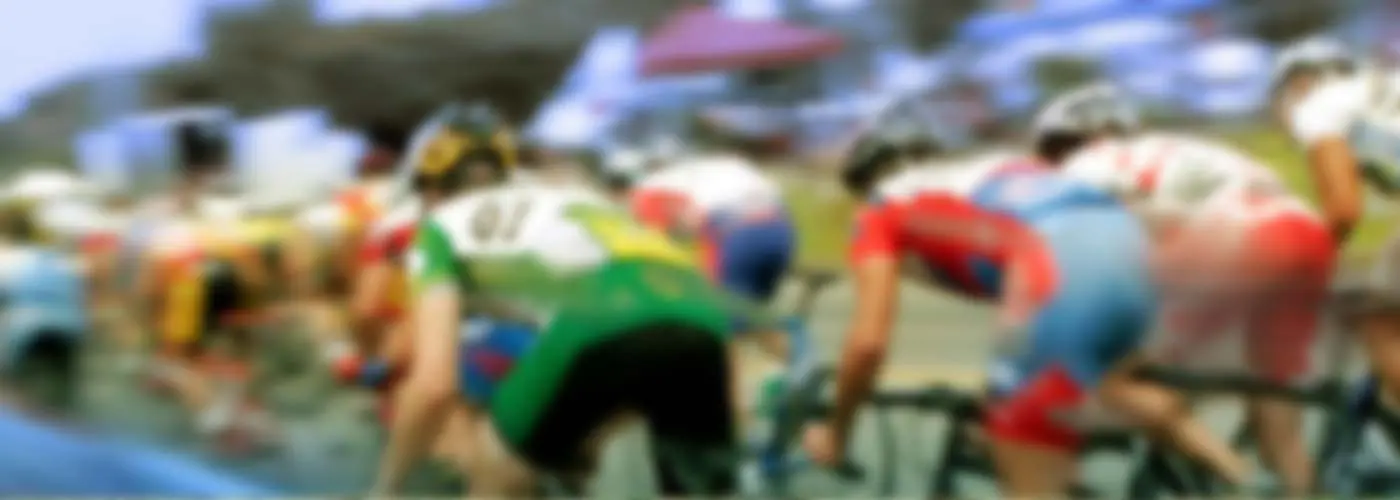
7 Crazy Moments in Tour de France History
- By Brian Kendall
If anyone sticks to the saddle for 2,200 miles over 23 days, there are bound to be some amazing anecdotes at the end. And with a group of 180 riders tackling such a feat in the close quarters of a peloton, the level of insanity increases a few notches. It’s tough to cherry pick just a few unhinged moments from the most unhinged sporting event in the world, so we chose our top seven instead.
Punched in the Kidney (1975)
Winner of the last five Tours he participated in (he skipped the 1973 edition), Eddy Merckx entered the 1975 Tour as the clear favorite. But this would be the year Merckx, arguably the greatest cyclist of all-time, would get dethroned for good. And boy, did it come about via a most bizarre string of events. During the 14th stage, which would finish atop the Puy de Dome, Merckx had the overall race lead and was about to catch the other race favorites when a spectator jumped from the crowd and punched Merckx in the kidney. Merckx, losing precious time to the other general classification contenders, eventually stumbled across the line vomiting. Despite this, Merckx still rode down the mountain to identify the man who threw the punch.
Cycling and Dogs Don't Mix (2007)
Cars, motorcycles, cracks and fellow cyclists—there are many things a cyclist must watch for when navigating a road. But one thing they might not expect? A dog. In what is easily one of the most bizarre crashes in Tour history, German cyclist Marcus Burghardt hit the pavement at the paws of a wandering hound. During the ninth stage of the 2007 Tour, a rogue Labrador retriever decided to venture onto the road as the peloton passed. While a couple cyclists managed to dodge the confused canine, Burghardt struck the dog's backside, causing him to flip over the front of his handlebars. Thankfully, both the dog and Burghardt managed to walk away from the incident unscathed.
We Think We'll Just Take a Seat (1998)
The most tumultuous Tour in history began when a physician for the French team Festina was found carrying vials of EPO, a human growth hormone, on his way to the start of the Tour. This led to law enforcement raiding numerous teams' hotel rooms and subsequently arresting several riders, including the entire Festina team. However, the remaining Tour riders did not go quietly into that good night. Instead, feeling their rights had been violated, they began dismounting their bikes in the middle of stages and sitting for two hours in protest. This would continue for 12 full stages until the riders made it to the Champs Elysees, where less than half the field completed the Tour.
Riding Through Hay Fields (2003)
Let's face it, between 1999 and 2005, Lance Armstrong provided cycling fans with some of the most memorable moments the Tour has ever witnessed. But none is more storied than his famous detour during the ninth stage of the 2003 Tour. During a winding descent on an uncommonly hot day, Spain's Joseba Beloki lost control of his bike and hit the pavement hard right in front of an oncoming Armstrong. Displaying some of the greatest control skills our eyes have ever seen, the now disgraced cyclist managed to avoid Beloki while taking a shortcut through a hayfield. Armstrong was able to stay in the saddle before eventually dismounting his bike to return to the road. He would later finish second in the stage and go on to claim his fourth Tour title.
Like Taking Candy from a Baby (2010)
A year after a horrific crash forced him to abandon the 2009 Tour, Jens Voigt probably thought he was suffering deja vu when he again crashed during the descent of the first climb in Stage 16. In what is probably the greatest display of grit and ingenuity the Tour has ever seen, Voigt, aware the service cars had already passed, borrowed a kid's bike from the Tour's junior race. With blood smeared all over his ripped jersey and teeth grinding with pain, the German cycled for 12 furious miles until he reached a bike his team had left. Voigt would eventually cross the finish line in Paris in 125th place.
Taking a Train (1904)
It's unfortunate that cheating has become synonymous with the Tour, but the practice goes back all the way to the inception of the multi-stage race. In 1904, the second Tour de France, there were a mere six stages that each measured between 167 and 293 miles. Unfortunately, such gruelingly long stages made cheating both easy and a necessity to win. In the months following the race, the top four finishers were disqualified for cheating. This included the previous year's winner, Maurice Garin, who had reportedly hopped aboard a train to shave some minutes off his overall time. Henri Cornet was eventually announced the winner and the Tour would change to a point system for the next eight years to combat these swindlers.
No Bike? Run. (2016)
This is a bike race, not a triathlon, right? Well, try to explain that to three-time Tour winner Chris Froome, who, after crashing on the final ascent of Stage 12, made a mad dash for the finish line sans bicycle. After breaking away from a group of GC contenders with old teammate Ritchie Porte, the duo crashed into the rear of a motorcycle. Porte's face went straight into a camera while Froome's bike was no longer rideable. With the pack closing in, a panicked and tenacious Froome began running for the finish. He would eventually get a bike from his support car, but the effort was futile as the pedals didn't fit his shoes' clips. While the Englishman would finish the stage in 25th place, the UCI eventually gave Froome and Porte the same time as their competitors due to a rule that protects a rider who falls in the final 3K.

Next Gallery
The 8 Weirdest Cyclists at This Year's Tour de France
Share this article
Discuss this article, cycling events near you, trending articles, unlocking your fitness data: a guide to using rungap to sync apple health with garmi..., convert your cycling miles to running miles, and vice-versa.
10 Essential Strength Training Exercises for Cyclists
8 core exercises every cyclist should do, 3 cycling workouts to help you conquer hills.
More Cycling Articles

Connect With Us
Add a family member, edit family member.
Are you sure you want to delete this family member?
Activities near you will have this indicator
Within 2 miles.
To save your home and search preferences
Join Active or Sign In
Mobile Apps
- Couch to 5K® View All Mobile Apps
Follow ACTIVE
© 2024 Active Network, LLC and/or its affiliates and licensors. All rights reserved.
Sitemap Terms of Use Copyright Policy Privacy Policy Do Not Sell My Personal Information Cookie Policy Privacy Settings Careers Support & Feedback Cookie Settings
- Get Your 3rd Race FREE
- Up to $10 off Event Fees
- Get $50 off New Running Shoes
- FREE pair of Pro Compression Socks
- Up to 15% off GearUp
- VIP Travel Discounts
...and more!
- Best Fountain Pens
- How to Smoke a Cigar
- Best nerf guns for adults
- The best Netflix movies
- Best Ernest Hemingway books
10 Lesser-Known Things About Le Tour
Check out these facts about the biggest bike race on earth.
The Tour de France is in full swing and it’s already been one of the most entertaining races in the event’s 109-year history. This year’s race is already proving to be a battle, with several big names vying for the yellow jersey. But there’s so much more to the world’s greatest cycling race than just the bikes.
- It’s Bigger Than the Super Bowl
Chocolate Made the Polka-Dot Jersey
Slower crashes hurt more, more than 40,000 water bottles will be used, riders can burn 7,000 calories a day, riders pee a lot, there are 15 million spectators, the average speed is about 23 mph, the commentary is golden, yes, they race on cobbles.
Le Tour is appealing on many, many levels. For starters, it’s shot beautifully, offering sweeping views of the French countryside. Armchair travelers are wise to tune in as they can be whisked away to the Alps, French wine country , and every beautiful spot in between. There’s also all kinds of drama, with riders engaging in strategic attacks during just about every stretch of each stage. Plus, it’s just really cool to stare at a peloton for a while. It’s like a flock of birds gliding across the asphalt.
So whether you’re just getting into road biking or are a seasoned rider, there is a lot to love about Le Tour. It’s well underway, but there are several stages left. If nothing else, you can catch the triumphant finish as the riders head into Paris for the final stage, often with Champagne in hand.
Here are 10 amazing things you almost surely didn’t know about the Tour de France.
- I Am Legend 2: Everything we (think) we know about the sequel
- The 10 best SNL musical performances of all time
- Everything we know about Netflix’s Ripley miniseries
It’s Bigger Than the Super Bowl
That’s right, Le Tour is bigger than the Super Bowl . The planet’s grandest bike race carries a viewership of roughly 1 billion people. That’s almost 10 times more popular than our highest-profile football game of the year. While a decent number of Americans watch the race, as you might imagine, it’s vastly more popular elsewhere, especially in Europe.
The reward for the king of the mountains, aka the best climber during the Tour de France, is the polka-dot jersey. It was first awarded in 1975, and the dots are because of a main sponsor at the time. Turns out Chocolat Poulain had a popular candy bar at the time that had a polka-dot wrapper. It’s since become an iconic garment given to the rider with the quickest runs through some of the most demanding terrain in the race.
This one doesn’t make a lot of sense upfront, but once you watch the Tour a bit, you start to get it. Slow crashes can be very dangerous, as riders often have enough time to try to pad their fall. In doing so, they run a very high risk of breaking any number of bones. Also, the slow crashes tend to take place in the thick of the peloton, where it’s all-too-easy for a downed rider to get run over repeatedly by other riders unable to steer out of the way. Faster crashes, while dangerous, can be better, as the riders tend to slide out of them. Additionally, the higher speeds tend to come away from the pack, so there’s usually a smaller chance of getting struck while down by another rider.
Riders go through a lot of water, which is no surprise, given they travel about 140 miles a day on average. The water bottle is everywhere, stuffed in the backs of jerseys, tossed from assistants on the side of the road to riders, and delivered from team cars to cyclists as they go. Many fans try to collect the discarded ones as they’re often tossed to the side once empty. There are some great rumors surrounding water bottles, too, like how in the early days of the Tour some riders would allegedly fill them with lead in order to descend hills faster.
This stat is all the more impressive when you realize the typical size of a pro cyclist. These guys are by no means large, just well-trained machined that can pedal like crazy for 5 to 6 hours at a time. Burning so many calories means replenishment is a top priority. That’s why you see riders eating often, even mid-ride. Watch as they knock down several bananas, energy pouches, caffeine bars, and more over the course of any given stage.
While the camera crews try to film around this simple fact, viewers are going to see some peeing. These racers have to stay supremely hydrated, which means fairly frequent pullovers to the side of the road to answer the call of nature. Some intrepid riders will even do so while riding, often shielded by teammates while they go. This is one of those overlooked things from a viewing standpoint that once you notice, you can’t really un-notice.
Millions show up for the race, crowding the sides of the road and shouting and waving flags as the riders dart by. With a total course length of more than 2,000 miles, that’s a lot of area for fans to show up and catch the action. It’s a sight to behold and easy to see why enthusiasts might build a whole vacation on tracking the Tour up close and in person. It’s one of few scenarios in sport where you can get so close to the athletes (sometimes to a fault, as we’ve seen crashes, dogs being run over, etc.) and the spectators take full advantage.
It can be hard to get a sense of how fast the pace is but rest assured, it’s incredibly fast. To average 23 mph is remarkable, especially considering the many obstacles at play, from blistering headwinds to steep mountain grades. How fast do they go? Well, the fastest recorded speed during the Tour de France is 63.1 mph, set by Nils Politt while bombing down the Col de Vars.
Known as the voice of cycling, Phil Liggett is the commentator for Le Tour and has been for a couple of generations. He’s joined by Bob Roll, and the two simply do wonders together. While on the older side, the two possess genuinely youthful energy toward the Tour and rattle off all kinds of great factoids, from the historical pedigree of certain buildings to old race stats. With so many hours of coverage, you might expect some dead space (like golf) or boring content, but the duo manages to entertain from start to finish.
Most of the Tour takes place atop fairly smooth asphalt, but because the riders cover so much ground and the course changes every year, other road surfaces enter the picture. Riders navigate cobble, dirt roads, and more, not to mention the many medians and various other objects that dot the streets of villages and small towns throughout the region. Moreover, the size of the road itself is always changing, stretching out in the open country and becoming dangerously narrow in cities.
Editors' Recommendations
- The 10 best inspirational books that can change your life
- The 10 best non-Marvel Chris Hemsworth movies, ranked
- The 10 best Dwayne Johnson movies, ranked
- The Ghostbusters have a new ride in Frozen Empire, courtesy of Mercedes Benz
- Everything we know about Ryan Gosling’s The Fall Guy

Fans of the hit series Yellowstone were less than pleased that the modern western is coming to a premature end with season 5. More importantly, series star Kevin Costner may not even return for the final episodes over an ongoing dispute with Paramount Network and Yellowstone showrunner Taylor Sheridan. One of the primary reasons behind Costner's exit is that he is laser-focused on his passion project, Horizon: An American Saga. It's the first movie that Costner has directed since 2003's Open Range and a return to the post-Civil War timeframe in his Oscar-winning movie, Dances With Wolves.
While Yellowstone fans would surely prefer to see Costner reprise his role as John Dutton one last time, there's a lot that they may like about Horizon. Costner's vision was too big for any single film to handle, which is why Horizon is planned to be a four-film series, and the first two movies have already been shot!
A great speech is something that combines persuasive writing, a comfort with public speaking, and a meaningful message to create an impression greater than the sum of its parts. There's no one set of rules to govern the ideal speech, and plenty of people struggle with them even with teams of experts to help them out -- just see the majority of speeches given by politicians. But once in a while, a truly great speaker and a truly great speech come together to create something that stands out and withstands the test of time, carrying meaning with it through generations even to those who weren't yet born when it was given.
Great speeches are more than just rhetorical flourish or impressive performance -- they're also calls to action, able to persuade and embolden the listener. These speeches can be inspiring, informative, and instructive, whether you're interested in learning more about history or working on a speech of your own.
The start of a new month has arrived, but before you dive into the best Netflix movies to stream, or even the best Netflix shows, you're going to want to double-check your billing options if you're a longtime subscriber through Apple. If you don't get current with Netflix's newly revised billing options, then you may find yourself cut off from all of the series and films that you want to stream.
Customers in the United States, Canada, and a few other countries are reportedly no longer going to be allowed to pay for their Netflix subscriptions through Apple. According to Netflix's official support site, the solution is simple: Update your Netflix account with your billing info.

13 Enduring Facts about Le Tour de France
The Tour de France is a world-famous endurance and speed race held annually. It involves a 23-day tour through different countries but always involving and ending in France. Covering approximately 2,200 miles, It is the longest cycle race in the world ! Here are some fun facts about the Tour de France to help clue you up on this world-famous spectacle.
1. The Tour always ends in the same place.
The finish line of the Tour de France is always on the Champs Elysee in Paris, France. However, the route otherwise changes from year to year!
2. It’s been going for well over a century.
The first Tour de France was held in 1903. It’s captivated plenty of attention ever since, though there have been delays over the years. It was canceled during WWI and WWII, and there were delays during the COVID-19 pandemic in 2020.
3. What is Le Grand Depart?
‘Le Grand Depart’, translates to mean ‘The big start’! It certainly is spectacular, with a build-up of anticipation and much media coverage.

4. Don’t worry… they take breaks!
Cyclists taking part in the Tour don’t actually ride for the full 23 days! They take two rest days off in between – there has to be a limit!
5. What is a stage, anyway?
A ‘stage’ in the Tour de France refers to a leg of the race. Stages can last for up to 6 hours each. Each day of cycling produces a stage winner, who takes a place on the podium. There are 21 stages in total, one for each of the 21 days of racing. Got all of that?
6. Go for yellow!
The Maillot Jaune is the famous yellow jersey worn by the rider who is acknowledged to have achieved the best time/s for the race. The aim is to finish in yellow, essentially!
7. The women will have their turn on the Tour!
A new women’s Tour de France race is to be launched in 2022. It will be known as the ’Tour de France Femmes’, translating to ’Tour de France Women’. Right now, women don’t take part in the main Tour de France races.
8. Cycling burns a TON of calories.
Cyclists burn between 5,000 and 7,000 calories during a daily stage! Musettes, or food bags, are passed to them as they cycle. The nutrients in the food is designed to sustain them through the race!
9. Not bad starting out!
In 1904, Henri Comet was the youngest driver to win the Tour de France. He was the champion 13 days before his 20th birthday that year! In 2020, Tadej Pogacar came close – he was was one day away from his 22nd birthday when he won.

10. That’s a LOT of pedaling.
Eddy Merckx remains the all-time record holder with the most stages won – he claimed a total of 34 over the years!
11. Millions of people tune in – and who could blame them?
Believe it or not, the Tour de France is probably the most-watched sport on the planet. Millions of people watch it both in person and on TV!
12. Better prepare the cistern, then…?
Tour de France cyclists are said to produce enough sweat in one race to flush a toilet more than 39 times. Now there’s a fact you’ll want to remember…

13. You’re never too old to tour!
The oldest ever winner of the Tour de France was Firmin Lambot – he was the ripe old age of 36 when he claimed the title!
FAQs about The Tour de France
Do tour de france riders pee during the race.
Yes - if they need to take a ‘comfort break’, riders can take to the side of a road to relieve themselves. This normally takes place organized ahead of time.
Has anyone died while taking part in the Tour de France?
Yes - there have been a total of four casualties that have taken place during the race over the years.
Has anyone cheated during the Tour de France?
There have been various scandals that have plagued the races - and Lance Armstrong’s exposure during a doping scandal was perhaps the biggest. He lost all seven of his TDF titles.
Do you know any fun facts about the Tour de France? Share them in the comments below!
Leave a Reply
Your email address will not be published. Required fields are marked *
Save my name, email, and website in this browser for the next time I comment.
This page was last modified on July 27, 2023. Suggest an edit
Related 'Sport' Facts

10 Brilliant Facts about Brittany

12 Breezy Facts about the Blue Lagoon

10 Statesmanlike Facts about Emmanuel Macron
Share these facts, there are 1000s of interesting and fun facts to learn about our planet..
Explore our world map to discover some fascinating facts for every country…

Latest Facts
32 bodacious facts about beekeeping.

26 Super Facts About the Sundarbans
24 absolute facts about apple.

25 Splendid Facts About Sephora

8 Sensational Facts About Spider-Man
- Fact of the Day
- In This Year
- On This Day
- tour de france
- Plan Your Trip
- Espace Diamant
- Espace Killy
- Grand Domaine
- Grand Massif
- Megeve / Evasion Mont Blanc
- Mont Blanc / Chamonix
- Outside the Alps
- Portes du Soleil
8 fun Tour de France facts you didn’t know
We’ve all watched the Tour de France, but how much do we really know about this iconic race? The rich history behind the Tour de France, its past stories and the fun facts associated with it make it all the more exciting.
We’ve put together 8 fun Tour de France facts that you may not have known. Read on to find out more…
Tour de France fun facts…
The first Tour de France race was in 1903, created by Henri Desgrange who was the editor at the newspaper L’Auto.
It originally started out as a marketing scheme, advertising the paper around France.
123,900 is the average amount of calories each rider needs to consume over the course of the three weeks.
That is equivalent to 495 croissants, 152 full English breakfasts or 200 bottles of champagne!
The youngest cyclist to win the Tour de France was named Henri Cornet, who raced in the second edition of the race in 1904.
Henri Cornet took the winning title at the impressive age of just 19 years old!
The same 1904 race, however, was a cause for scandal as original winner Maurice Garin (1903 winner) and the three runners up were all disqualified after allegations of competitors using trains during the race!
In the 1920s competitors shared cigarettes while riding.
The riders believed at the time that smoking may help to ‘open up ‘ the lungs in preparation for the climbs !
Alcohol was consumed to ease any pains during the race. This was later banned in 1960, as it was believed to be a stimulant.
This thrilling and awe-inspiring race attracts over 12 million spectators each year, making it the largest sporting event in the world.
Each team comes prepared for the tour with supplies that include 3,900 nutrition bars, 80kg of nuts, raisins, apricots and figs, 3,000 water bottles and – most importantly – 20 jars of jam!
Where will you be watching?
The route of the Tour de France changes year on year, but you can check the official route to find the closest viewing point to you! If you’re a real enthusiast, why not book a chalet near one of the stops in the French Alps, or even try one of our bike-friendly accommodations to have a go at road cycling yourself?
Further Reading...
Everything you should know about cycling in les gets, the 6 best cycling routes in the alps, everything there is to know about cycling around lake annecy, how covid-19 made renting a ski chalet in france more popular than ever, a beginner skier's guide to the aravis, subscribe to our newsletter.
Be the first to hear about beautiful new properties and exclusive offers
You are using an outdated and unsupported browser!
We recommend you upgrade your browser. Click here for more info.
You may continue to browse the site but certain functions such as video upload may not work as expected.
Road Cycling
Le tour de facts: 15 incredible things you never knew about the tour de france, you won't believe some of these.
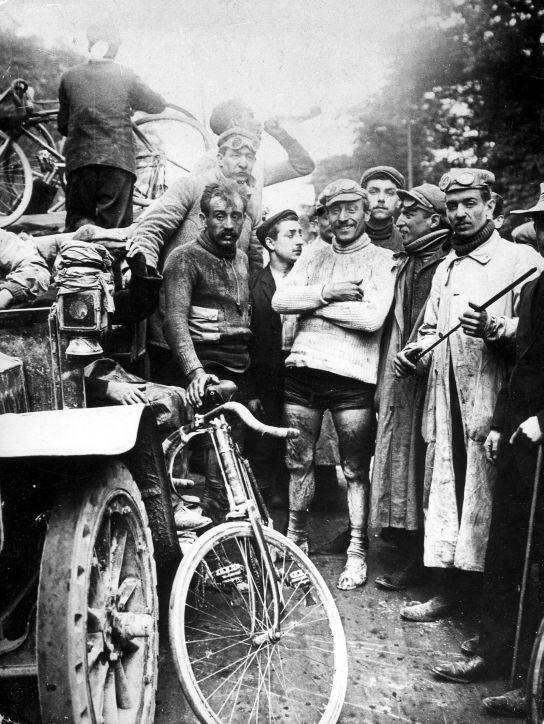
tour de france facts You probably didn’t know
This year’s Tour de France has been one of incredible drama, full of high stakes gambles, shock withdrawals and spectacular crashes.
But when you start looking back through Tour de France history , you’ll see that such incredible happenings are pretty much par for the course when it comes to the world’s biggest bike race.
Here are 15 incredible Tour de France facts you probably never knew about la Grande Boucle.
1) Greg LeMond won the Tour de France in 1989 with 35 shotgun pellets embedded in his body! The pellets were the result of a “hunting accident” two years before
2) while racing le tour italian cyclist mario cipollini taped a picture of pamela anderson to his handlebars for inspiration, 3) with 36 wins, the french have taken more titles than any other nation. not that they’re fond of reminding people of it…, 4) four riders have died while competing in the tour.
Fabio Casartelli crashed at 88kph while descending in 1995 and Tom Simpson died of a heart attack after taking amphetamines and attempting the climb to Alpe d’Huez in 1967.
In 1935 Francisco Cepeda suffered a Tour de France crash into a ravine and in 1910 Adolphe Helière managed to errr… drown. It was during one of the rest days apparently. We’re not sure whether he was drinking at the time…
5) The oldest stage winner was Firmin Lambot in 1922. He was 36 years old
6) the youngest stage winner was henri cornet in 1904. he was 19 years old, 7) the average amount of calories used by a rider per day is 5,900. an ordinary man uses 2,500, 8) the heaviest rider to take part in le tour de france was sweden’s magnus backstedt at 97kg, 9) 13,000 gendarmes (french police) cover the tour de france every year. they even came to yorkshire in 2013 to police the race, 10) in 1947 albert bourlon performed the longest solo breakaway: 253km, 11) 15 million spectators hit the route of the tour every year, 12) throughout the 3 week race the peloton uses over 790 tyres in total, 13) the overall winner of the race receives a purse of €450,000. he’ll usually split this with his team-mates, or domestiques, 14) the first tour de france in 1903 counted only six stages and attracted 70 entrants. riders would start at night and pedal through to the following afternoon, 15) in the 20’s the riders would often share cigarettes while riding. the were believed to help “open the lungs” before big climbs, you may also like:.
Dutch Cyclist Laurine van Riessen Stuns Track Cycling Crowd By Riding Barriers to Escape Crash
Here’s Why Hidden Camera YouTubers Twinz TV Electrified Bike Saddle “Prank” Is A Step Too Far
10 Insane Crash Photos From the Tour de France
Blood Sweat and Gears: The Greatest Rivalries in Tour de France History
Privacy Overview
Newsletter terms & conditions.
Please enter your email so we can keep you updated with news, features and the latest offers. If you are not interested you can unsubscribe at any time. We will never sell your data and you'll only get messages from us and our partners whose products and services we think you'll enjoy.
Read our full Privacy Policy as well as Terms & Conditions .

Turn Your Curiosity Into Discovery
Latest facts.

Follistatin344 Peptide Considerations

Approach for Using 5 Tips To Help You Write Your Dissertation
8 facts about tour de france.
Written by Molly Lusk
Modified & Updated: 02 Mar 2024
Reviewed by Jessica Corbett
- Athletic Competition Facts
- Cycling Facts
- Professional Sports Facts
- Sports History Facts
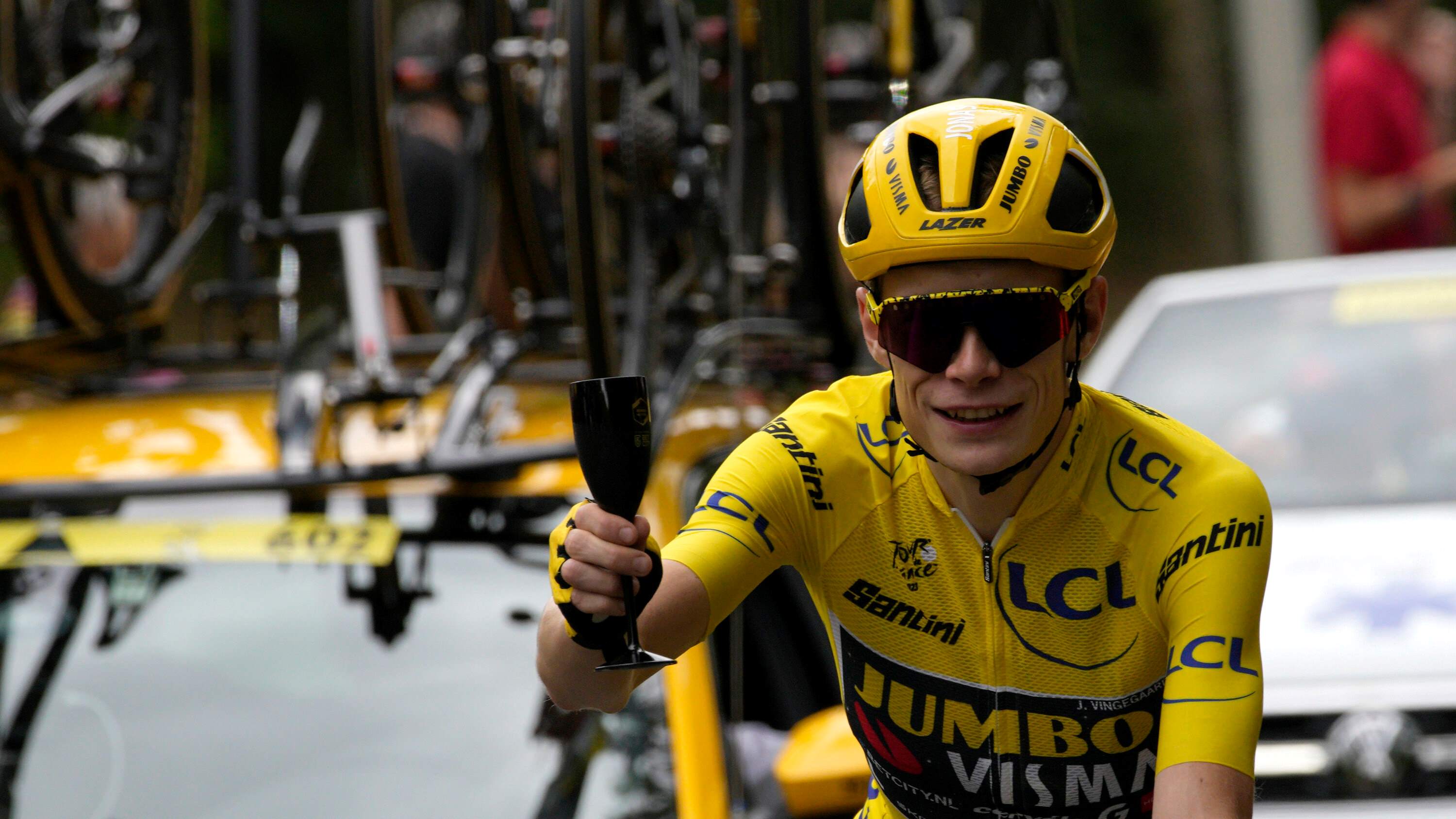
The Tour de France is one of the most prestigious and demanding events in the world of cycling. With a history dating back to 1903, this annual multi-stage race captivates both cycling enthusiasts and casual fans alike. It is a grueling test of endurance, strategy, and skill, traversing through the picturesque landscapes of France.
In this article, we will explore eight fascinating facts about the Tour de France that make it an iconic and must-watch event for sports enthusiasts. From its challenging course to the legendary yellow jersey, we will delve into the history, traditions, and records that have made the Tour de France the pinnacle of competitive cycling .
Key Takeaways:
- The Tour de France is a prestigious cycling race that covers over 3,500 kilometers and lasts for three weeks, showcasing the beauty of France through 21 stages.
- The race attracts millions of spectators and legendary champions, with a global audience of millions tuning in to watch the thrilling competition unfold.
The Tour de France is the world’s most famous and prestigious cycling race.
The Tour de France is an annual multi-stage race that covers over 3,500 kilometers, attracting the best cyclists from around the globe. It was first organized in 1903 and has since become an iconic event in the world of sports.
The Tour de France lasts for three weeks.
The race is divided into 21 stages, with each stage covering a different distance and terrain. The cyclists ride through various cities, towns, and breathtaking landscapes, showcasing the beauty of France.
The yellow jersey is awarded to the overall leader of the race.
The leader of the Tour de France wears a distinctive yellow jersey, which symbolizes their position as the frontrunner. The yellow jersey is highly coveted, and cyclists compete fiercely to earn it.
The average speed of the Tour de France is around 40 kilometers per hour.
Professional cyclists push their limits during the race, maintaining an astonishing pace of approximately 40 kilometers per hour. This demonstrates their incredible strength and endurance.
The Tour de France attracts millions of spectators along the route.
Every year, enthusiastic fans gather along the route to cheer on the cyclists and witness the excitement firsthand. The lively atmosphere and passionate support make the Tour de France a truly extraordinary event.
The Tour de France has visited neighboring countries.
While the race predominantly takes place in France, it has occasionally crossed the borders into neighboring countries such as Spain, Belgium , and Italy. This adds an international flair to the event.
The Tour de France has crowned many legendary champions.
Over the years, the Tour de France has seen remarkable cyclists rise to fame and achieve greatness. Legends such as Eddy Merckx, Miguel Indurain , and Lance Armstrong have left their mark on the race.
The Tour de France is watched by millions of viewers worldwide.
The race garners a massive global audience, with millions of people tuning in to watch the thrilling competition unfold. It has become a highly anticipated sporting event, captivating fans across the globe.
In conclusion, the Tour de France is a thrilling and iconic event that captures the attention of cycling enthusiasts from around the world. With its rich history, challenging routes, and remarkable achievements, it is no wonder why the Tour de France has become synonymous with excitement and national pride. From its origins in 1903 to its status as one of the most prestigious races in the world, the Tour de France has continuously evolved and adapted, showcasing the grit, determination, and athleticism of cyclists. Whether you are a passionate fan or new to the world of cycling, the Tour de France is an event that should not be missed. So, mark your calendars, grab your cycling gear, and get ready to witness the incredible feats of endurance and skill that unfold during this legendary race.
1. How long is the Tour de France?
The Tour de France covers a distance of approximately 3,500 kilometers (2,200 miles) over the course of three weeks.
2. How many teams participate in the Tour de France?
There are typically 22 teams with 8 riders each, making a total of 176 riders competing in the Tour de France.
3. What is the significance of the yellow jersey?
The yellow jersey is awarded to the rider with the lowest overall time in the general classification. It symbolizes the race leader and is a highly coveted prize.
4. How many stages are there in the Tour de France?
The Tour de France consists of 21 stages, including flat stages, mountain stages, time trials, and rest days.
5. Who has won the most Tour de France titles?
Lance Armstrong holds the record for the most Tour de France titles, with seven victories from 1999 to 2005.
6. What is the route of the Tour de France?
The route of the Tour de France changes each year, but it always includes different regions of France, including mountainous terrains, scenic landscapes, and famous landmarks.
7. Are there any female riders in the Tour de France?
As of now, there is no separate Tour de France for women. However, there are separate women’s races, such as La Course by Le Tour de France, which takes place during the Tour de France.
8. How is the winner of the Tour de France determined?
The winner of the Tour de France is determined by calculating the cumulative time of each rider over all the stages. The rider with the lowest overall time in the general classification is declared the winner.
Was this page helpful?
Our commitment to delivering trustworthy and engaging content is at the heart of what we do. Each fact on our site is contributed by real users like you, bringing a wealth of diverse insights and information. To ensure the highest standards of accuracy and reliability, our dedicated editors meticulously review each submission. This process guarantees that the facts we share are not only fascinating but also credible. Trust in our commitment to quality and authenticity as you explore and learn with us.
Share this Fact:
The Good Life France
Everything You Want to Know About France and More...
Tour de France – top facts and figures
- Active Holidays

The Tour de France is one of the most important and prestigious bike races in the world. Taking place in France and these days often in neighbouring countries. The first race took place in 1903 and its been held every year ever since, with the exception of the war years when it was put on hold.
In 1903 the race took place over six rather flat stages, although not mountainous they were much longer stages than today’s races, more than double the distance riders go today.In that first race 60 cyclists, all professionals or semi-professionals, started and Maurice Garin, who was the favourite to win, proved the pundits right and took the prize. He also won in 1904 but was disqualified along with eight other riders for cheating including the illegal use of cars and trains.
Read more Tour de France Trivia !
Tour de France winners – the facts
France has had more winners than any other country (36) but has not had an overall win since 1985.
The record for the most number of Tour de France wins was held by Lance Armstrong (7 wins) but he was stripped of his titles in 2012 due to allegations of performance enhancing drugs being involved. The title has not been awarded to any other rider – the ICU (International Cycling Union) have confirmed that there will be no winner for the “Armstrong years” (1999-2005).
Four cyclists who have won the Tour de France five or more times:
Jacques Anquetil – France (1957 and 1961-1964)
Eddy Merckx – Belgium (1969-1972 and 1974) – won King of the Mountains, the combination classification, combative award, the points competition AND the Tour in 1969 – his first year of participation.
Bernard Hinault – France (1978-1979, 1981-1982, and 1985)
Miguel Indurain – Spain (1991-1995), the first competitor to win five consecutive races
What makes a Tour de France winner?
The person who ends up with the shortest overall accumulated race times throughout the 3 week long, more than 3000 kilometre race is declared the individual winner.
Accumulated timings take into consideration deductions for winning sprints held at several sites along the route each day, as well as deductions for the first three finishers of each stage.
Read about the Tour De France jerseys
Tour de France – a potted history
1903 – The Tour de France is created by Henri Desgrange – a reporter and cyclist
1903 – The first winner of the Tour de France – Maurice Garin of France
1904 – Twelve riders, including the previous year’s winner Maurice Garin and all the stage winners, were disqualified for various reasons including illegal use of cars and trains
1937 – The Belgian team pulled out when they considered the French rider Roger Lapébie had been punished too lightly for being towed uphill by car.
1978 – Riders went slowly at one stage and walked across the line at the end of the day to protest at having to get up early to ride more than one stage in a day
1999-2005 – Lance Armstrong wins seven times in a row
2012 – Bradley Wiggins wins the Tour de France, a first for a British rider; Lance Armstrong stripped of his titles
2003 – 2013 Tour de France 100th Anniversary, but not the 100th race – Le Tour was cancelled 11 times during both World Wars.
Latest Posts

Expat relocation and administration services for your move to France

All about French art de vivre

Recipe for crème brûlée

Le weekend in Cassis

French Riviera VIP vacation

Chickpea cuisine of the south of France
Related posts.

Arc 1950 celebrates 20 years of mountain magic
The best places to ski in the french alps.

Hiking in the Annecy Mountains

Adventure Sailing Holiday In Brittany For Teens
Get updates and stay connected - subscribe to our newsletter.
Everything You want to know about france and more…
The Good Life France is the leading independent website about all things French from travel to culture, gastronomy to property and practical guides & more…
Let's get social
- Find A Group Class
- Online Classes
- Intensive Classes
- Placement test
Trial Class
- MISSED A CLASS?
- Corporate Classes
- Private Lessons
- The Coucou Method
- Meet our Team
- Little Paris
Discover 6pm in Paris!
Streaming platform
Join the waitlist!
available now, online or in-person
Find us on Tiktok
@coucoufrenchclasses
- Learning French
- TV, Films & Podcasts
View By Date
- February 2024
- January 2024
- December 2023
- November 2023
- October 2023
- September 2023
- August 2023
- February 2023
- January 2023
- December 2022
- November 2022
- October 2022
- September 2022
- January 2022
- November 2021
- August 2021
- February 2021
- January 2021
- December 2020
- December 2019
- November 2019
- October 2019
- September 2019
- February 2019
- January 2019
- December 2018
Le Tour de France: History, Fun facts and vocabulary
June 26, 2023 Culture
Every summer, millions of spectators gather along a 3,000-kilometer route to witness the “world’s greatest sporting event”. The Tour de France is a multi-stage bicycle race featuring the most impressive cyclists from around the globe. Whether you’ll be tuning in for the first time or have been counting down the days since last year’s race, we’ve gathered all of the info you need to prepare yourself for this summer’s edition.
By ALAINA SCHWARTZ
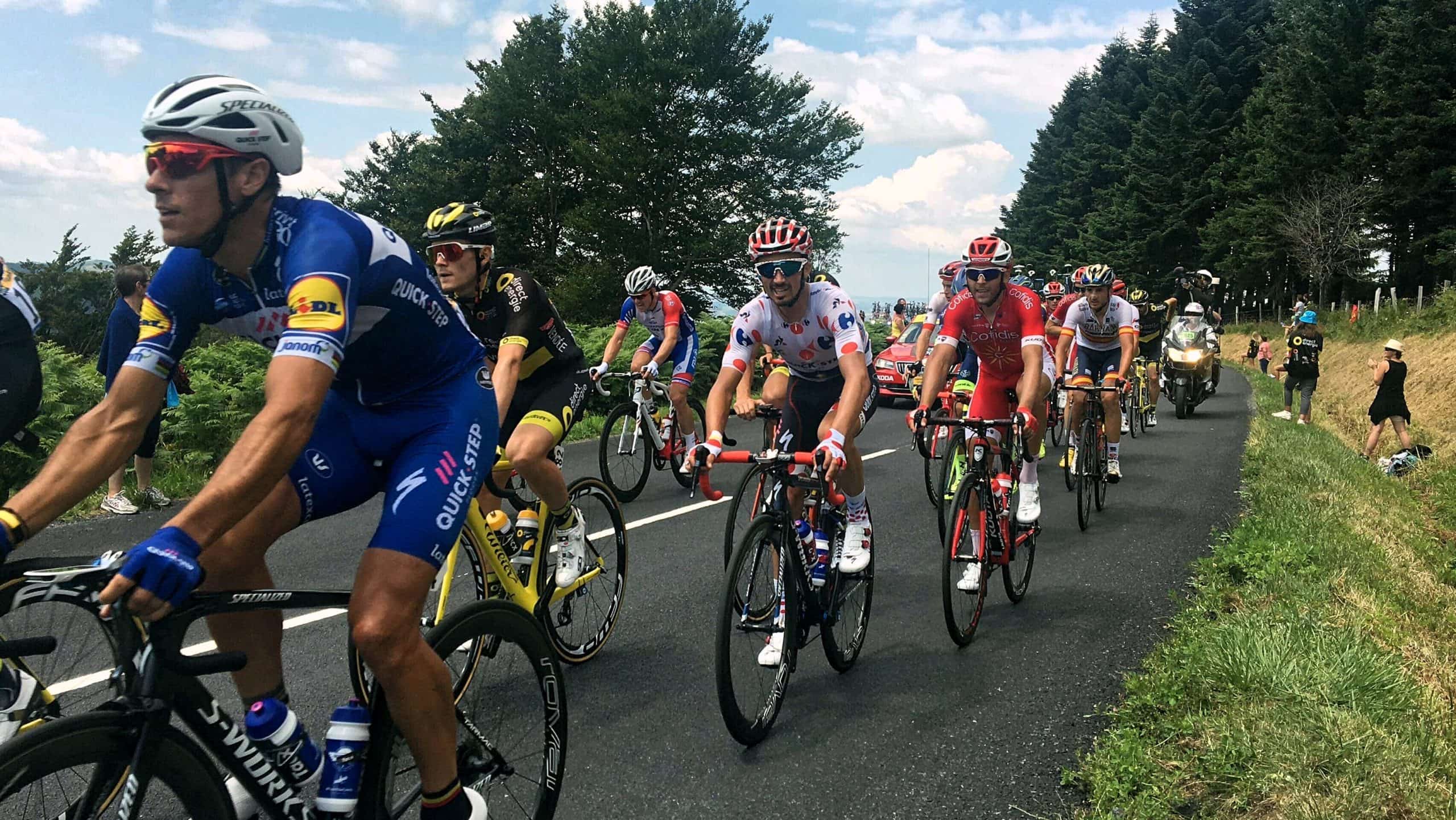
THE FIRST EDITION (1903)
What is now considered the most prestigious competition in cycling actually began as a marketing initiative. The Tour de France was conceived by Géo Lefèvre, a sports journalist for the daily sports paper l’Auto , in order to increase sales and keep up with competitors. The first edition was an instant success, and increased circulation six times over.
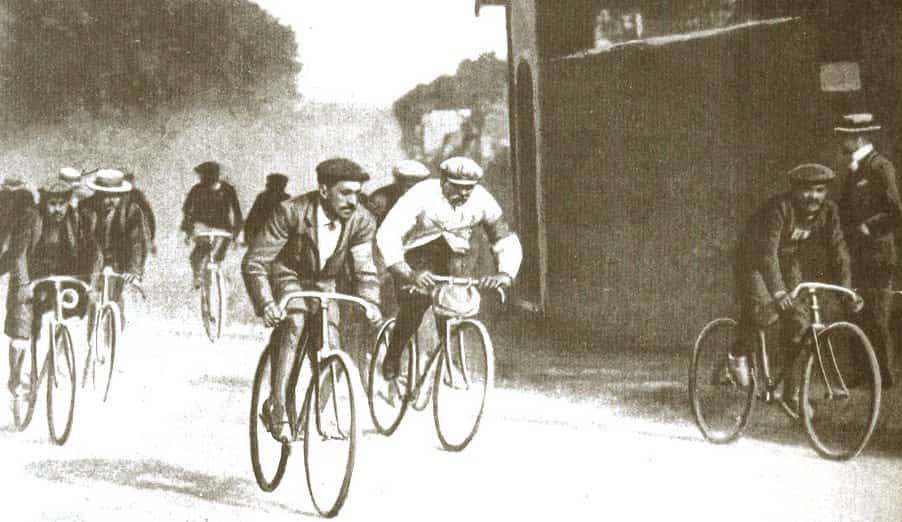
The Tour’s first edition ran from July 1 through July 19, 1903, and was more intensive than the one we know today. It was made up of six stages that more than doubled the distance of any of those in modern editions, which have twenty-one. The 2,428-kilometer route began and ended in Paris, with stops in Lyon, Marseille, Toulouse, Bordeaux and Nantes along the way. It was won by Maurice Garin with a lead of 2:59:31, the largest in the history of the race to this day. He was awarded 20,000 French Francs (€3,000 today). The prize for the 110th edition in 2023 is €500,000.
Practice your French: Watch this video and get first hand accounts of the first Tour de France or visit the National archive website (INA) for their report of the event!
THE TOUR DE FRANCE TODAY
The race has changed significantly over the years, though the format of modern editions have remained the same. Each race is divided into twenty-one day-long stages and two rest days, and takes place over twenty-three days. The route changes every year, with the majority of the route in France, and often crosses borders. In 2023, the route is 3,404 kilometers. The race will take place from July 1 to July 23, and the Grand départ (mass start) will be hosted in Bilbao! You’ll find a map of the complete route here .
There are usually twenty to twenty-two teams, with eight riders each. Every stage is timed, and the rider with the lowest cumulative time is declared the leader and wears the coveted maillot jaune (yellow jersey). This aspect of the competition is the most important, and is called the “general classification”. Other jerseys are awarded to the winners of the mountains, points, and young rider classifications.

The last stage, the Arrivée finale , is largely celebratory, and always ends with the winning rider from the general classification riding a circuit throughout the Champs-Élysées in Paris (sometimes with a glass of champagne in hand!).
VISIT THE TOUR DE FRANCE
From the Grand départ to the Arrivée finale , every city that hosts a stage on the route of the Tour de France will receive waves of visitors and tons of media coverage. It’s considered an honor that’s celebrated with plenty of fanfare.
Since the race is so popular, you’ll want to make your travel arrangements as early as possible. The route is always announced in October of the year prior, and accommodations are booked almost immediately. You’ll have to be quick if you want to get a hotel at the start or finish line, which is a race in and of itself.
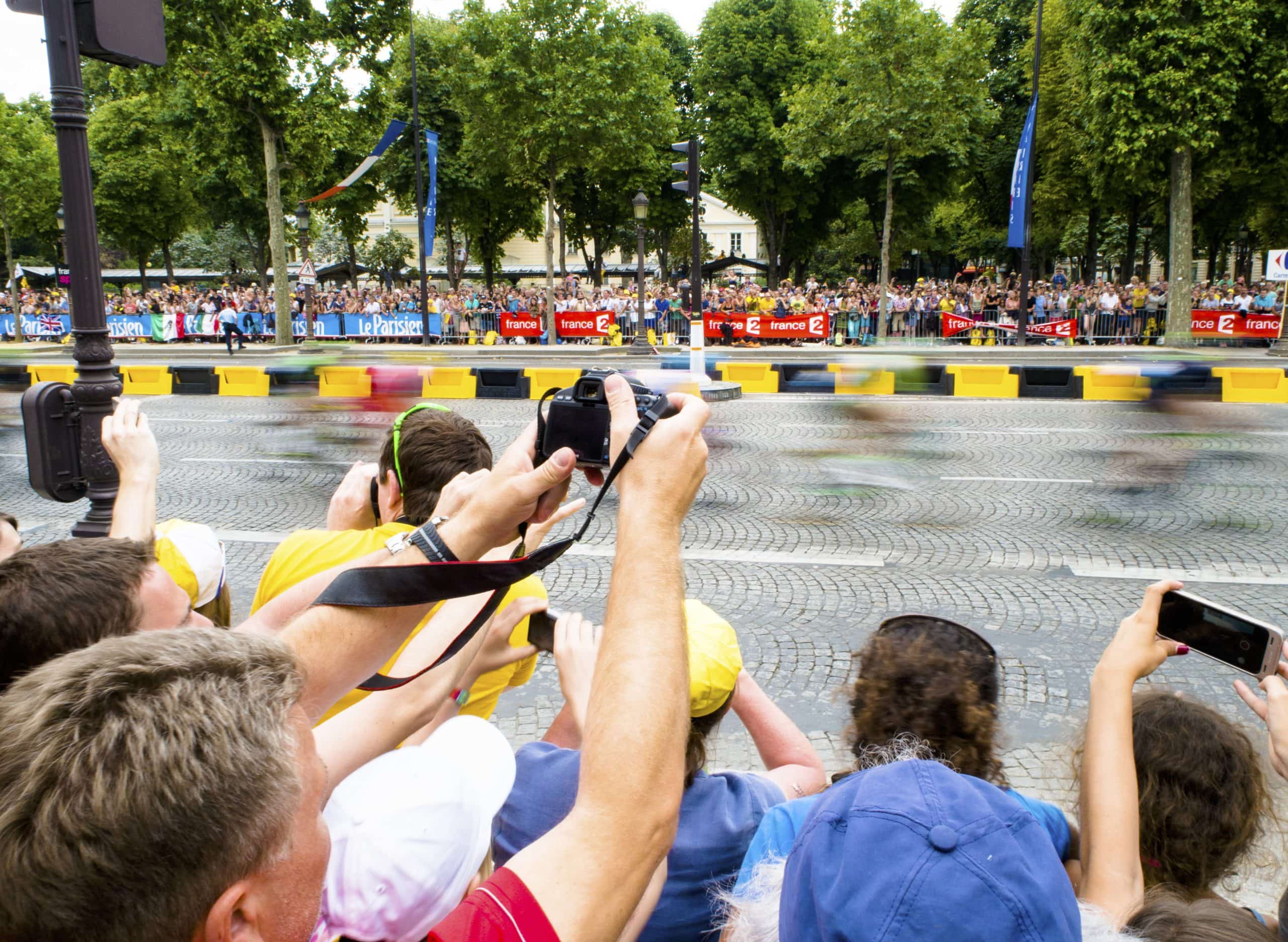
You can expect huge crowds, with the most dedicated spectators arriving hours or even days in advance to get the best view. It’s an exciting opportunity to watch the race up close, and even engage with the riders. Before the stage starts, some riders will take photos and sign autographs for the crowd.
If you want to truly embrace the spirit of the Tour, consider going by bike! Last year, the Tour de France announced a partnership with STRAVA , an app and social platform where athletes can track their routes, time, upload photos, and write notes. You’ll be able to find the best cycling routes along the stages of the race, and follow your favorite cyclists for daily updates.
Planning on visiting in 2023? Get more pro tips and tricks from two cycling enthusiasts here .
NOTABLE MOMENTS AND FUN FACTS:
- The second edition of the Tour de France is infamous for the chaos that ensued. Cheating, sabotage and violence among rival fans and competitors prompted the race’s organizer to publish a reaction in l’Auto declaring that the 1904 edition would be the last, titling it, “THE END”. Maurice Garin would have again been the winner, but was later disqualified for cheating. Practice your French: Watch this video to learn more about the 1904 Tour de France.
- The only times the race did not take place were during the World Wars (1915-18 and 1940-1946). In 2020 it was postponed due to the pandemic, and took place from August 29 through September 20.
- Lance Armstrong’s seven Tour wins were revoked, and no alternate winner was named, meaning from 1999-2005, there are no declared winners. Practice your French: Learn all about the scandal in this French TV program .
- Multiple women’s versions of the Tour have been created, but are challenging to promote and maintain because of a lack of media coverage and funding. The most recent one is called the Tour de France Femmes . The second edition happening in summer 2023 will begin on July 23, the same day the Tour de France ends.
- Egan Barnal’s win in 2019 was one of the most celebrated of recent years, as he is the first Latin American cyclist to win the Tour, and the youngest winner since 1909 and the third-youngest of all time (age 22 years, 196 days).
- The 2023 Tour de France route will visit all five of France’s mountain ranges.
- On average, the Tour de France has 12 million live spectators, and 40 million viewers. You can watch it at home from the US on NBC and Peacock!
French Tip: The French word tour , meaning “tour” or “circuit,” is masculine. When talking about the Tour de France, always use the masculine article, le . When paired with a feminine article ( une , la ), the word tour means “tower” (think: la Tour Eiffel !). Le Tour de France is also referred to as le Tour and La Grande Boucle (“The Big Loop”).
Here’s some vocabulary you can start using today:
- un vélo – a bike
- un·e cycliste – a cyclist
- une équipe – a team
- un casque – a helmet
- un maillot – a jersey
- un parcours – a route
- une étape – a stage
- une course – a race
- la ligne d’arrivée – the finish line
Posted by: Melissa Melendez | --> Category: Culture , Sports Tags: history , paris —
Related Posts

March 08, 2024 Culture
12 Famous French Women Politicians Throughout History
Today's International Women's Day! Check out our list of “femmes politiques” you should know about.

March 01, 2024 Culture
7 Key French Feminists You Should Read
Celebrate International Women’s Month by reading a French feminist’s book!

February 22, 2024 Culture
French Female Artists of the 19th and 20th Centuries
Discover the groundbreaking work of French artists often overlooked by art history!
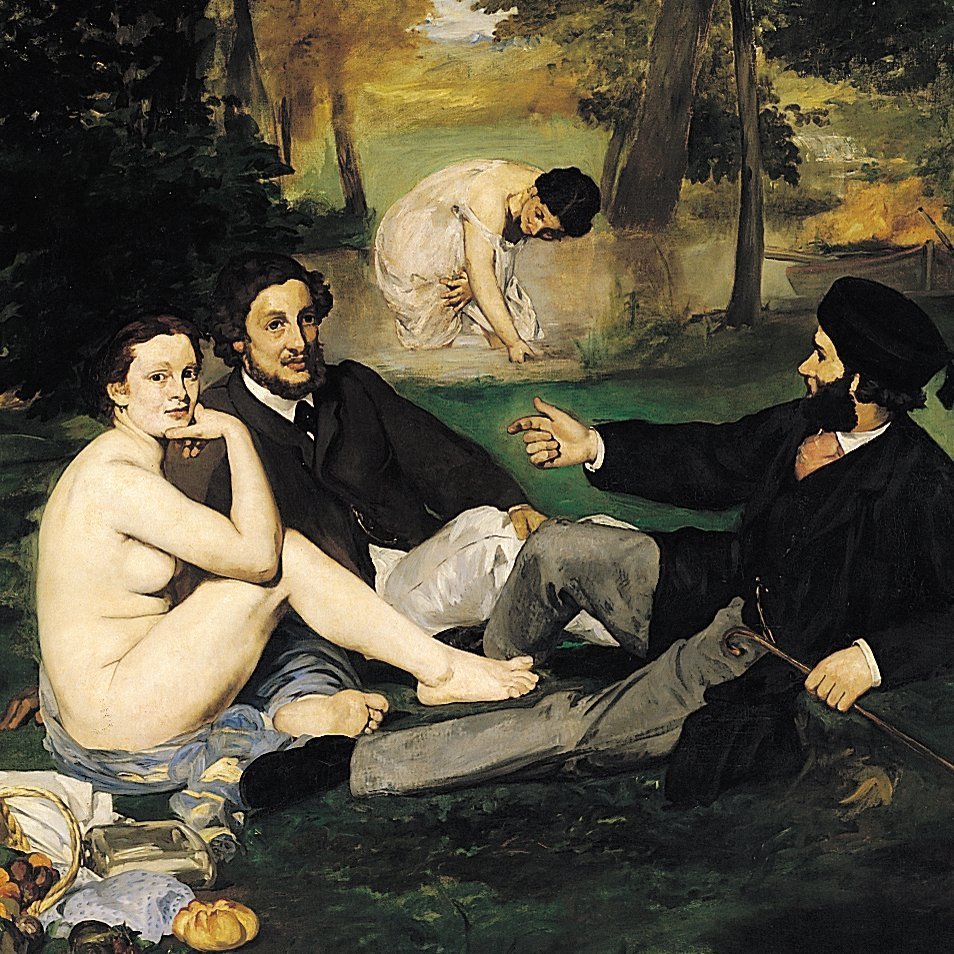
February 21, 2024 Culture
A Feminine Perspective on Art History
Why are women so under-represented in the art world?
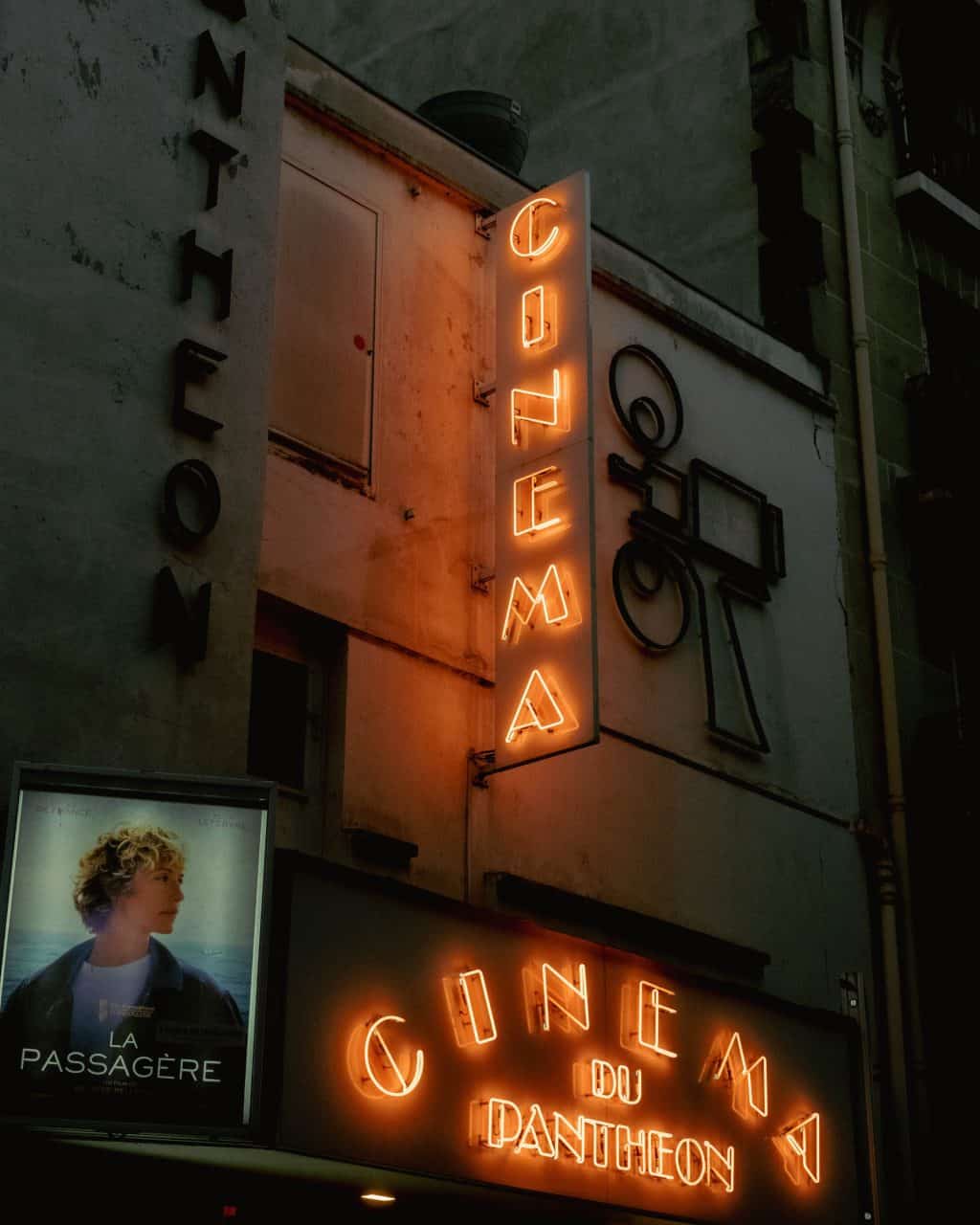
November 03, 2023 TV, Films & Podcasts, Culture
Paris Up Close: Movies Set in the City of Lights
Explore Paris through iconic films that bring the City of Lights to life!

October 13, 2023 Culture
Is it Harder to Make Friends in France?
Find out the differences between French and American friendships you should know about!
Have questions? Need guidance? Check our FAQs page or:
Alternatively you can send us an email at [email protected] or use the form below
I have a question about General Inquiry NYC classes LA classes Online classes Private lessons Workshops Corporate classes Other
Your Message

Get Fun Kids on your new speaker!

Bored? Get the FREE Fun Kids app!

Check out all Fun Kids podcasts

All new Fun Kids Science Weekly
Top 10 facts.
From the Tudors to rocks to fish, we have all the best facts right here!
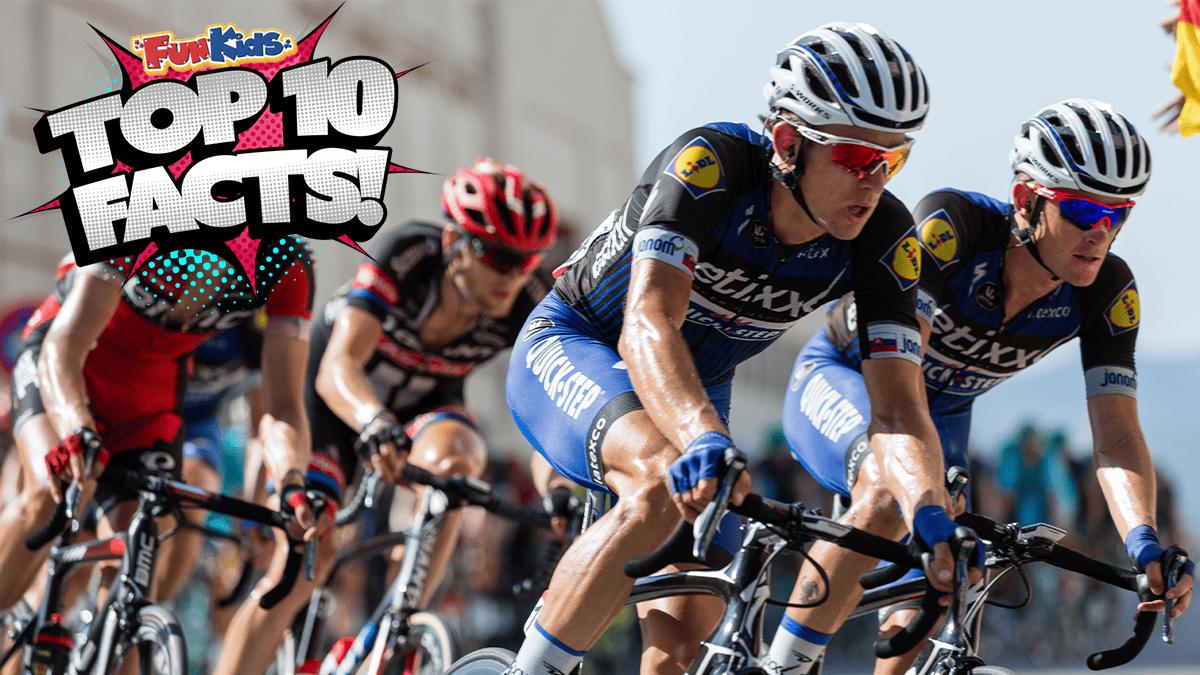
Top 10 Facts About Tour de France!
THEY CYCLE HOW FAR?!
This three week cycle race is the most watched sporting event in the world!
There is so much to know about the competition!
Here are 10 things you might not know about the Tour de France…
1. The Tour de France doesn’t start in France…
Sounds strange, doesn’t it?
More to click...
- Top 10 Facts About Police!
- Top 10 Facts About Antarctica!
- Top 10 Facts About FIFA Video Games!
The start of the course is known as the Grand Départ.
Since the 1950s it has typically taken place in a different town each year, and since the 1970s it has been common to award the Grand Départ to cities outside France in order to increase international viewers!
The 2023 race is starting in Spain!
2. The route length changes every year.
The race takes place over 23 days with only 2 days to rest!
The longest Tour de France in history was held in 1926, when the racers had to cycle 5,745 km!
Thats the equivalent of nearly 63 thousand football pitches!
3. You can win different prizes throughout the race.
Not only can you win the overrall race, but there are also prizes for those that come first each day, and for those who do really well in different terrain!
These are called jerseys. There are four up for grabs!
Yellow – This is for the person in first place by the end of the day!
Green – This jersey is known as the sprinters jersey. Racers can collect points during the race by winnign mini challenges. These all add up to see who wins the green jersey
Polka Dot – This jersey is for the person who can cycle up the mountains the quickest!
White – The white jersey is for the best rider under 25 years old who is near the front of the race every day!

4. The first race was actually a publicity stunt!
The first Tour de France was held in 1903!
It was set up and sponsored by French sports paper L’Auto , which hoped a tough new endurance race around the country would capture the public’s attention and sell more newspapers.
It was a hit and is still going strong 120 years later!
5. There is a women’s race too!
There have been attempts to create a women’s equivalent to the Tour de France. Although there was a competition between 1984 and 1989 it suffered from a lack of funding and popularity.
However, in 2022 a new competition was created, Tour de France Femmes!
It lasts 8 days and starts on the last day of the men’s race!
6. The race is very difficult and dangerous.
Bike crashes are a common occurrence in the Tour de France, with riders often coming down hard during the race.
The riders are travelling at an average of 25mph, navigating tight turns which can lead to crashes!
Additionally, the terrain of the race course can be treacherous, with riders having to contend with rough roads and sometimes even cobblestones.
Members of the public are also lining the sides of the street to cheer the riders on. Sometimes these spectators disrupt the race and cause crashes!
7. They use more than 1 bike to complete the course.
It turns out that the Tour de France isn’t just a test of physical endurance for the riders; the Tour de France bikes suffer too.
Each rider has multiple bikes to choose from. This includes light weight ones that are better at climbing mountains and more aerodynamic ones that are better for sprinting!
And don’t forget the tyres!
During the three-week challenge, riders combined can wear out a total of 792 tires.
8. The athletes need a lot of energy to compete.
123,900 is the average amount of calories each rider needs to consume over the course of the three weeks.
That is equivalent to 495 croissants, 152 full English breakfasts or 1,180 bananas!
9. It is a team sport… sort of.
There are 22 teams that race, each with 8 riders, and they all have to wear the same kit.
The team all help eachother to win each day.
Although a single rider will win the jersey, it is seen as a team success as they have had to ride together, using each other to protect them from the wind other cyclists.
10. The riders get very sweaty.
The competitors are exercising for every day for nearly 3 weeks!
They get very sweaty, particularly when its sunny!
Cycling the entire course generates enough sweat to flush a toilet 39 times – gross but true!
Leaving Fun Kids?
- Subscribers
- EDITORS PICK // TOP TWO CYCLING LIGHTS FOR 2023
- TOP TWO CYCLING LIGHTS FOR 2023
- TECH TUESDAY: DEALINGS WITH SHIMANO DI2
- ALL ABOUT WIND TRAINERS AND INDOOR CYCLING
- WHAT YOUR PRESTA VALVE CAPS ARE ACTUALLY FOR
- BIKE TEST: ALLIED ECHO
- ALL ABOUT AIR & HOW-TO FIGHT FLAT TIRES
- PINARELLO F SERIES – WHAT TO KNOW ABOUT THE ALL-NEW RACE BIKES
- CANNONDALE UNVEILS SLEEK 2023 ROAD LINE-UP
- THROWBACK THURSDAY, 2015: ALEX DOWSETT BREAKS THE HOUR RECORD

2022 TOUR DE DE FRANCE FACTS & FIGURES

We’re now just days away from the world’s greatest sporting spectacle – Le Tour de France – kicking off on July 1 in Copenhagen. Cyclists everywhere are voicing their opinions on which teams will prevail and if previous two-time winner Tadej Pogacar can turn his (and Colnago’s) annual July foray into a three-peat. And sure, while the purse for winning the race (a paltry $562,00) pales in effort/benefit ratio compared to every other sport, there is no taking away from the grandiose setting and physical drama that will take place.

Below are some fun facts and figures about the Tour. In addition to so many alternative venues, in addition to multiple streaming services, this year’s race will be televised on NBC’s USA and CNBC channels. Best of all is that both Phil Liggett and Bob Roll will once again be sharing their cramped commentary quarters along the race route (versus the previous Covid-induced separate studios in America and London).

Get real time updates directly on you device, subscribe now.
FIRST LOOK: BRIDGE BIKE WORKS SURVEYOR
BIANCHI OLTRE XR4 REVIEW
THE CRAZY WAY THAT THE TOUR DE FRANCE FOUGHT THE HEAT
BREAKING NEWS! NAIRO QUINTANA CAUGHT USING BANNED SUBSTANCE
TOUR DE FRANCE FEMMES PULLS COMPETITIVE TV AUDIENCE
2022 TOUR DE FRANCE RESULTS
Comments are closed.
We and our {{count}} partners use cookies and other tracking technologies to improve your experience on our website. We may store and/or access information on a device and process personal data, such as your IP address and browsing data, for personalised advertising and content, advertising and content measurement, audience research and services development. Additionally, we may utilize precise geolocation data and identification through device scanning.
Please note that your consent will be valid across all our subdomains. You can change or withdraw your consent at any time by clicking the “Consent Preferences” button at the bottom of your screen. We respect your choices and are committed to providing you with a transparent and secure browsing experience.
Privacy Overview
- Most purposes explained in this notice rely on the storage or accessing of information from your device when you use an app or visit a website. For example, a vendor or publisher might need to store a cookie on your device during your first visit on a website, to be able to recognise your device during your next visits (by accessing this cookie each time).
- A car manufacturer wants to promote its electric vehicles to environmentally conscious users living in the city after office hours. The advertising is presented on a page with related content (such as an article on climate change actions) after 6:30 p.m. to users whose non-precise location suggests that they are in an urban zone.
- A large producer of watercolour paints wants to carry out an online advertising campaign for its latest watercolour range, diversifying its audience to reach as many amateur and professional artists as possible and avoiding showing the ad next to mismatched content (for instance, articles about how to paint your house). The number of times that the ad has been presented to you is detected and limited, to avoid presenting it too often.
- If you read several articles about the best bike accessories to buy, this information could be used to create a profile about your interest in bike accessories. Such a profile may be used or improved later on, on the same or a different website or app to present you with advertising for a particular bike accessory brand. If you also look at a configurator for a vehicle on a luxury car manufacturer website, this information could be combined with your interest in bikes to refine your profile and make an assumption that you are interested in luxury cycling gear.
- An apparel company wishes to promote its new line of high-end baby clothes. It gets in touch with an agency that has a network of clients with high income customers (such as high-end supermarkets) and asks the agency to create profiles of young parents or couples who can be assumed to be wealthy and to have a new child, so that these can later be used to present advertising within partner apps based on those profiles.
- An online retailer wants to advertise a limited sale on running shoes. It wants to target advertising to users who previously looked at running shoes on its mobile app. Tracking technologies might be used to recognise that you have previously used the mobile app to consult running shoes, in order to present you with the corresponding advertisement on the app.
- A profile created for personalised advertising in relation to a person having searched for bike accessories on a website can be used to present the relevant advertisement for bike accessories on a mobile app of another organisation.
- You read several articles on how to build a treehouse on a social media platform. This information might be added to a profile to mark your interest in content related to outdoors as well as do-it-yourself guides (with the objective of allowing the personalisation of content, so that for example you are presented with more blog posts and articles on treehouses and wood cabins in the future).
- You have viewed three videos on space exploration across different TV apps. An unrelated news platform with which you have had no contact builds a profile based on that viewing behaviour, marking space exploration as a topic of possible interest for other videos.
- You read articles on vegetarian food on a social media platform and then use the cooking app of an unrelated company. The profile built about you on the social media platform will be used to present you vegetarian recipes on the welcome screen of the cooking app.
- You have viewed three videos about rowing across different websites. An unrelated video sharing platform will recommend five other videos on rowing that may be of interest to you when you use your TV app, based on a profile built about you when you visited those different websites to watch online videos.
- You have clicked on an advertisement about a “black Friday” discount by an online shop on the website of a publisher and purchased a product. Your click will be linked to this purchase. Your interaction and that of other users will be measured to know how many clicks on the ad led to a purchase.
- You are one of very few to have clicked on an advertisement about an “international appreciation day” discount by an online gift shop within the app of a publisher. The publisher wants to have reports to understand how often a specific ad placement within the app, and notably the “international appreciation day” ad, has been viewed or clicked by you and other users, in order to help the publisher and its partners (such as agencies) optimise ad placements.
- You have read a blog post about hiking on a mobile app of a publisher and followed a link to a recommended and related post. Your interactions will be recorded as showing that the initial hiking post was useful to you and that it was successful in interesting you in the related post. This will be measured to know whether to produce more posts on hiking in the future and where to place them on the home screen of the mobile app.
- You were presented a video on fashion trends, but you and several other users stopped watching after 30 seconds. This information is then used to evaluate the right length of future videos on fashion trends.
- The owner of an online bookstore wants commercial reporting showing the proportion of visitors who consulted and left its site without buying, or consulted and bought the last celebrity autobiography of the month, as well as the average age and the male/female distribution of each category. Data relating to your navigation on its site and to your personal characteristics is then used and combined with other such data to produce these statistics.
- An advertiser wants to better understand the type of audience interacting with its adverts. It calls upon a research institute to compare the characteristics of users who interacted with the ad with typical attributes of users of similar platforms, across different devices. This comparison reveals to the advertiser that its ad audience is mainly accessing the adverts through mobile devices and is likely in the 45-60 age range.
- A technology platform working with a social media provider notices a growth in mobile app users, and sees based on their profiles that many of them are connecting through mobile connections. It uses a new technology to deliver ads that are formatted for mobile devices and that are low-bandwidth, to improve their performance.
- An advertiser is looking for a way to display ads on a new type of consumer device. It collects information regarding the way users interact with this new kind of device to determine whether it can build a new mechanism for displaying advertising on this type of device.
- A travel magazine has published an article on its website about the new online courses proposed by a language school, to improve travelling experiences abroad. The school’s blog posts are inserted directly at the bottom of the page, and selected on the basis of your non-precise location (for instance, blog posts explaining the course curriculum for different languages than the language of the country you are situated in).
- A sports news mobile app has started a new section of articles covering the most recent football games. Each article includes videos hosted by a separate streaming platform showcasing the highlights of each match. If you fast-forward a video, this information may be used to select a shorter video to play next.
- An advertising intermediary delivers ads from various advertisers to its network of partnering websites. It notices a large increase in clicks on ads relating to one advertiser, and uses data regarding the source of the clicks to determine that 80% of the clicks come from bots rather than humans.
- Clicking on a link in an article might normally send you to another page or part of the article. To achieve this, 1°) your browser sends a request to a server linked to the website, 2°) the server answers back (“here is the article you asked for”), using technical information automatically included in the request sent by your device, to properly display the information / images that are part of the article you asked for. Technically, such exchange of information is necessary to deliver the content that appears on your screen.
- Store and/or access information on a device
- Use limited data to select advertising
- Create profiles for personalised advertising
- Use profiles to select personalised advertising
- Measure advertising performance
- Measure content performance
- Understand audiences through statistics or combinations of data from different sources
- Develop and improve services
- Ensure security, prevent and detect fraud, and fix errors
- Deliver and present advertising and content
- Match and combine data from other data sources
- Link different devices
- Identify devices based on information transmitted automatically
- IP addresses
- Device identifiers
- Probabilistic identifiers
- Browsing and interaction data
- Non-precise location data
- Users’ profiles
- Privacy choices
- Tracking method : Cookies
- Maximum duration of cookies : 90 days
- Cookie lifetime is being refreshed
- Actively scan device characteristics for identification
- Device characteristics
- Tracking method : Cookies and others.
- Maximum duration of cookies : 365 days
- Use precise geolocation data
- Authentication-derived identifiers
- Precise location data
- Maximum duration of cookies : 30 days
- Cookie lifetime is not being refreshed
- Measure advertising performance ( Data Retention Period : 90 days )
- Maximum duration of cookies : 395 days
- User-provided data
- Maximum duration of cookies : 396 days
- Maximum duration of cookies : 394 days
- Create profiles to personalise content
- Maximum duration of cookies : 17 days
- Use profiles to select personalised content
- Use limited data to select content
- Maximum duration of cookies : 540 days
- Maximum duration of cookies : 3628 days
- Maximum duration of cookies : 180 days
- Maximum duration of cookies : 183 days
- Maximum duration of cookies : 397 days
- Maximum duration of cookies : 182 days
- Use profiles to select personalised advertising ( Data Retention Period : 180 days )
- Maximum duration of cookies : 390 days
- Maximum duration of cookies : 3650 days
- Maximum duration of cookies : 45 days
- Create profiles for personalised advertising ( Data Retention Period : 365 days )
- Use profiles to select personalised advertising ( Data Retention Period : 365 days )
- Measure advertising performance ( Data Retention Period : 365 days )
- Maximum duration of cookies : 730 days
- Maximum duration of cookies : 720 days
- Maximum duration of cookies : 21 days
- Maximum duration of cookies : 2555 days
- Maximum duration of cookies : 400 days
- Maximum duration of cookies : 273 days
- Maximum duration of cookies : 60 days
- Maximum duration of cookies : 393 days
- Create profiles for personalised advertising ( Data Retention Period : 90 days )
- Use profiles to select personalised advertising ( Data Retention Period : 90 days )
- Use profiles to select personalised advertising ( Data Retention Period : 390 days )
- Maximum duration of cookies : 2190 days
- Maximum duration of cookies : 364 days
- Use profiles to select personalised advertising ( Data Retention Period : 4320 days )
- Understand audiences through statistics or combinations of data from different sources ( Data Retention Period : 90 days )
- Develop and improve services ( Data Retention Period : 90 days )
- Maximum duration of cookies : 366 days
- Maximum duration of cookies : 120 days
- Maximum duration of cookies : 403 days
- Use profiles to select personalised advertising ( Data Retention Period : 0 days )
- Maximum duration of cookies : 729 days
- Maximum duration of cookies : 62 days
- Maximum duration of cookies : 1825 days
- Maximum duration of cookies : 25 days
- Maximum duration of cookies : 0 days
- Maximum duration of cookies : 1 days
- Maximum duration of cookies : 50 days
- Maximum duration of cookies : 14 days
- Maximum duration of cookies : 913 days
- Create profiles for personalised advertising ( Data Retention Period : 395 days )
- Use profiles to select personalised advertising ( Data Retention Period : 395 days )
- Create profiles to personalise content ( Data Retention Period : 395 days )
- Use profiles to select personalised content ( Data Retention Period : 395 days )
- Measure advertising performance ( Data Retention Period : 395 days )
- Measure content performance ( Data Retention Period : 1125 days )
- Understand audiences through statistics or combinations of data from different sources ( Data Retention Period : 1125 days )
- Develop and improve services ( Data Retention Period : 1125 days )
- Maximum duration of cookies : 18 days
- Maximum duration of cookies : 93 days
- Maximum duration of cookies : 386 days
- Maximum duration of cookies : 89 days
- Maximum duration of cookies : 1095 days
- Maximum duration of cookies : 500 days
- Maximum duration of cookies : 91 days
- Maximum duration of cookies : 912 days
- Maximum duration of cookies : 370 days
- Maximum duration of cookies : 9 days
- Create profiles for personalised advertising ( Data Retention Period : 10 days )
- Maximum duration of cookies : 360 days
- Maximum duration of cookies : 15 days
- Maximum duration of cookies : 31 days
- Maximum duration of cookies : 1157 days
- Maximum duration of cookies : 30000 days
- Maximum duration of cookies : 7 days
- Maximum duration of cookies : 730000 days
- Maximum duration of cookies : 300 days
- Maximum duration of cookies : 28 days
- Use profiles to select personalised advertising ( Data Retention Period : 7 days )
- Measure advertising performance ( Data Retention Period : 7 days )
- Create profiles for personalised advertising ( Data Retention Period : 0 days )
- Create profiles to personalise content ( Data Retention Period : 0 days )
- Use profiles to select personalised content ( Data Retention Period : 0 days )
- Measure advertising performance ( Data Retention Period : 0 days )
- Measure content performance ( Data Retention Period : 730 days )
- Understand audiences through statistics or combinations of data from different sources ( Data Retention Period : 730 days )
- Develop and improve services ( Data Retention Period : 730 days )
- Maximum duration of cookies : 2485 days
- Maximum duration of cookies : 2 days
- Maximum duration of cookies : 4 days
- Maximum duration of cookies : 146 days
- Maximum duration of cookies : 13 days
- Maximum duration of cookies : 356 days
- Create profiles for personalised advertising ( Data Retention Period : 180 days )
- Create profiles to personalise content ( Data Retention Period : 90 days )
- Develop and improve services ( Data Retention Period : 120 days )
- Maximum duration of cookies : 358 days
- Maximum duration of cookies : 57 days
- Create profiles to personalise content ( Data Retention Period : 91 days )
- Use profiles to select personalised content ( Data Retention Period : 91 days )
- Measure advertising performance ( Data Retention Period : 91 days )
- Understand audiences through statistics or combinations of data from different sources ( Data Retention Period : 91 days )
- Develop and improve services ( Data Retention Period : 4320 days )
- Maximum duration of cookies : 3652 days
- Maximum duration of cookies : 56 days
- Maximum duration of cookies : 3000 days

IMAGES
VIDEO
COMMENTS
1- The 1st Tour de France Was Originally A Sales Gimmick! In November of 1902, Geo Lefevre, a journalist from the newspaper L'Auto, had an idea to boost newspaper circulation. The idea was the Tour de France. Two months later, in January of 1903, the first Tour de France was had, but the circumstances and details were very different from today.
Check out these 23 fun facts to learn more about the largest sporting event in the world—one for each day of the race. 1. The Longest Tour. 1 of 24. Photo Credit: Anders. The length of the 2017 Tour route is 2,200 miles. The 1926 edition was the longest route in history, totaling 3,570 miles.
806 extraordinary facts and feats that paved the way for Tour de France Femmes. 5. The only Australian Tour de France winner. Cadel Evans may not have had the same quality of legend attached to ...
3. The first Tour de France was held in 1903 as a way to sell more newspapers. 4. In 1987, Greg Lemond was the first American to ever win the Tour de France. 5. There is a separate Tour de France ...
Here are 23 amazing facts you probably didn't know about the Tour de France. 1. The race is nicknamed 'La Grande Boucle' which means 'the big loop' and refers to the route that takes cyclists around France. 2. The average cyclist burns between 4,000 and 5,000 calories during each stage of the race. That's a whopping 123,900 calories ...
The Best Tour de France Facts. The Tour de France is famous worldwide. It is an intense cycling competition that lasts for weeks, and that has a huge fanbase. I have 30 Tour de France facts for you, starting with the 20 general best ones. 1. The Tour de France is one of the most coveted sports event in the world
Source: wikipedia, Image: wikipedia. 2. If the pace is slow riders are allowed to push ahead and stop to meet family. They can't use the lead to win the stage though! Source: wikipedia, Image: wikipedia. 1. Four riders have died during the race. One of them died taking a swim break between stages.
In this video, we will list a few of the weirder facts you may not know about The Tour de France. We've also enlisted the help of GCN+'s own Cillian Kelly to dive into some of the lesser-known historical facts of this crazy race. 0:00 - Intro. 1:12 - Podium dress code. 1:36 - Keeping cool. 2:11 - Unwritten rules. 3:19 - Historical facts.
6. France, unsurprisingly, is the most decorated nation in the race. 7. Eddy Merckx holds the record for most stage wins, with 34 in total. 8. The Tour De France is likely to be the most-watched sporting event on the planet. In total, it is said to be watched by around 12 million people each year!
The Tour de France, the most fantastic race on earth. For the month of July, cycling fans are glued to the action. In this video, we will list a few of the w...
9. Prize money. 21 stages, 3,404 km (2,127 mi), 22 teams, 176 riders, 1 winner. The rider who outlasts the rest at the 2023 Tour de France, and can manage the climbs, and has the lowest overall time will take home an incredible €500,000 ($535,000)! 10.
A Family Affair. 11 of 12. A fan of French cyclist Thomas Voeckler stands on top of his car during the fourth stage of the Tour de France cycling race over 214.5 kilometers (133.3 miles) with start in Abbeville and finish in Rouen, France, Wednesday July 4, 2012.
Taking a Train (1904) 7 of 8. It's unfortunate that cheating has become synonymous with the Tour, but the practice goes back all the way to the inception of the multi-stage race. In 1904, the second Tour de France, there were a mere six stages that each measured between 167 and 293 miles. Unfortunately, such gruelingly long stages made cheating ...
Chocolate Made the Polka-Dot Jersey. The reward for the king of the mountains, aka the best climber during the Tour de France, is the polka-dot jersey. It was first awarded in 1975, and the dots ...
The Tour de France is a world-famous endurance and speed race held annually. It involves a 23-day tour through different countries but always involving and ending in France. Covering approximately 2,200 miles, It is the longest cycle race in the world!Here are some fun facts about the Tour de France to help clue you up on this world-famous spectacle.. 1.
3. The youngest cyclist to win the Tour de France was named Henri Cornet, who raced in the second edition of the race in 1904. Henri Cornet took the winning title at the impressive age of just 19 years old!
Maurice Garin, winner of the first Tour de France standing on the right. Photo: Wikipedia tour de france facts You probably didn't know. This year's Tour de France has been one of incredible drama, full of high stakes gambles, shock withdrawals and spectacular crashes.. But when you start looking back through Tour de France history, you'll see that such incredible happenings are pretty ...
The Tour de France is a prestigious cycling race that covers over 3,500 kilometers and lasts for three weeks, showcasing the beauty of France through 21 stages. The race attracts millions of spectators and legendary champions, with a global audience of millions tuning in to watch the thrilling competition unfold.
Tour de France winners - the facts. France has had more winners than any other country (36) but has not had an overall win since 1985. The record for the most number of Tour de France wins was held by Lance Armstrong (7 wins) but he was stripped of his titles in 2012 due to allegations of performance enhancing drugs being involved. The title ...
Tour de France, the world's most prestigious and most difficult bicycle race.Of the three foremost races (the others being the Giro d'Italia and the Vuelta a España), the Tour de France attracts the world's best riders. Staged for three weeks each July—usually in some 20 daylong stages—the Tour typically comprises 20 professional teams of 9 riders each and covers some 3,600 km ...
French Tip: The French word tour, meaning "tour" or "circuit," is masculine. When talking about the Tour de France, always use the masculine article, le. When paired with a feminine article (une, la), the word tour means "tower" (think: la Tour Eiffel!). Le Tour de France is also referred to as le Tour and La Grande Boucle ("The ...
The 2023 race is starting in Spain! 2. The route length changes every year. Embed from Getty Images. The race takes place over 23 days with only 2 days to rest! The longest Tour de France in history was held in 1926, when the racers had to cycle 5,745 km! Thats the equivalent of nearly 63 thousand football pitches! 3.
2022 TOUR DE DE FRANCE FACTS & FIGURES. We're now just days away from the world's greatest sporting spectacle - Le Tour de France - kicking off on July 1 in Copenhagen. Cyclists everywhere are voicing their opinions on which teams will prevail and if previous two-time winner Tadej Pogacar can turn his (and Colnago's) annual July foray ...